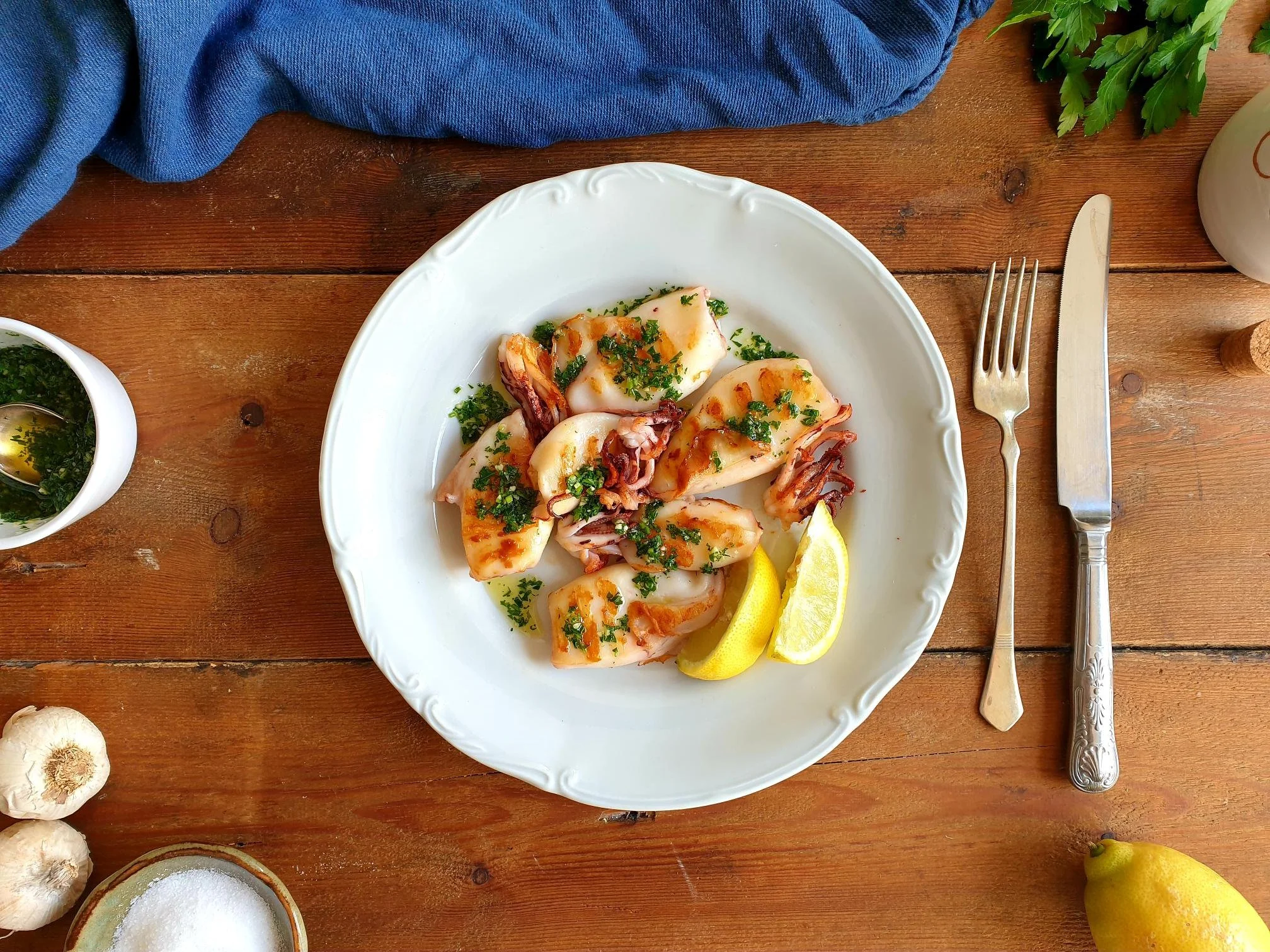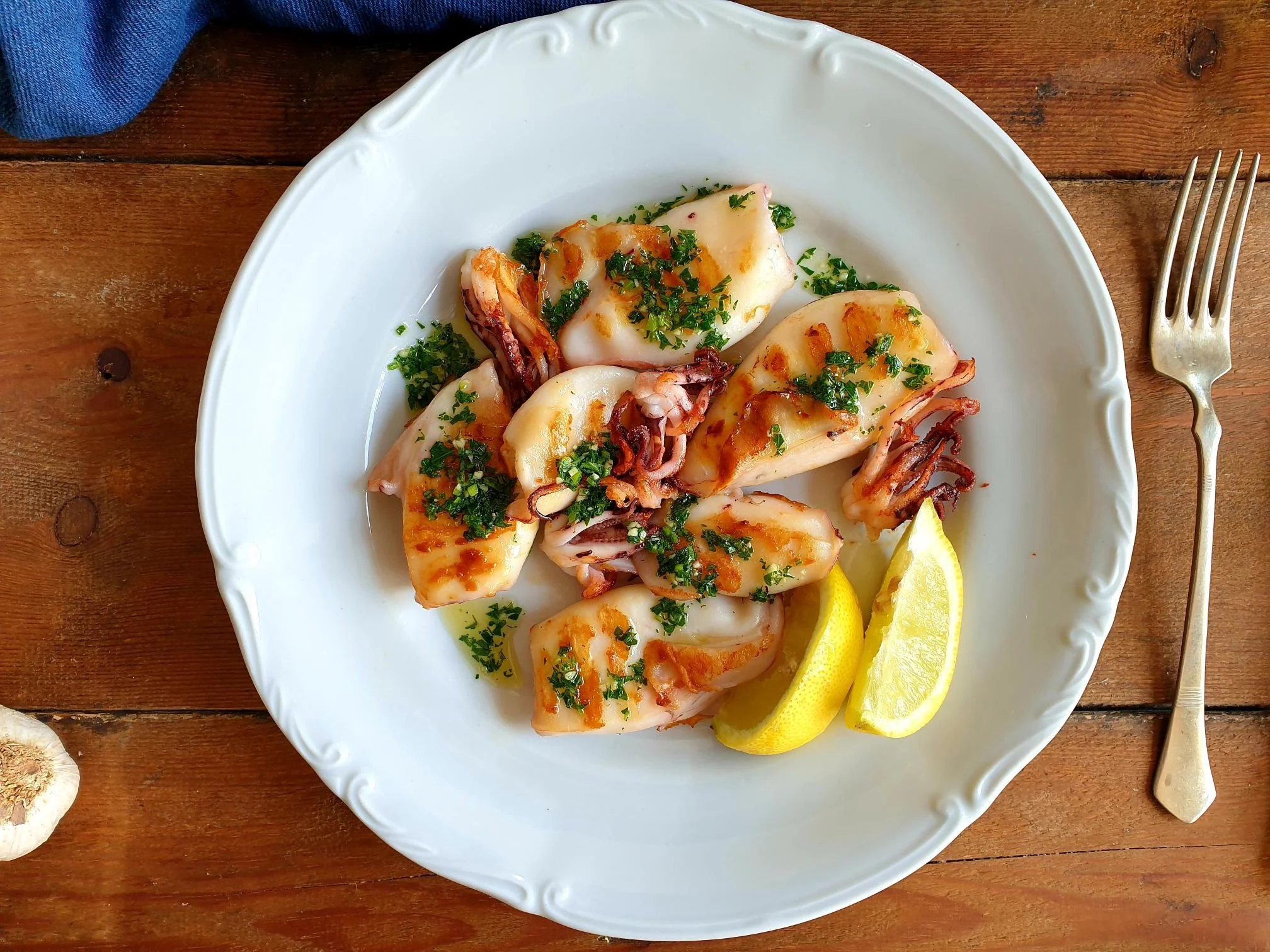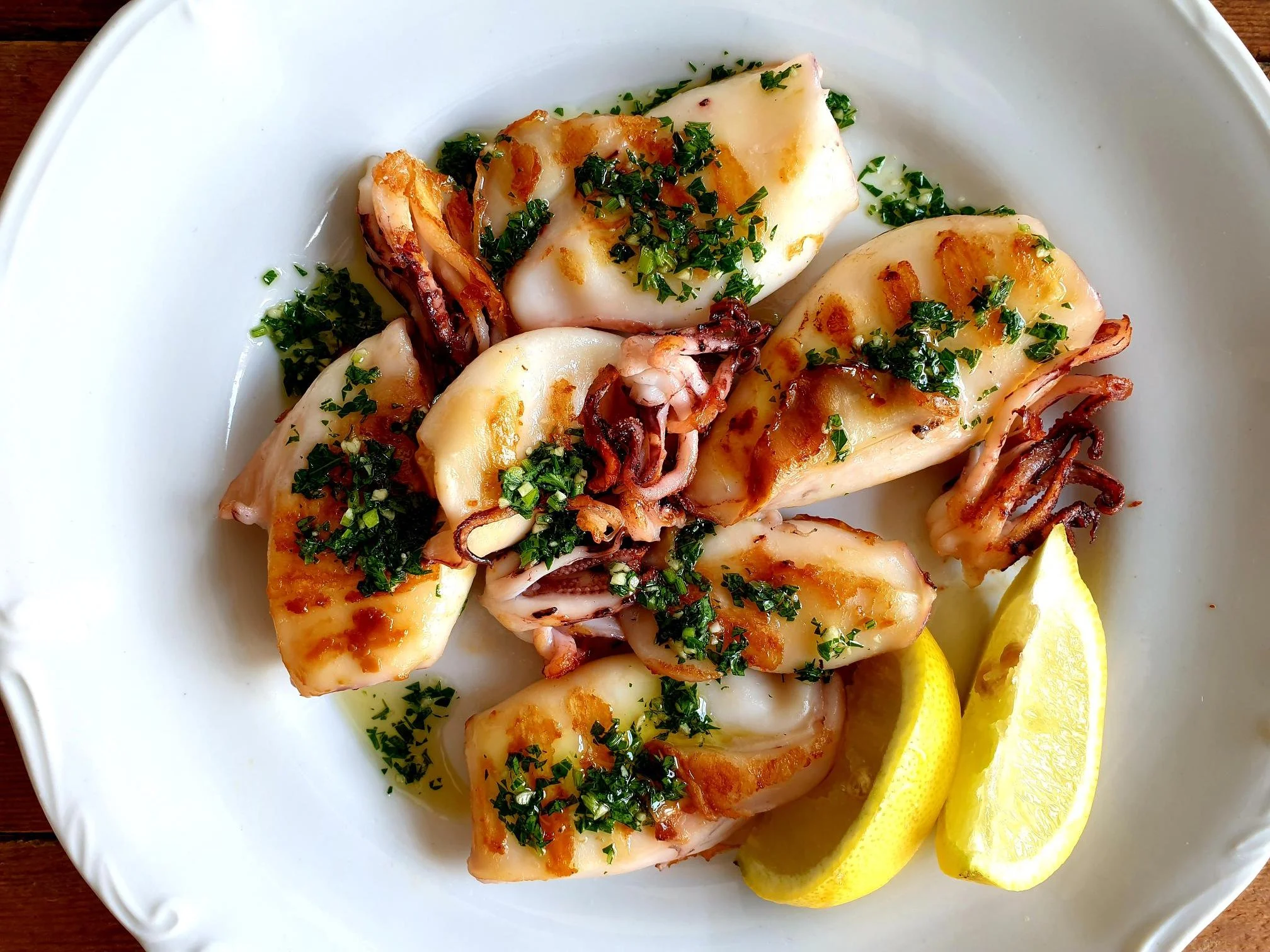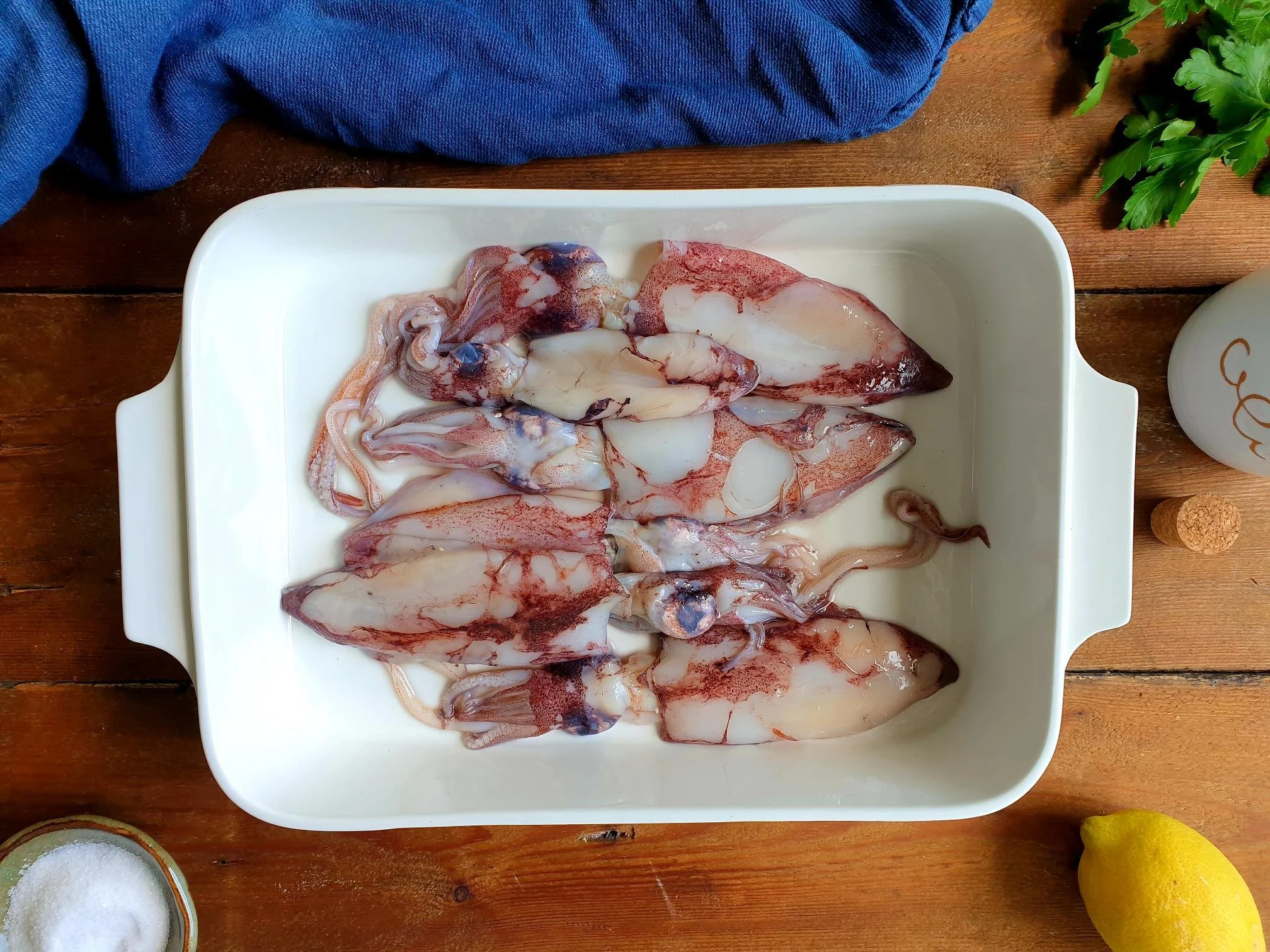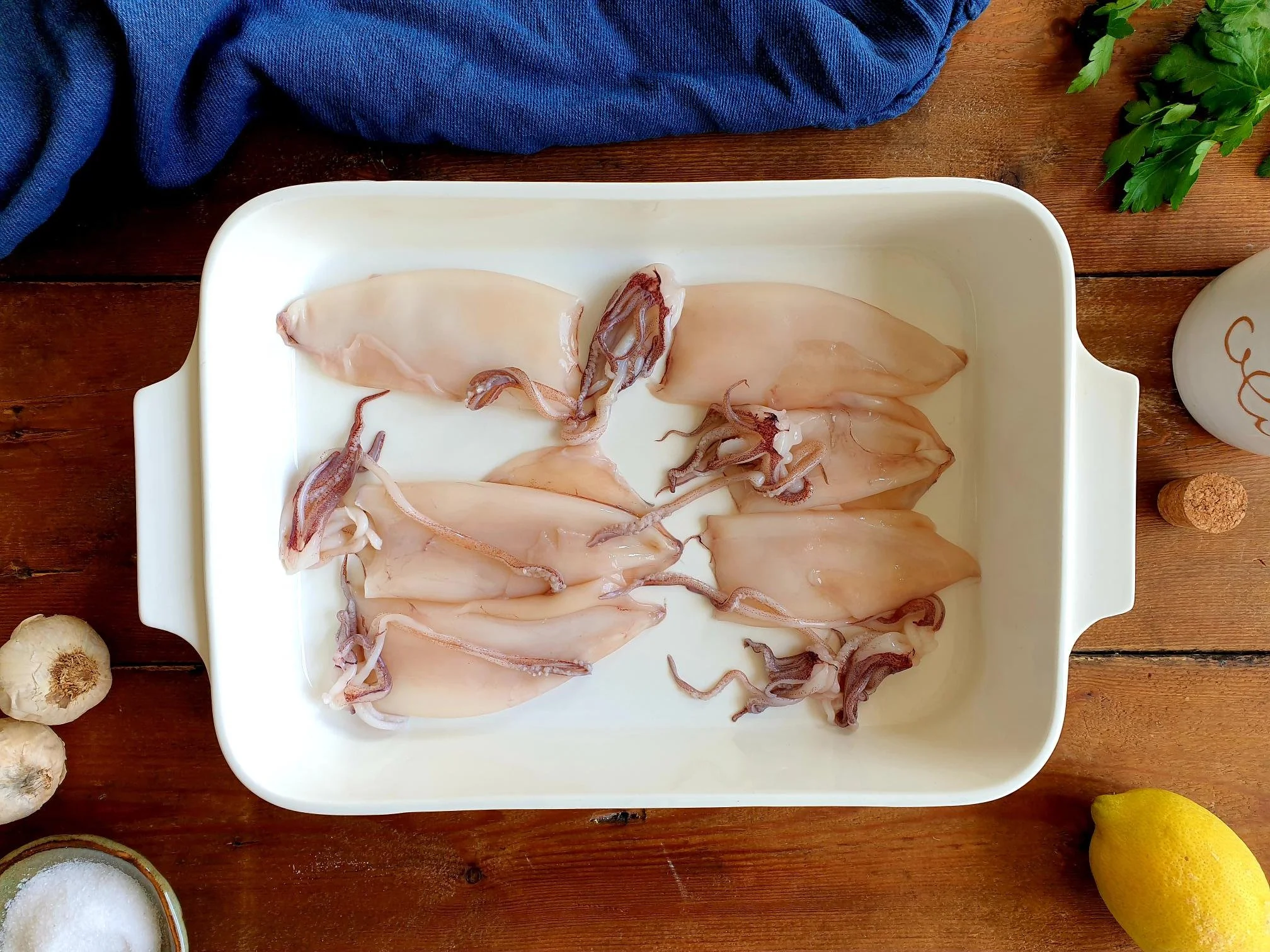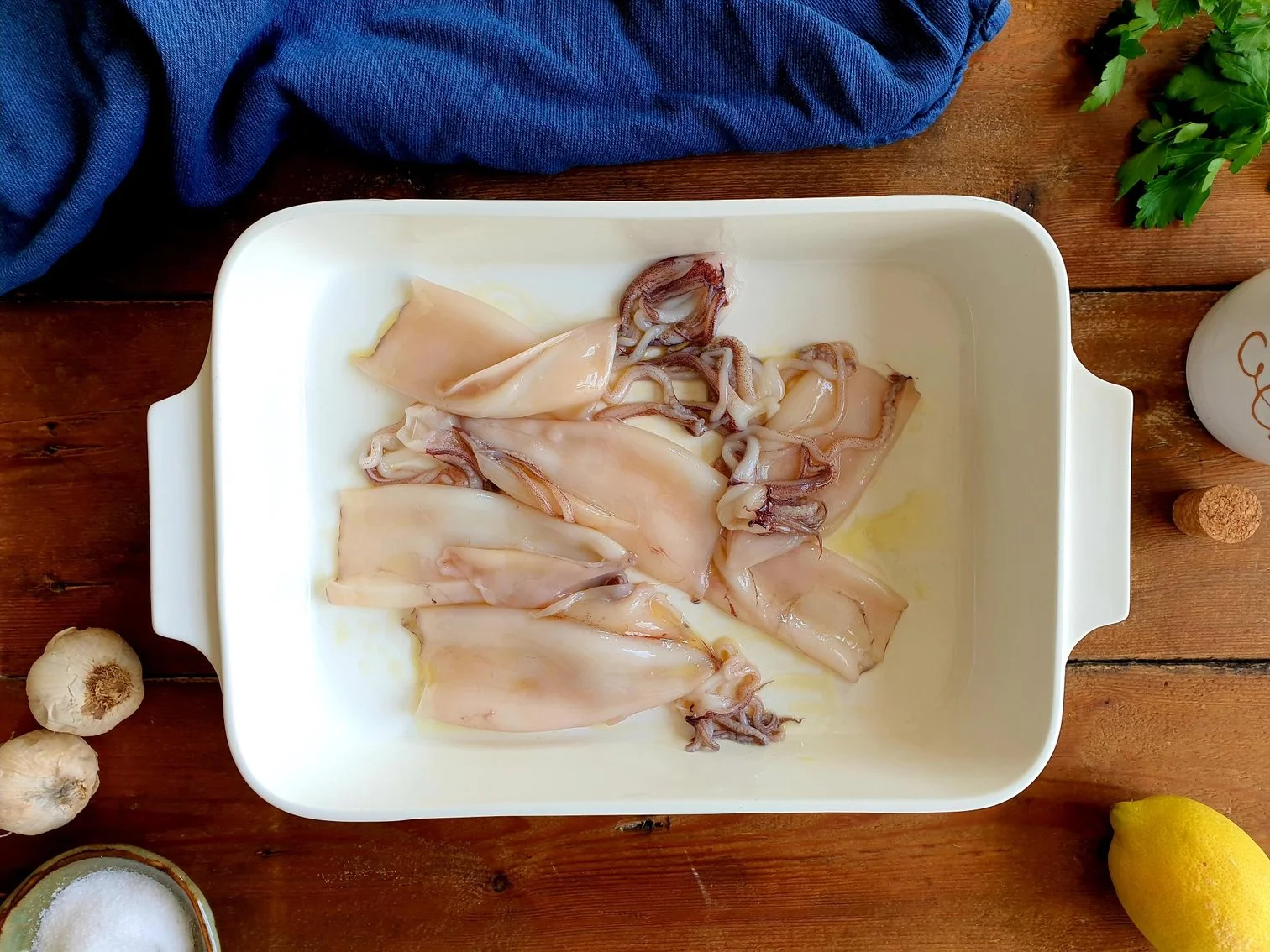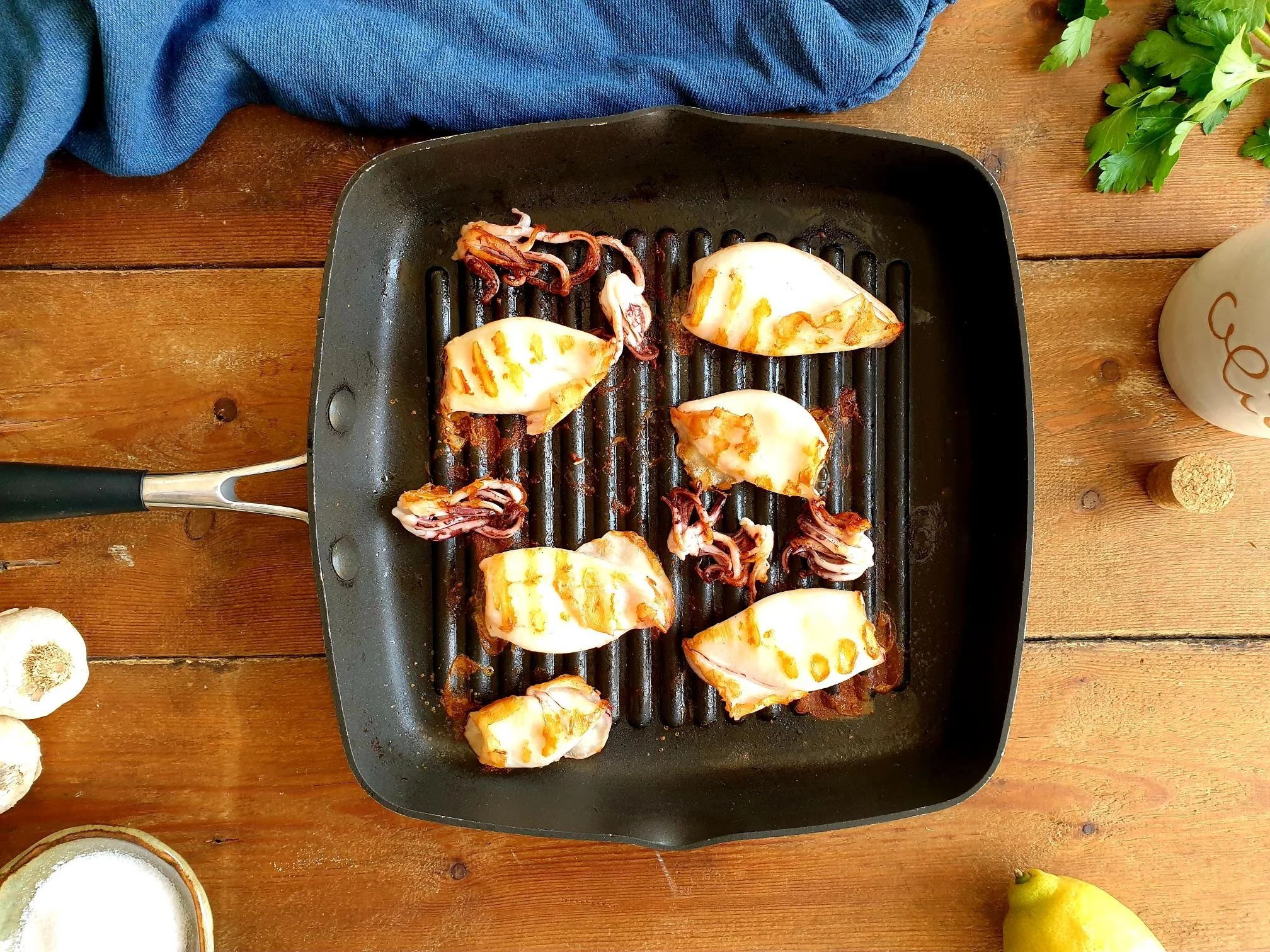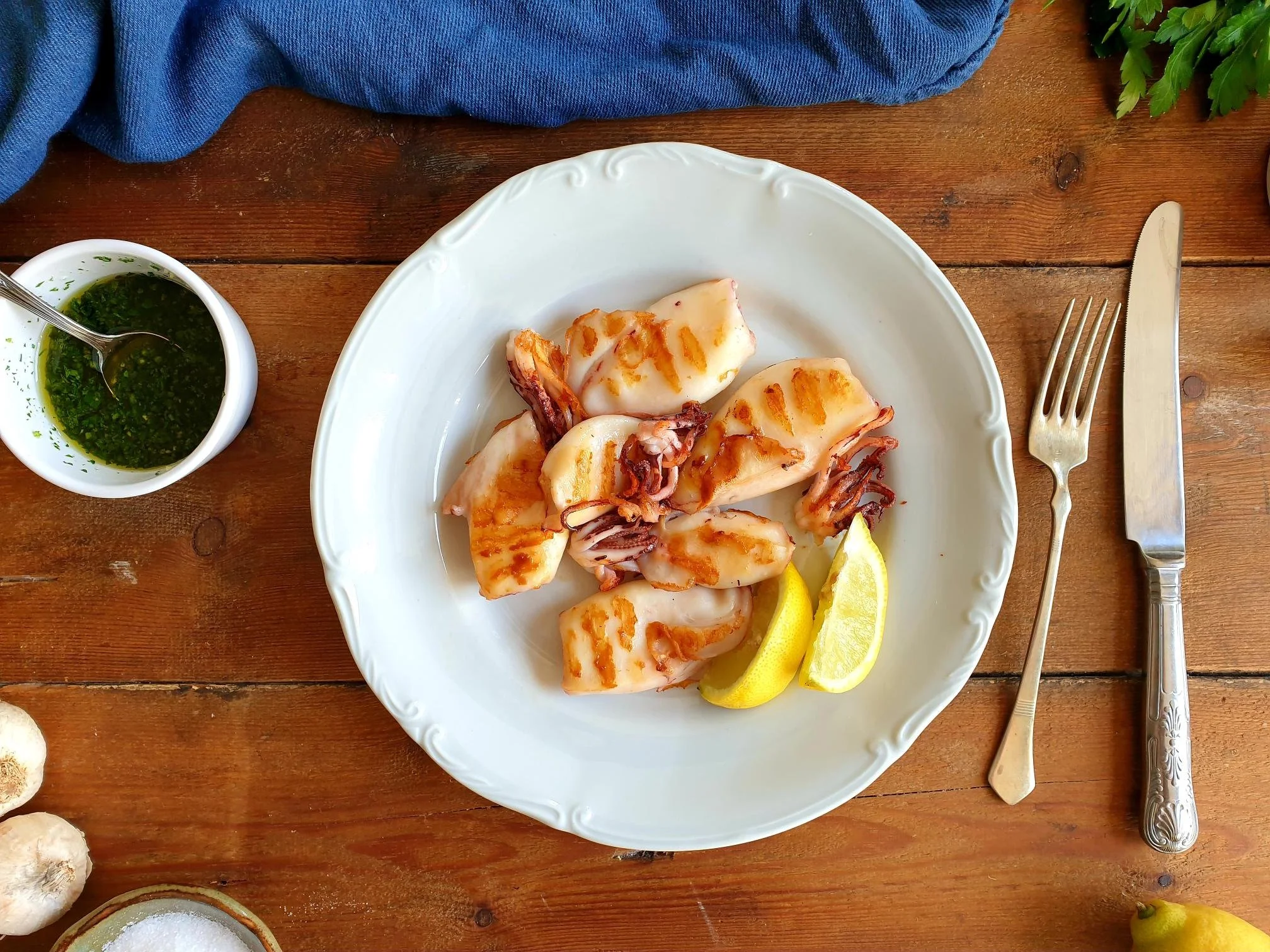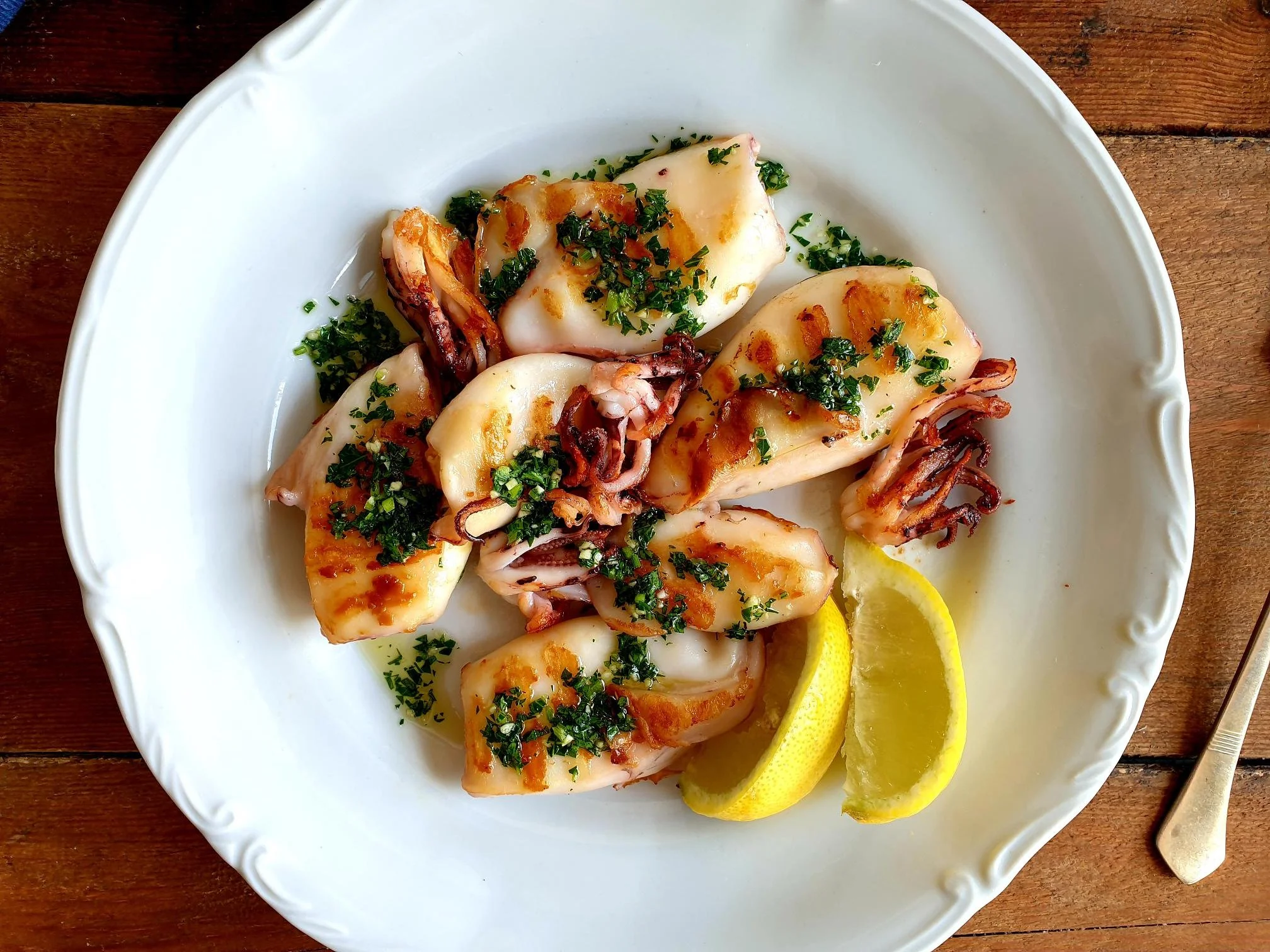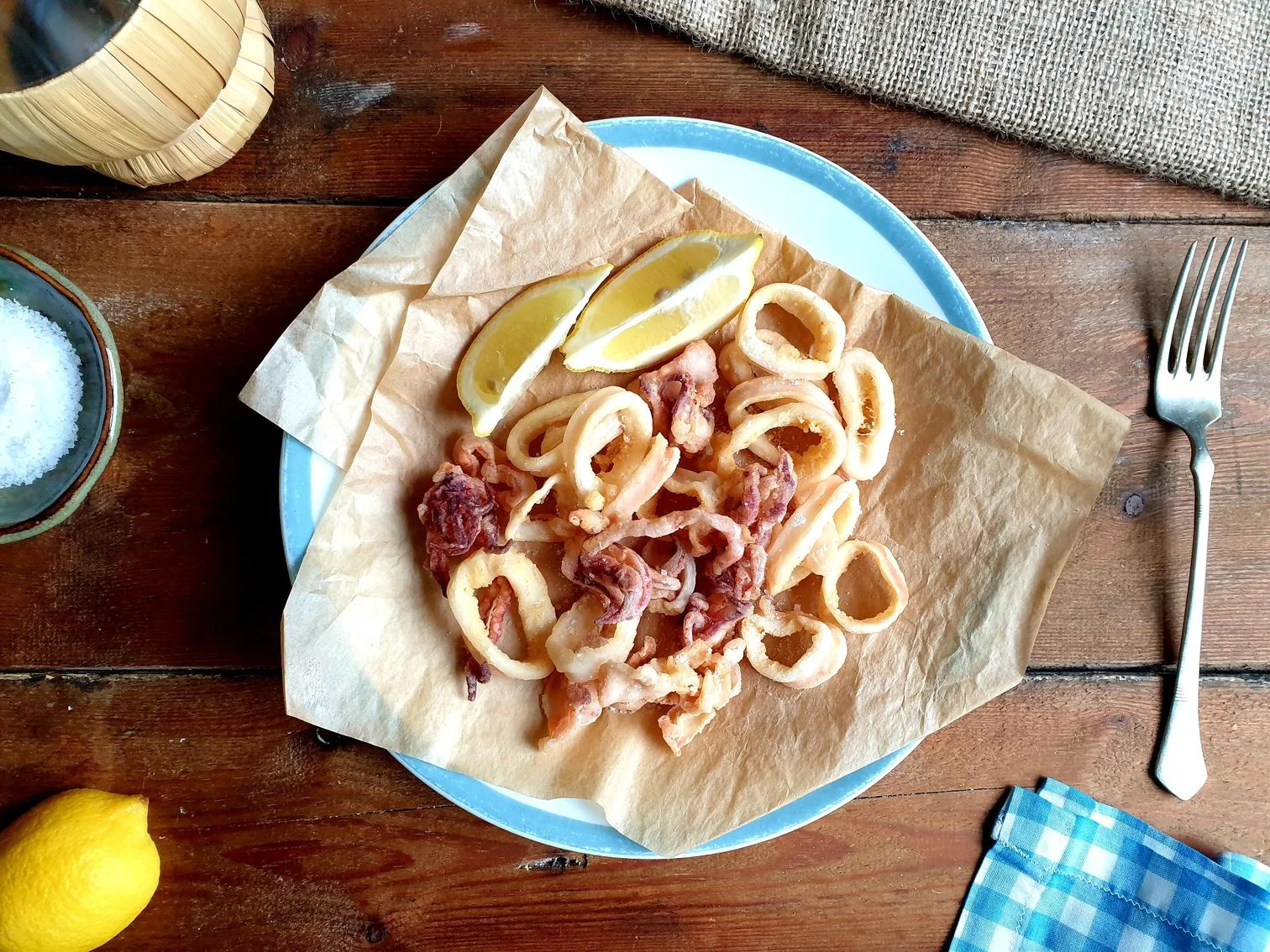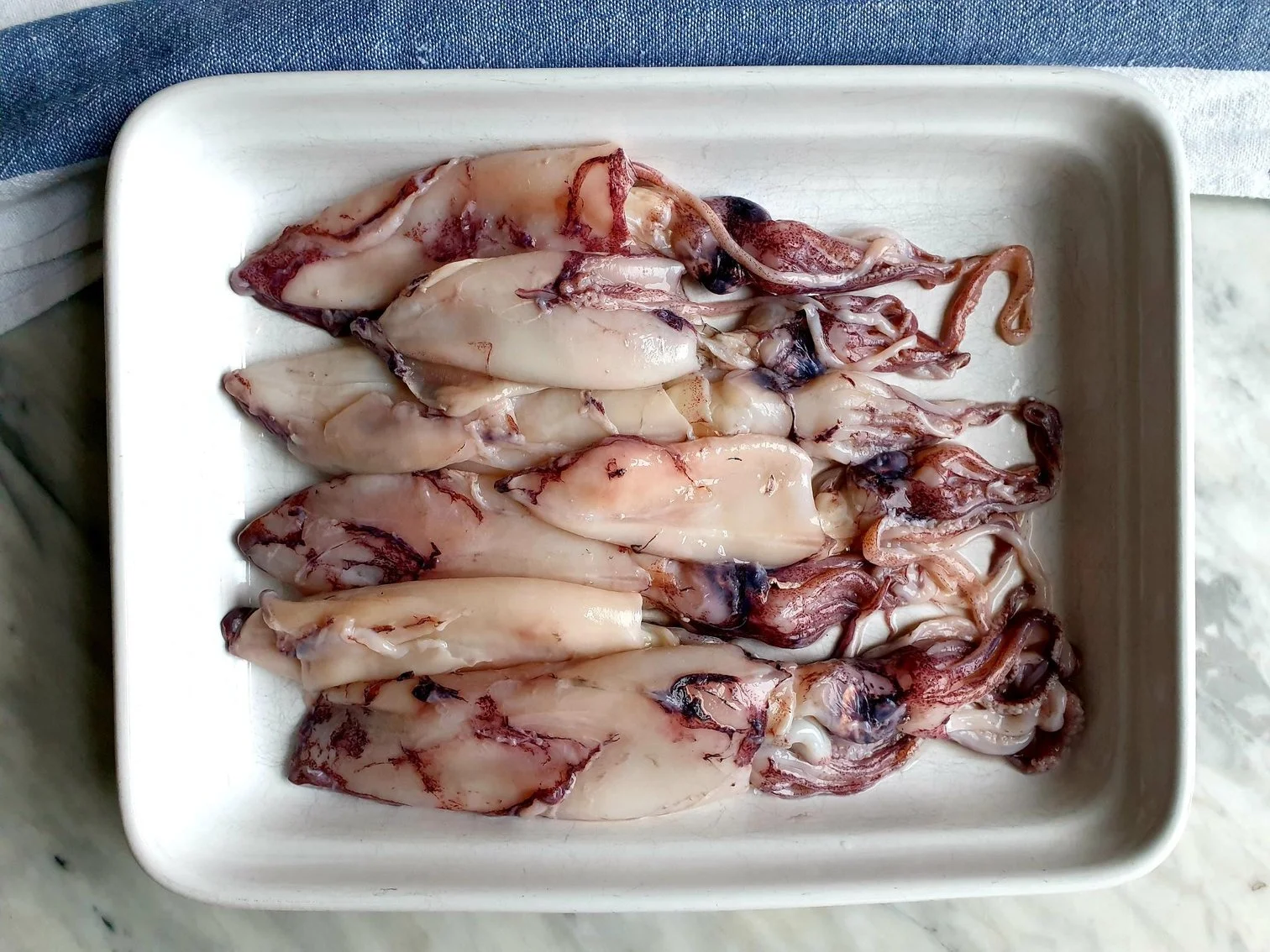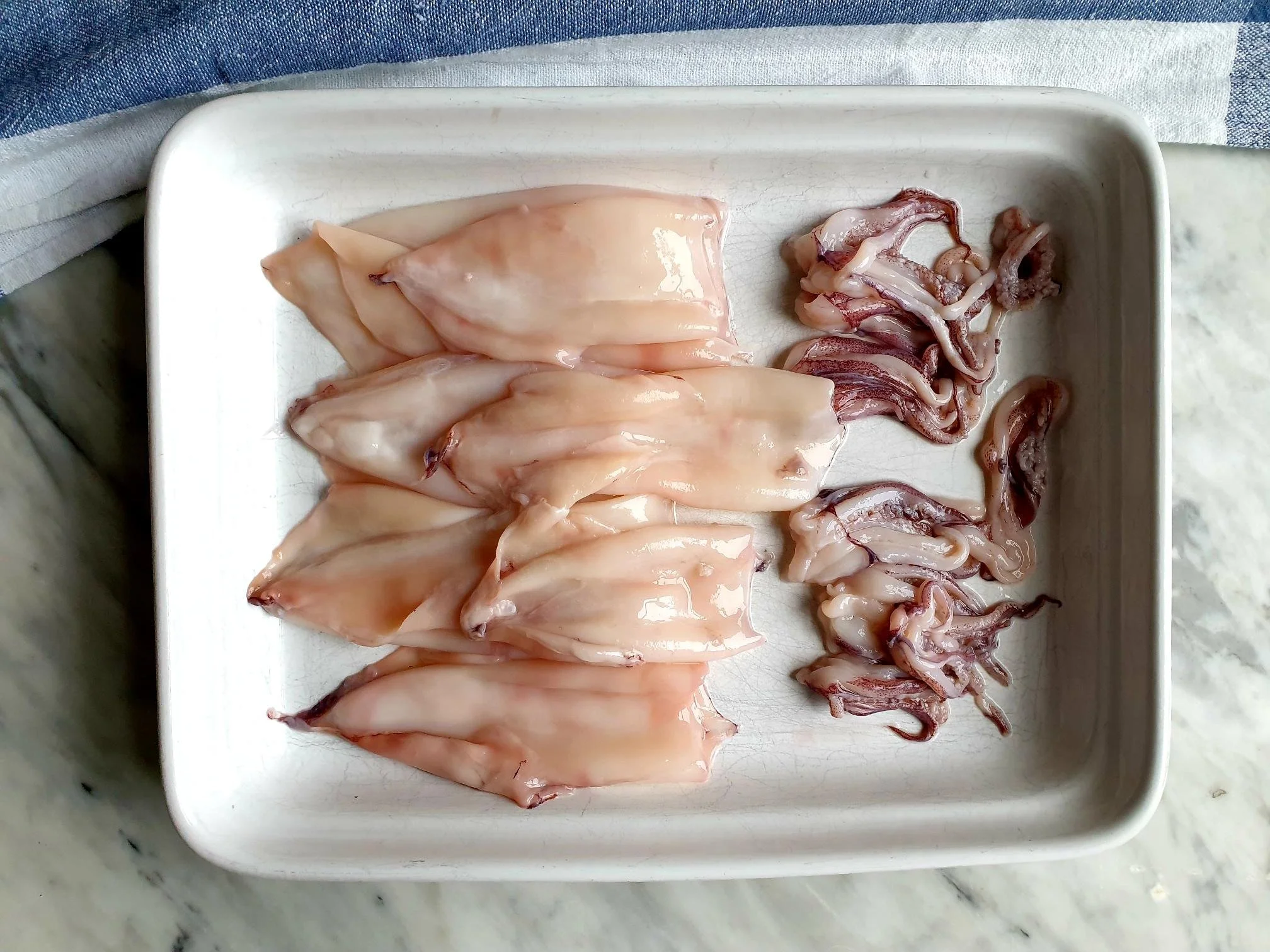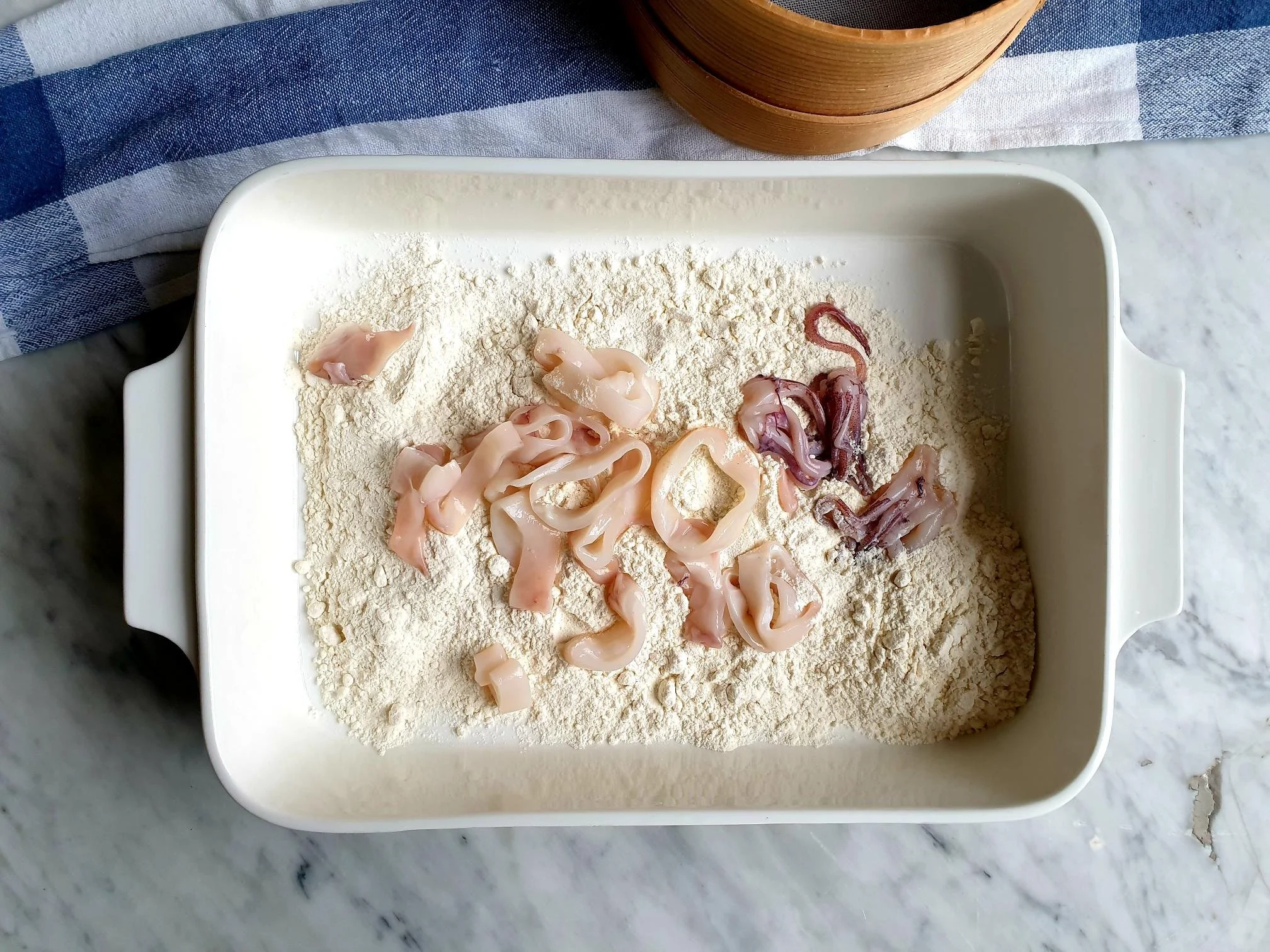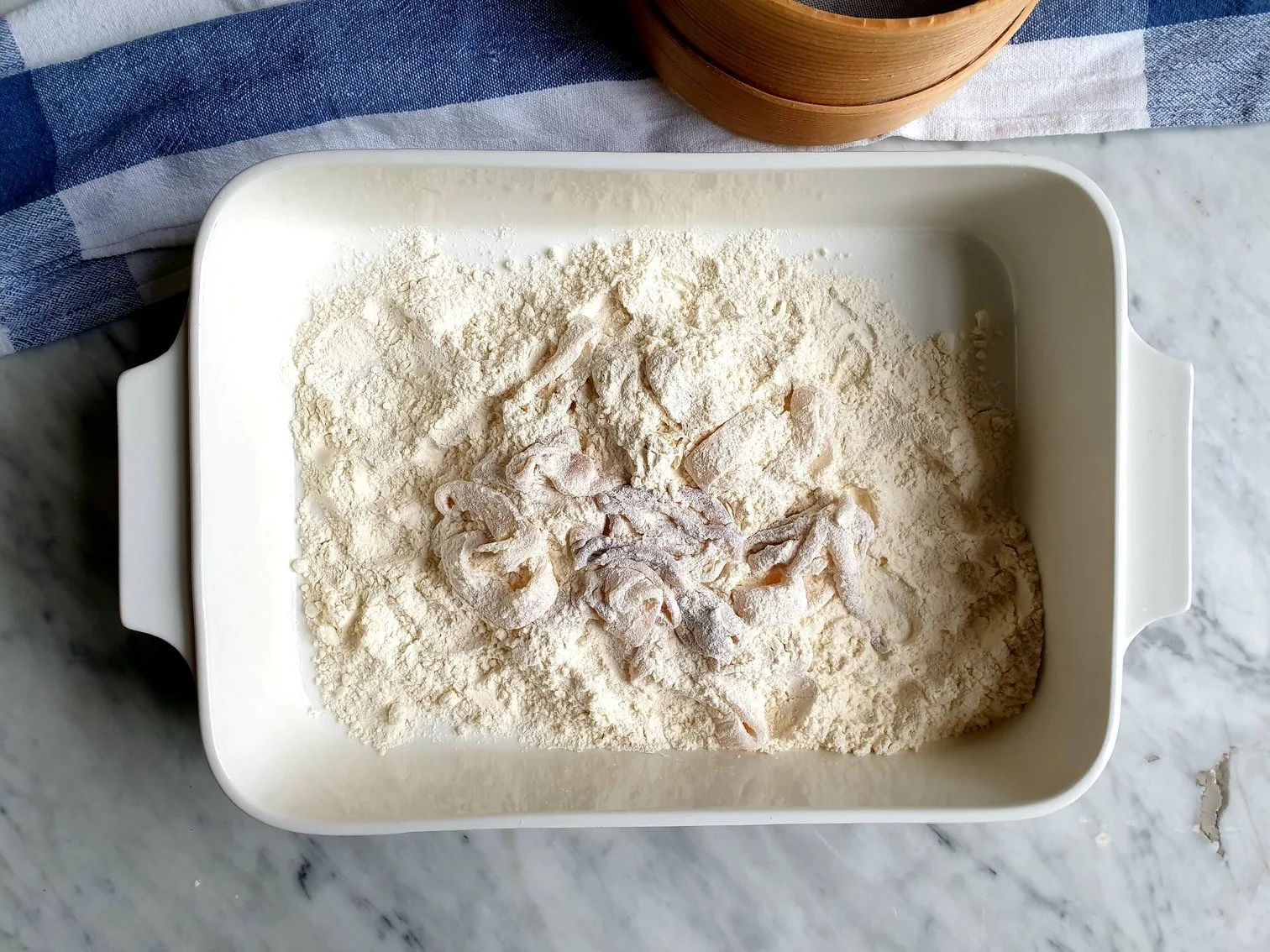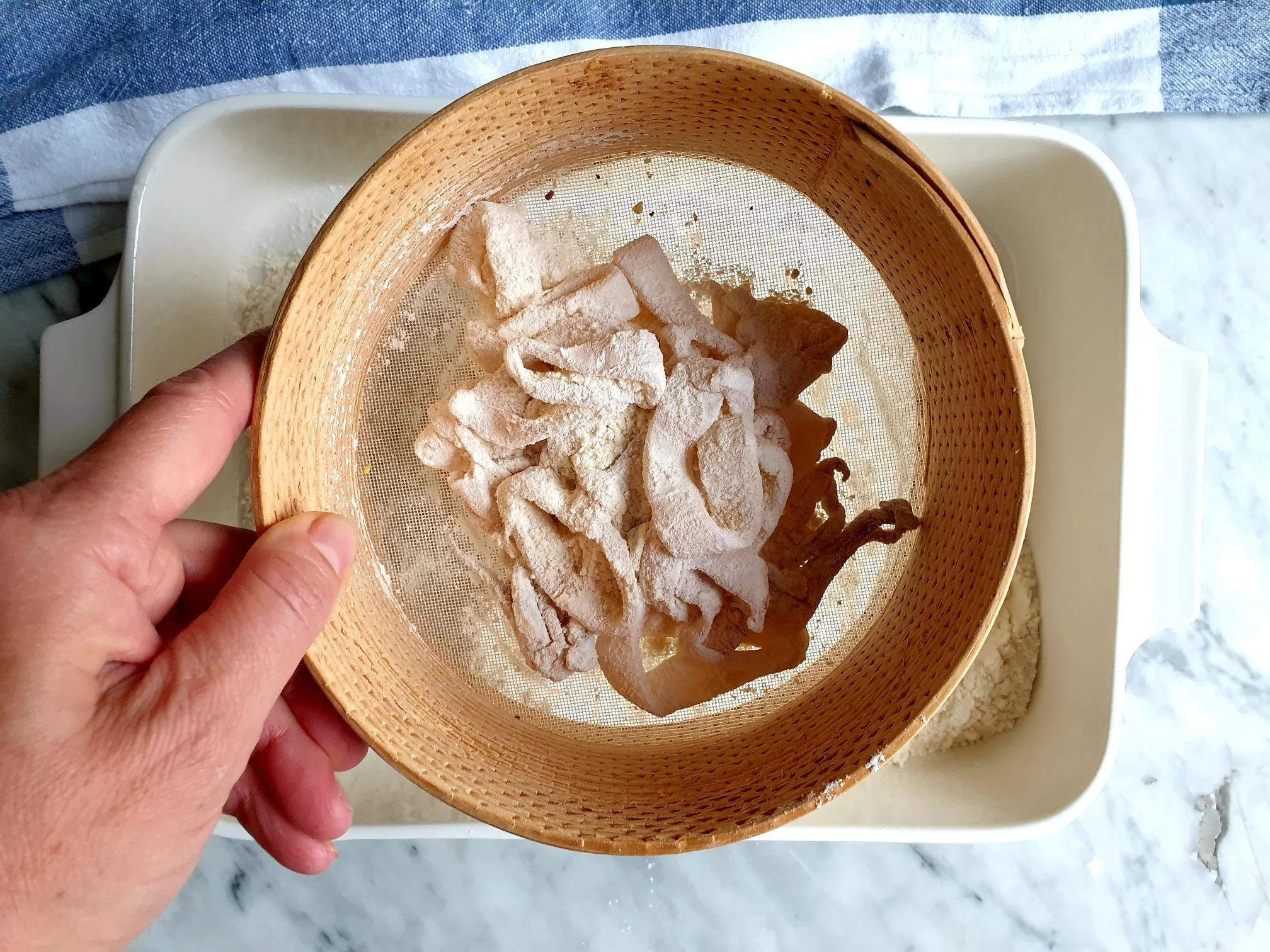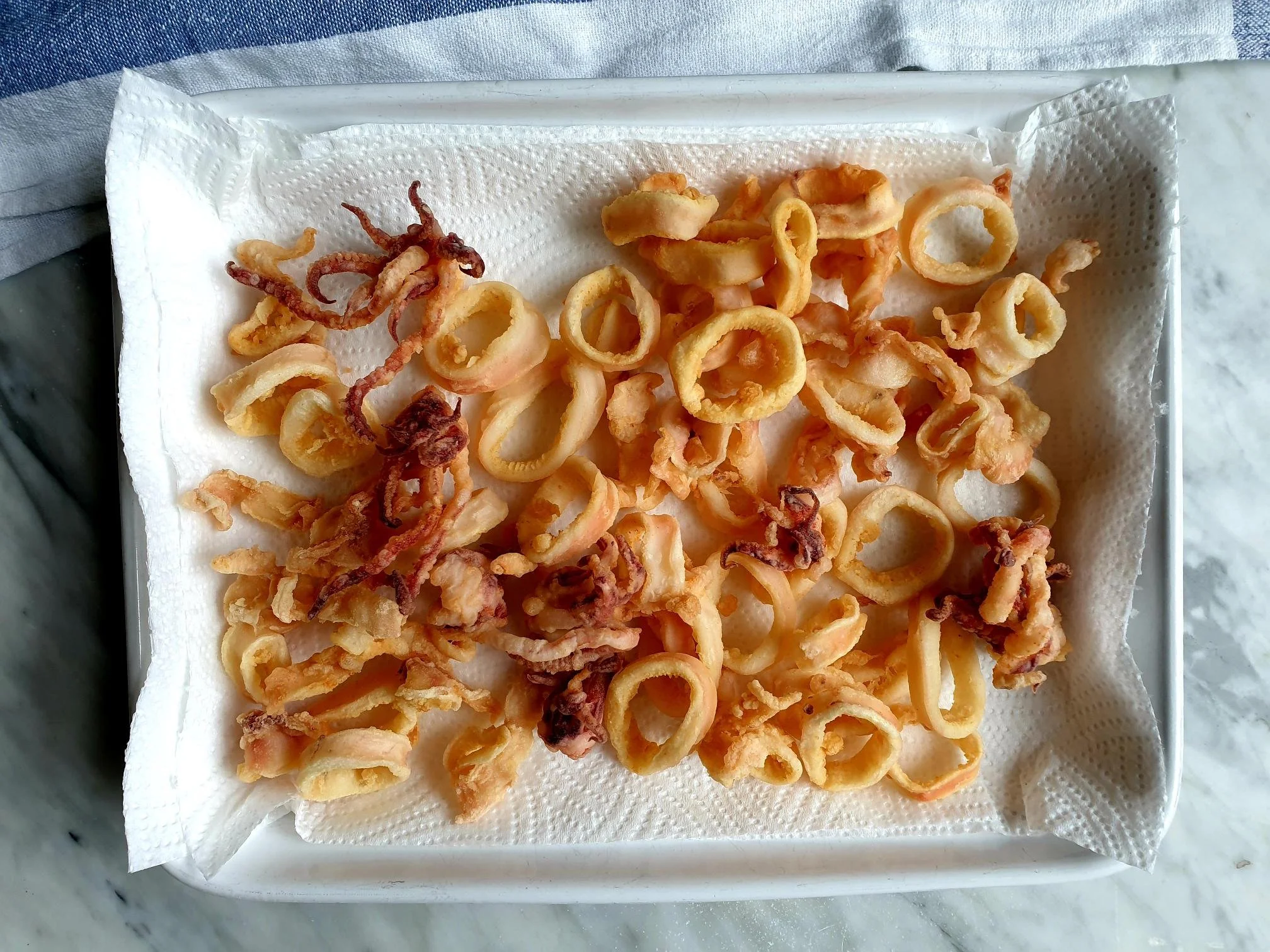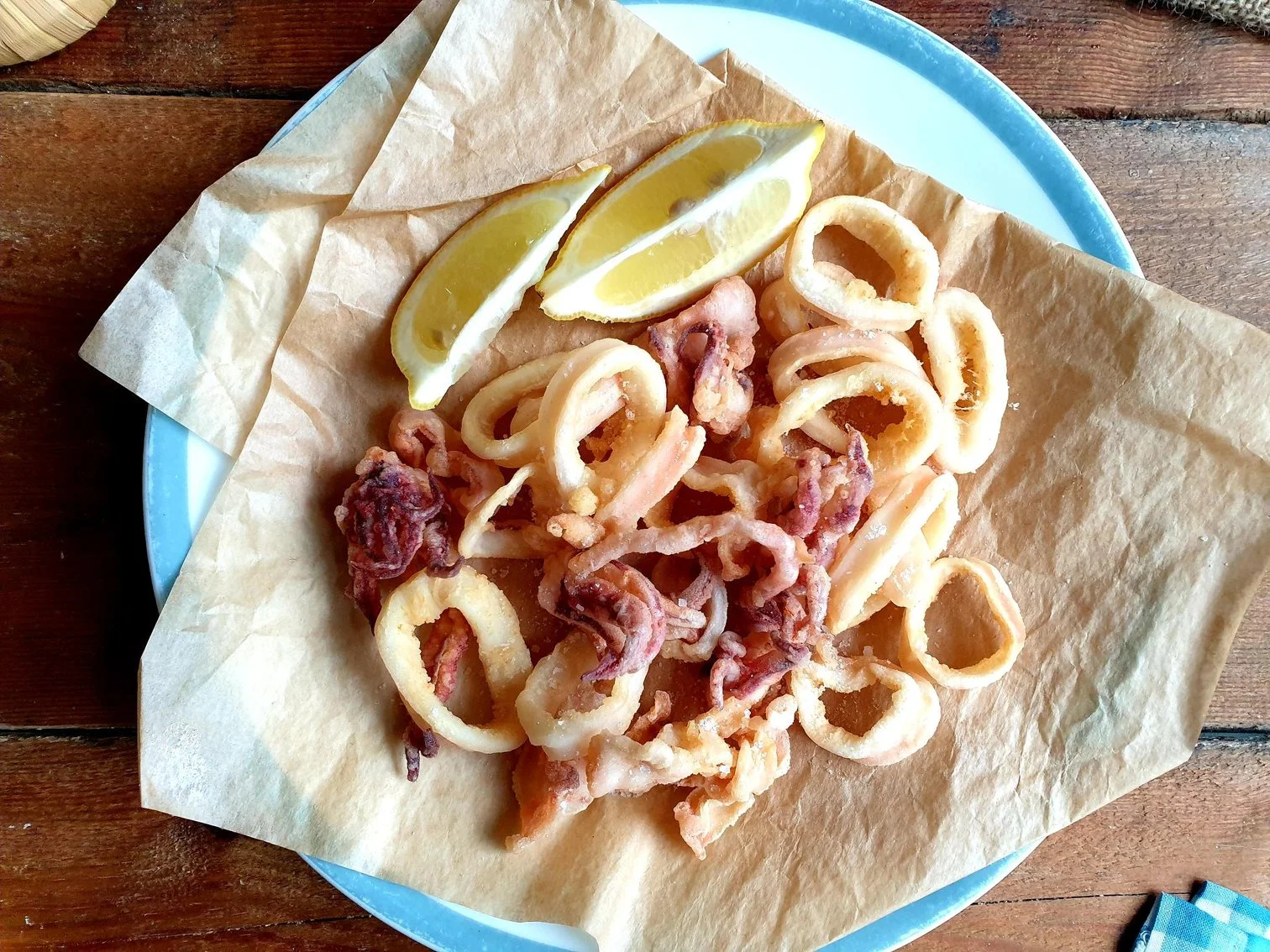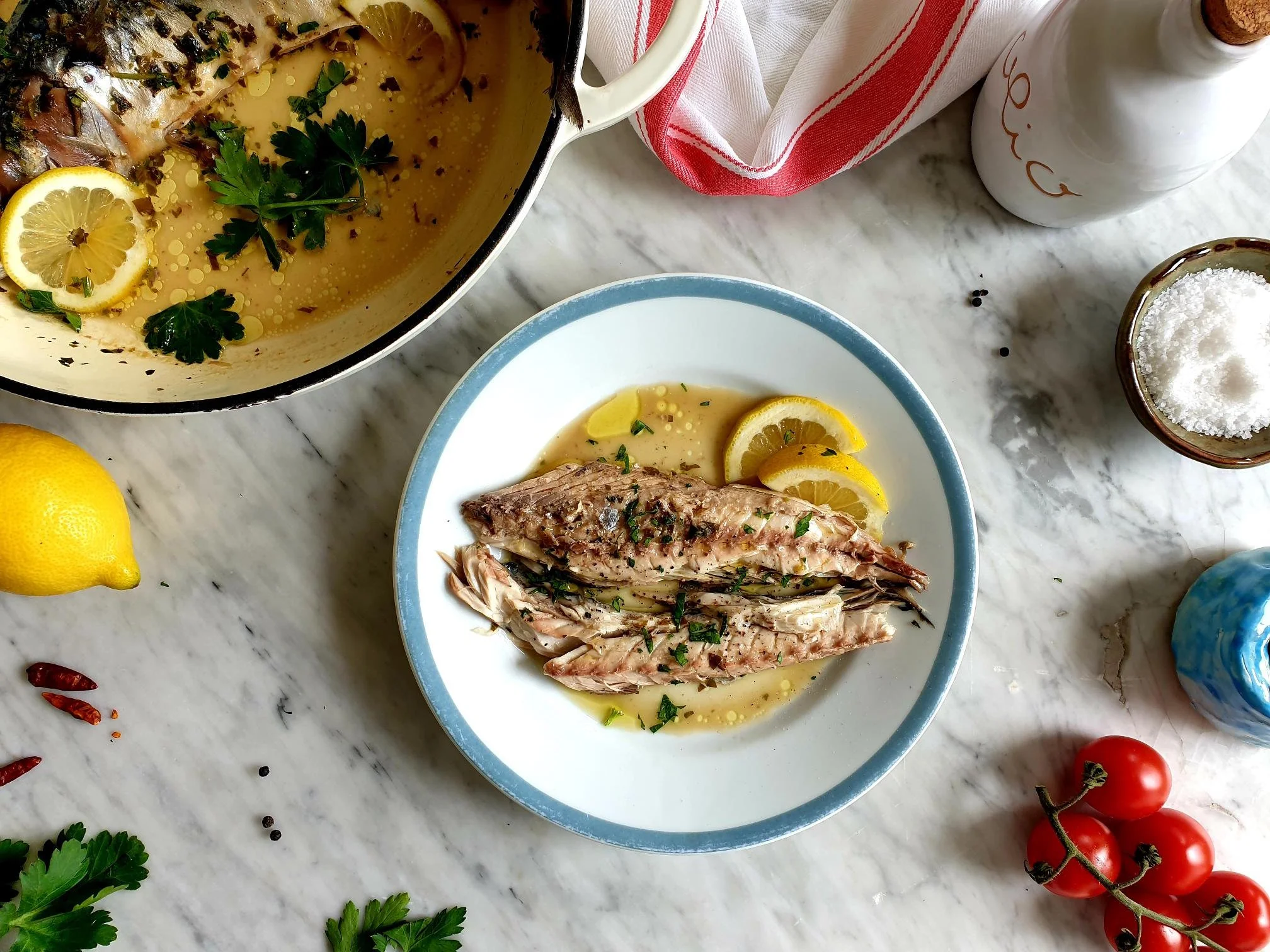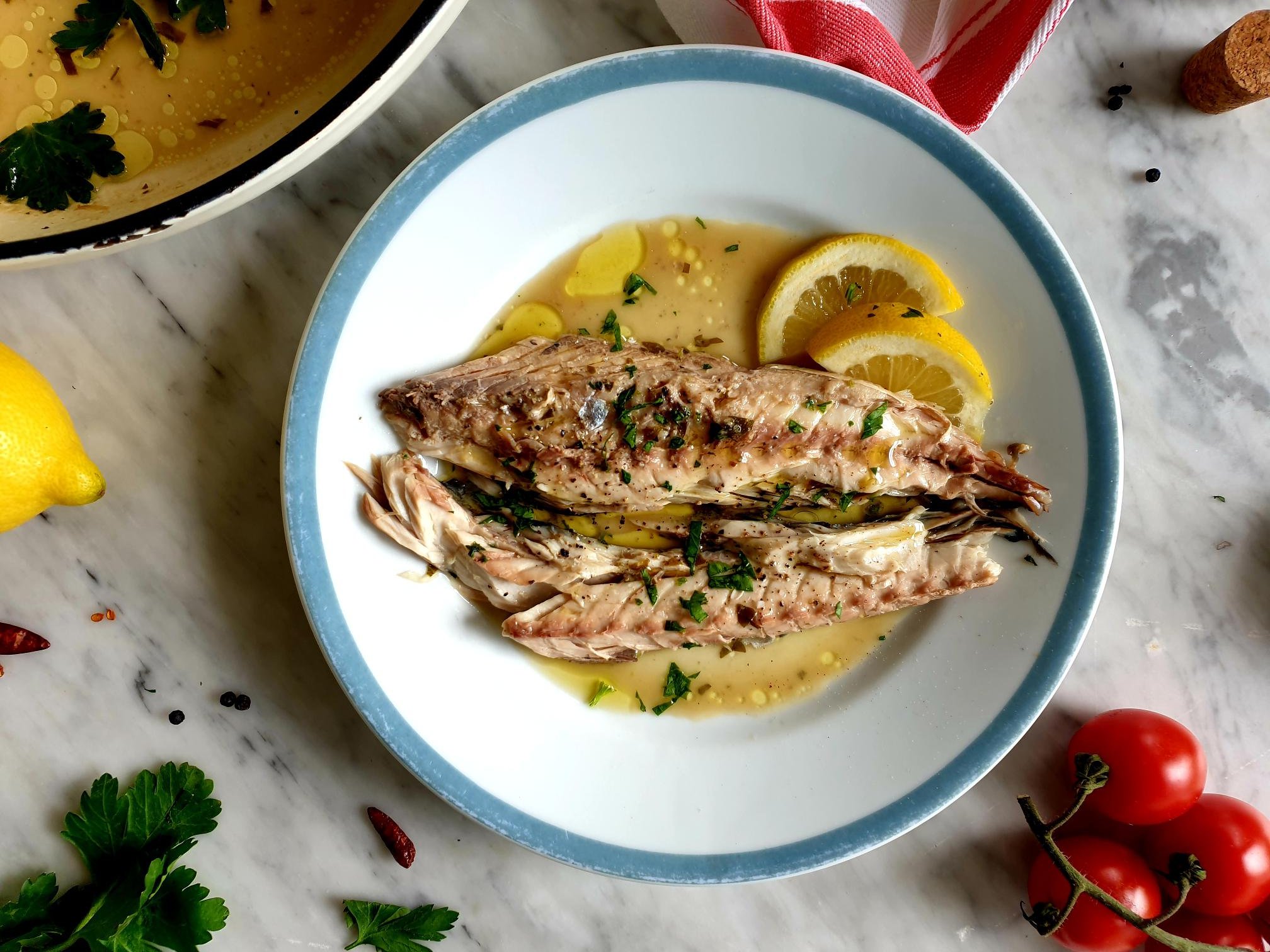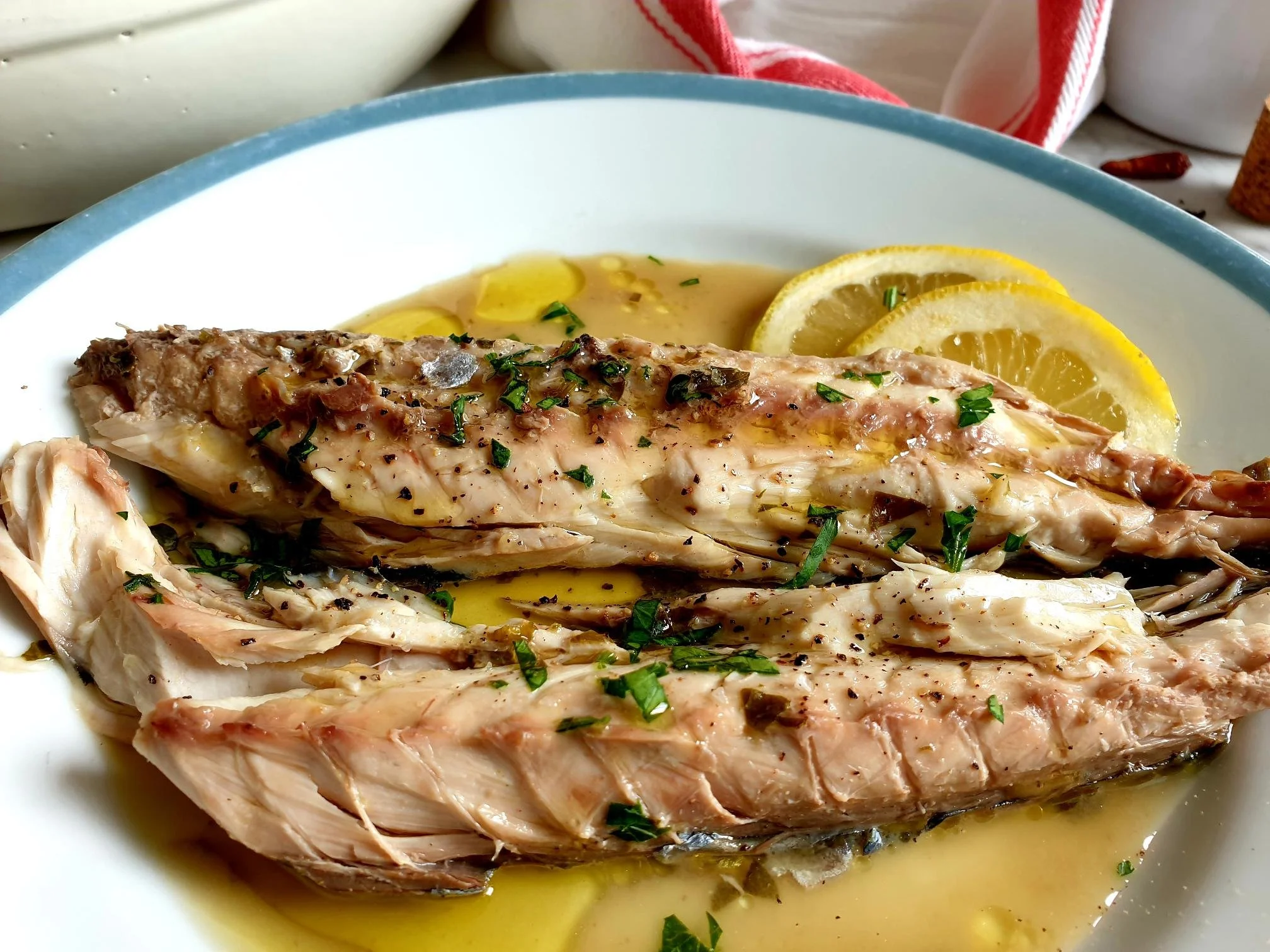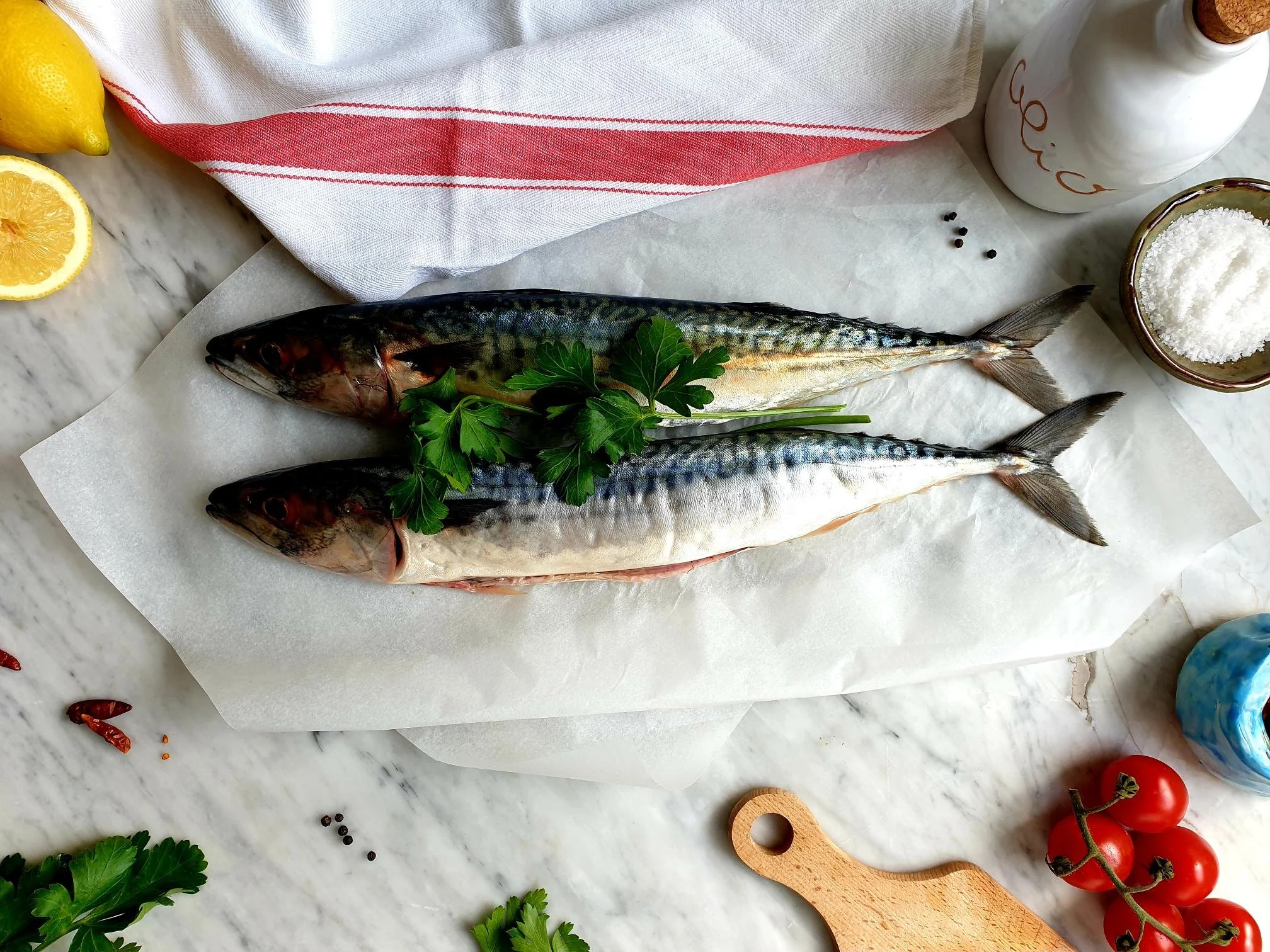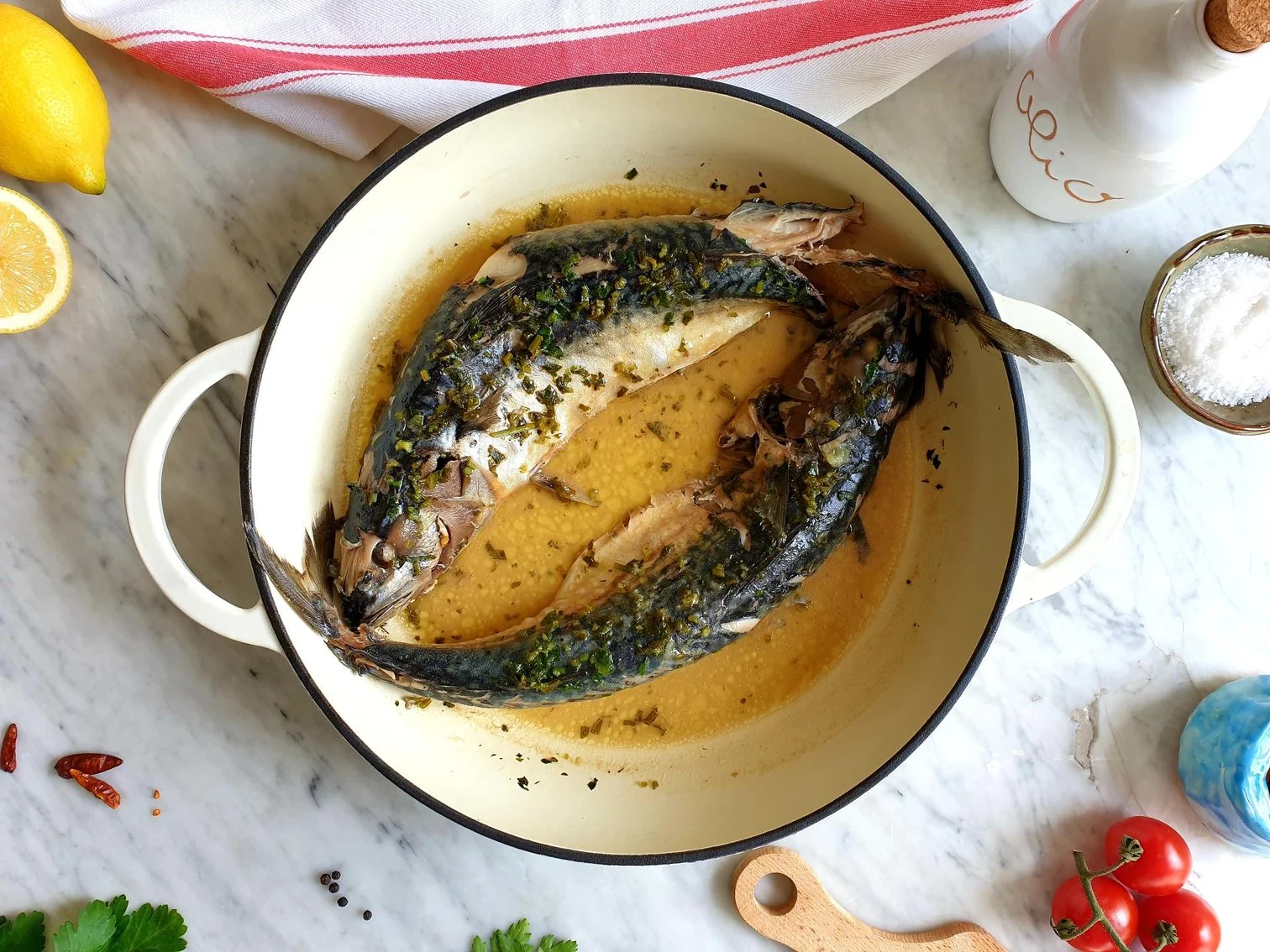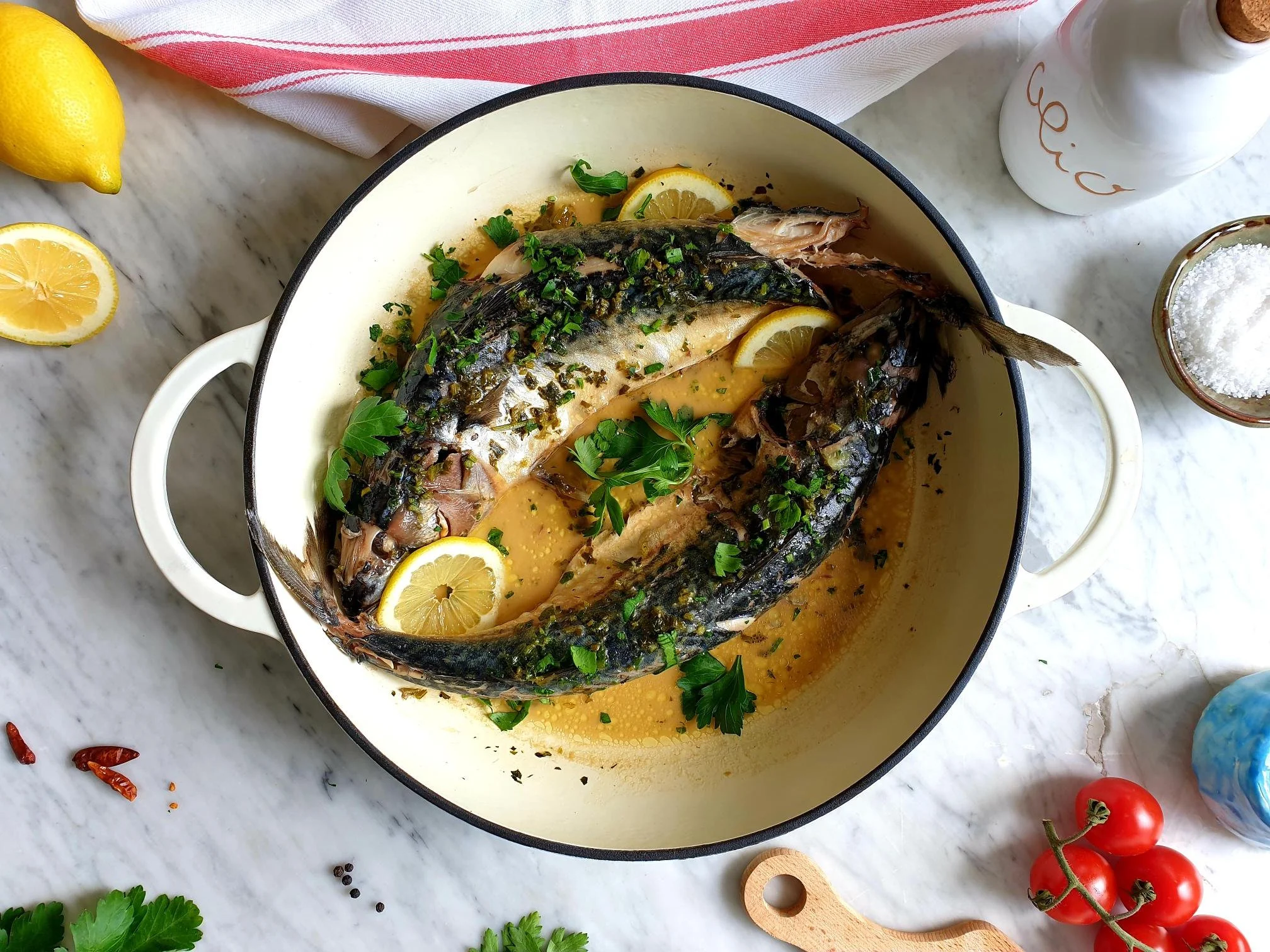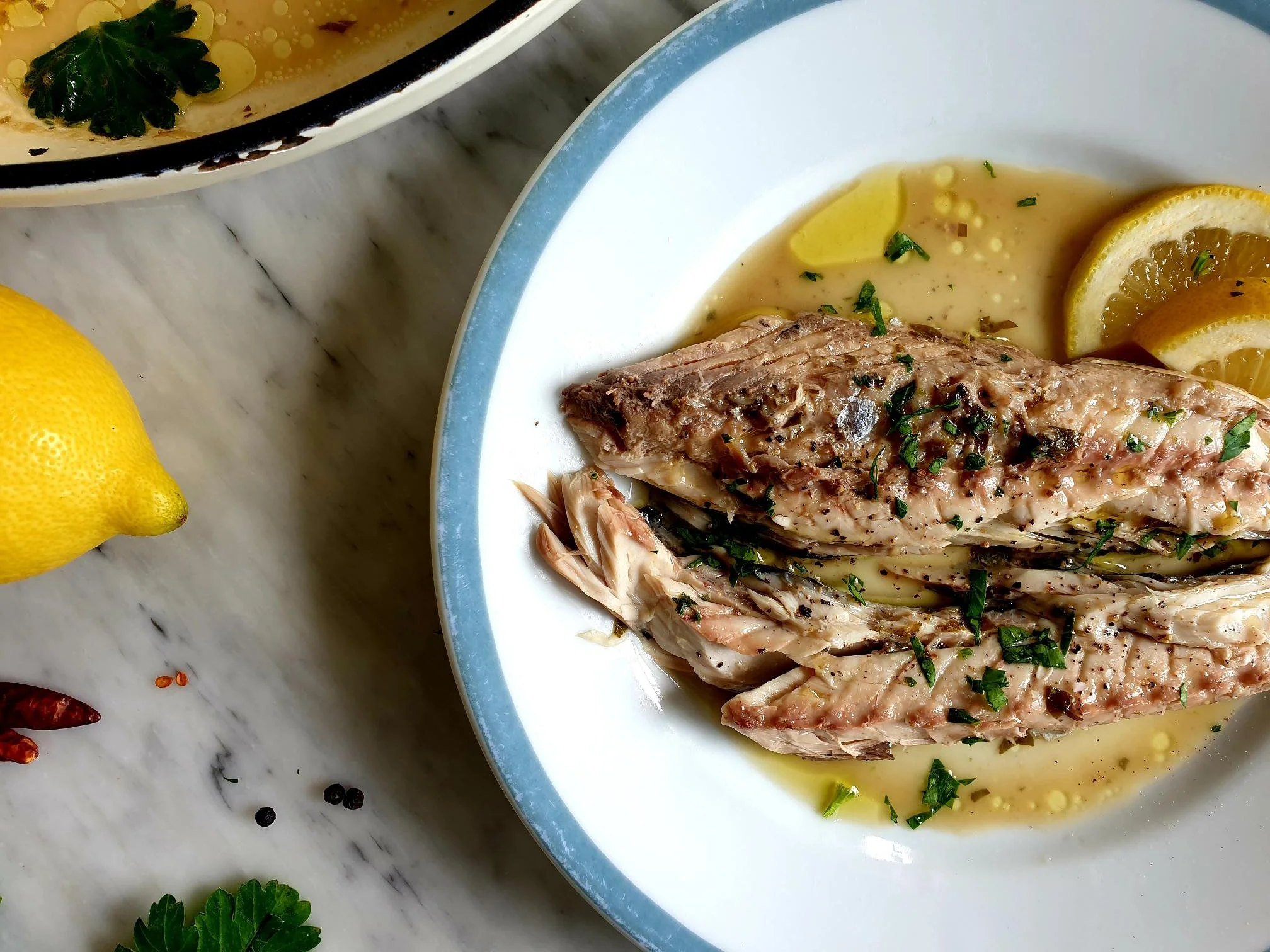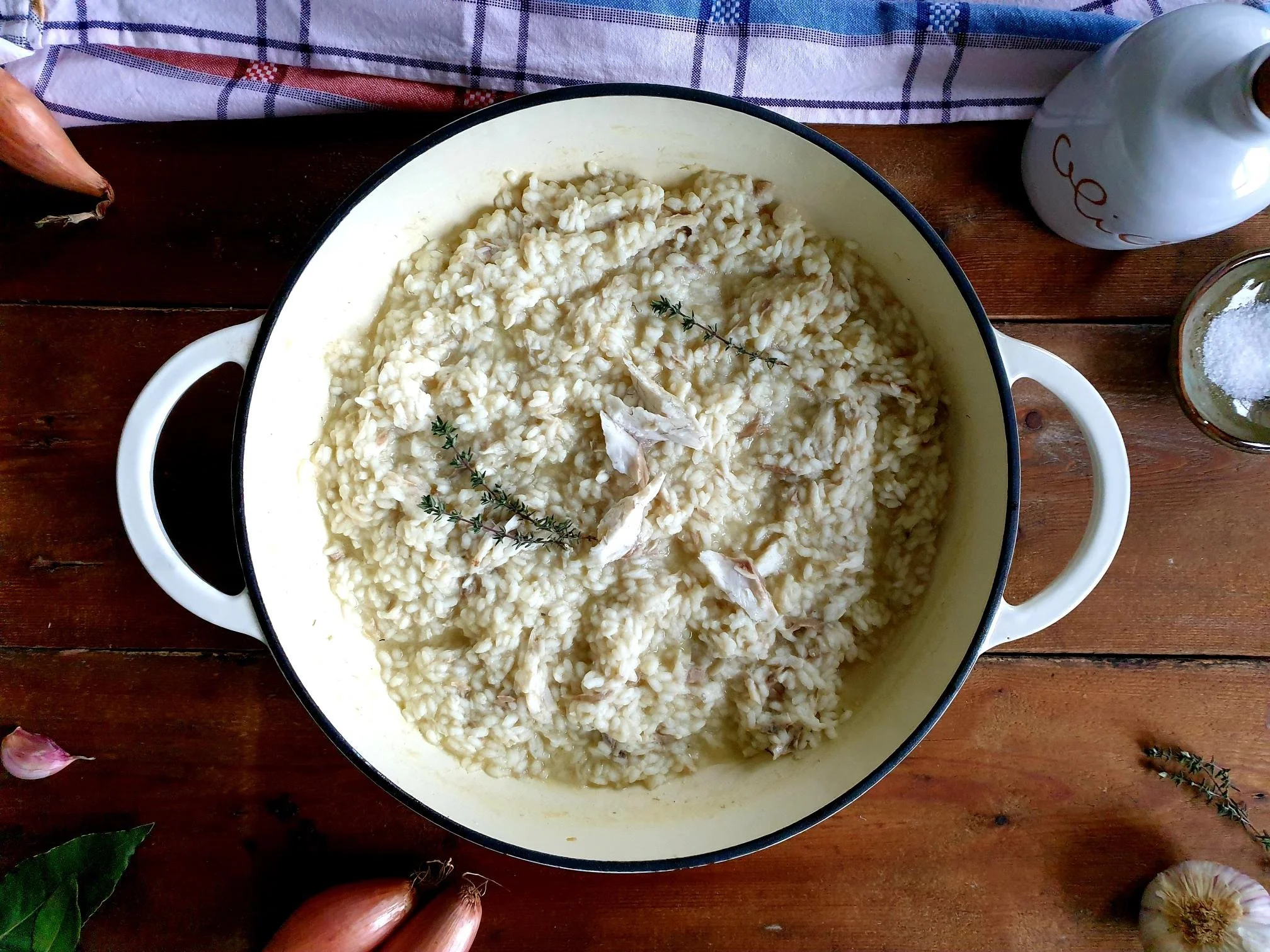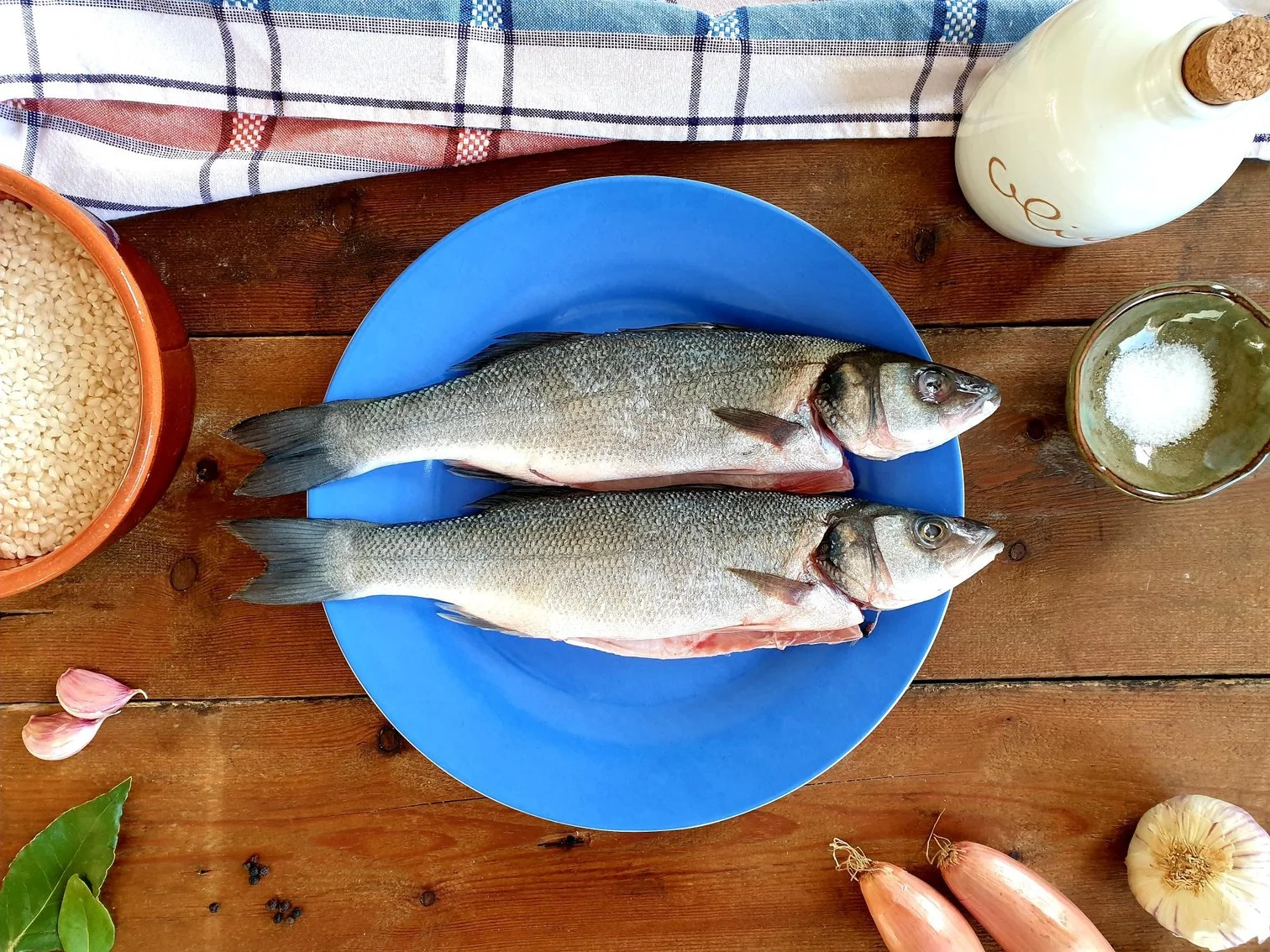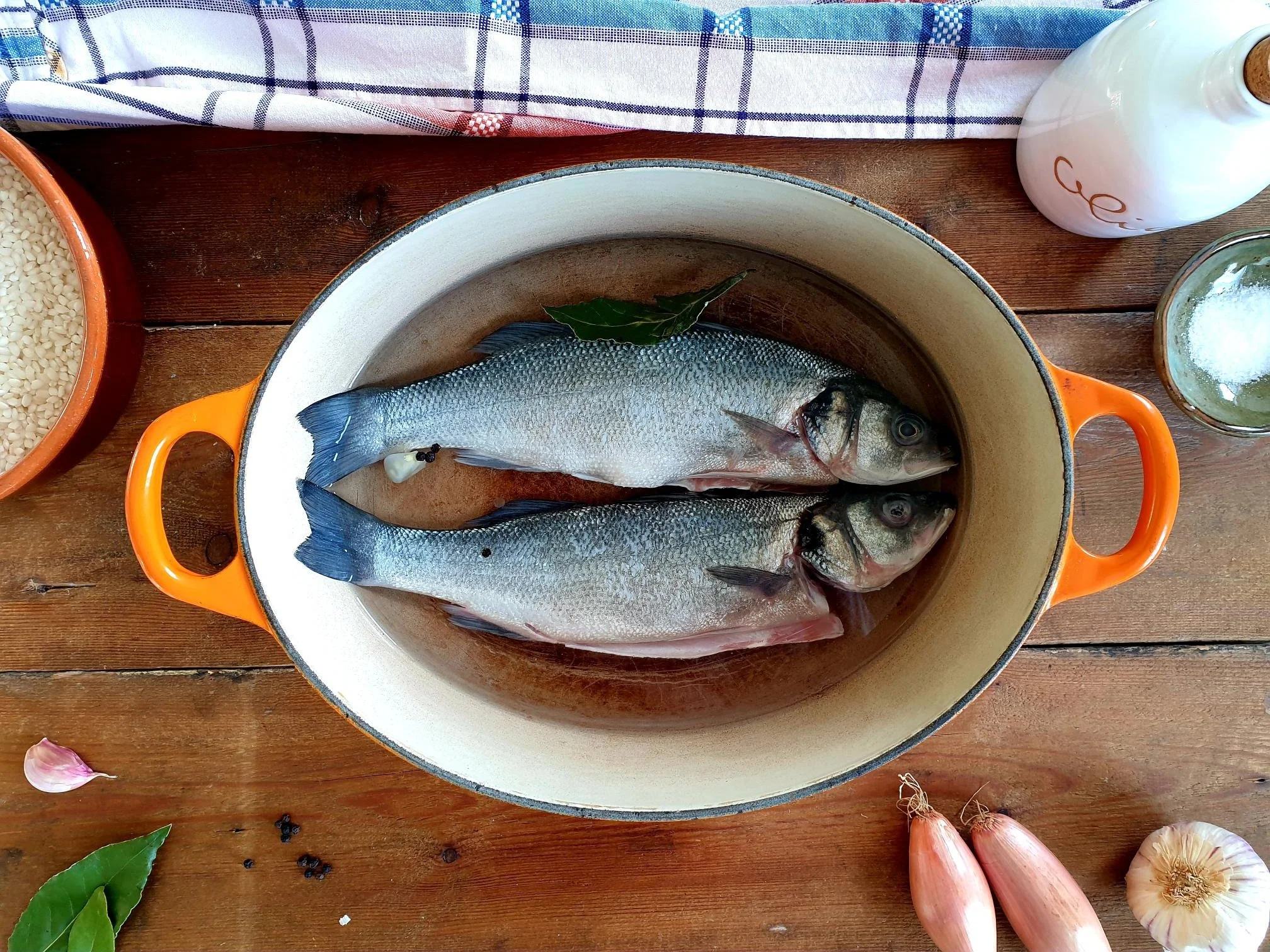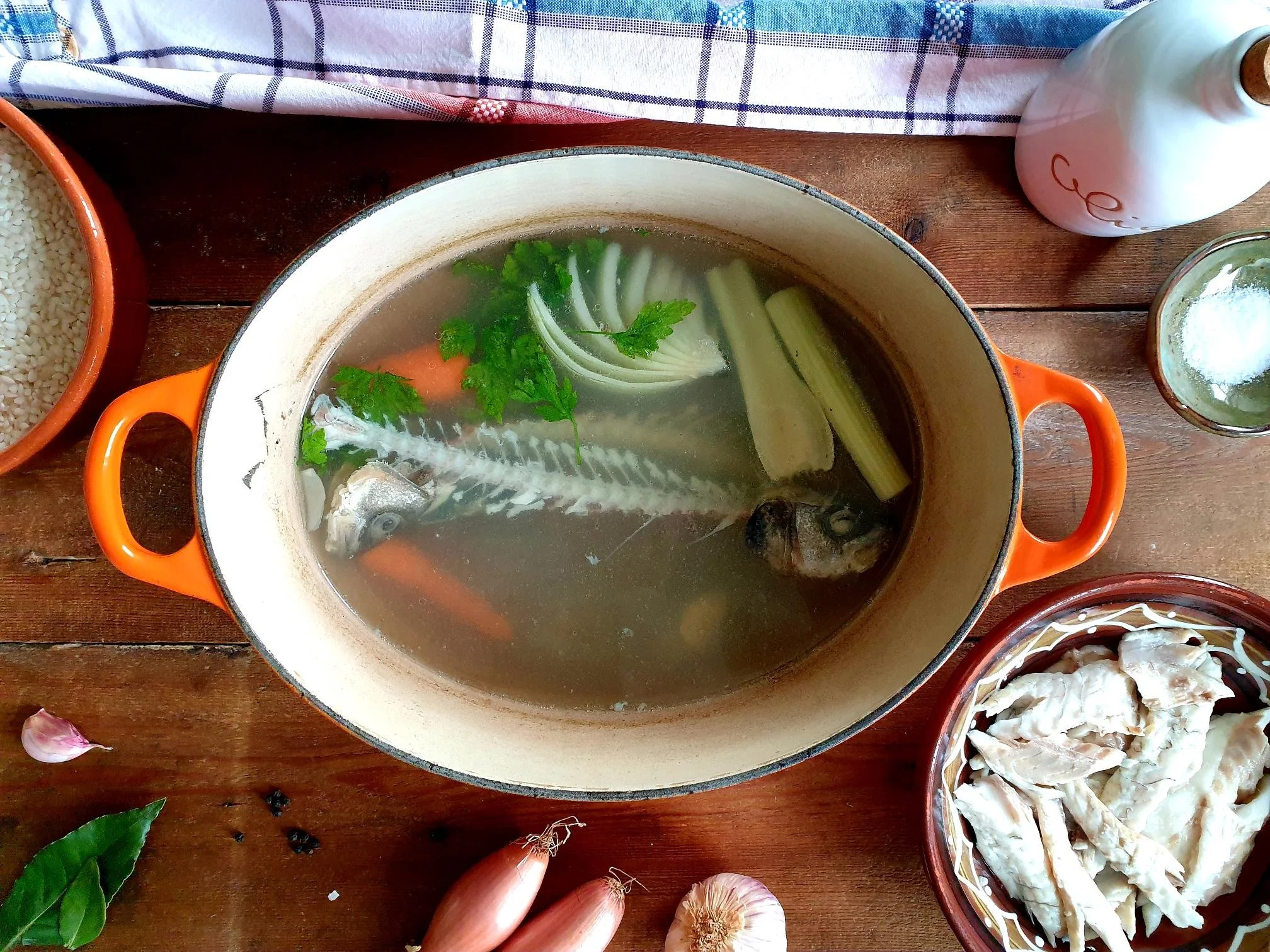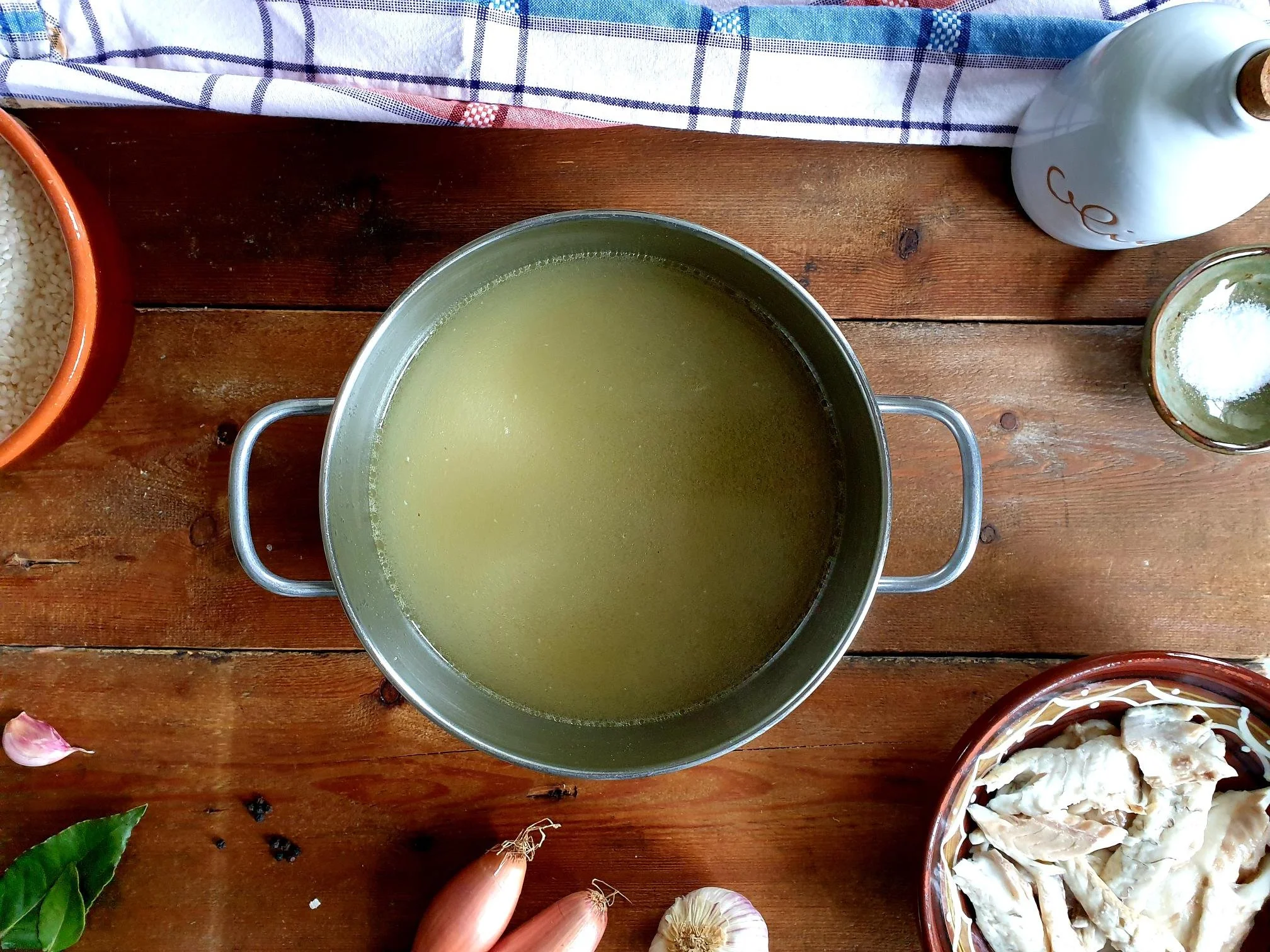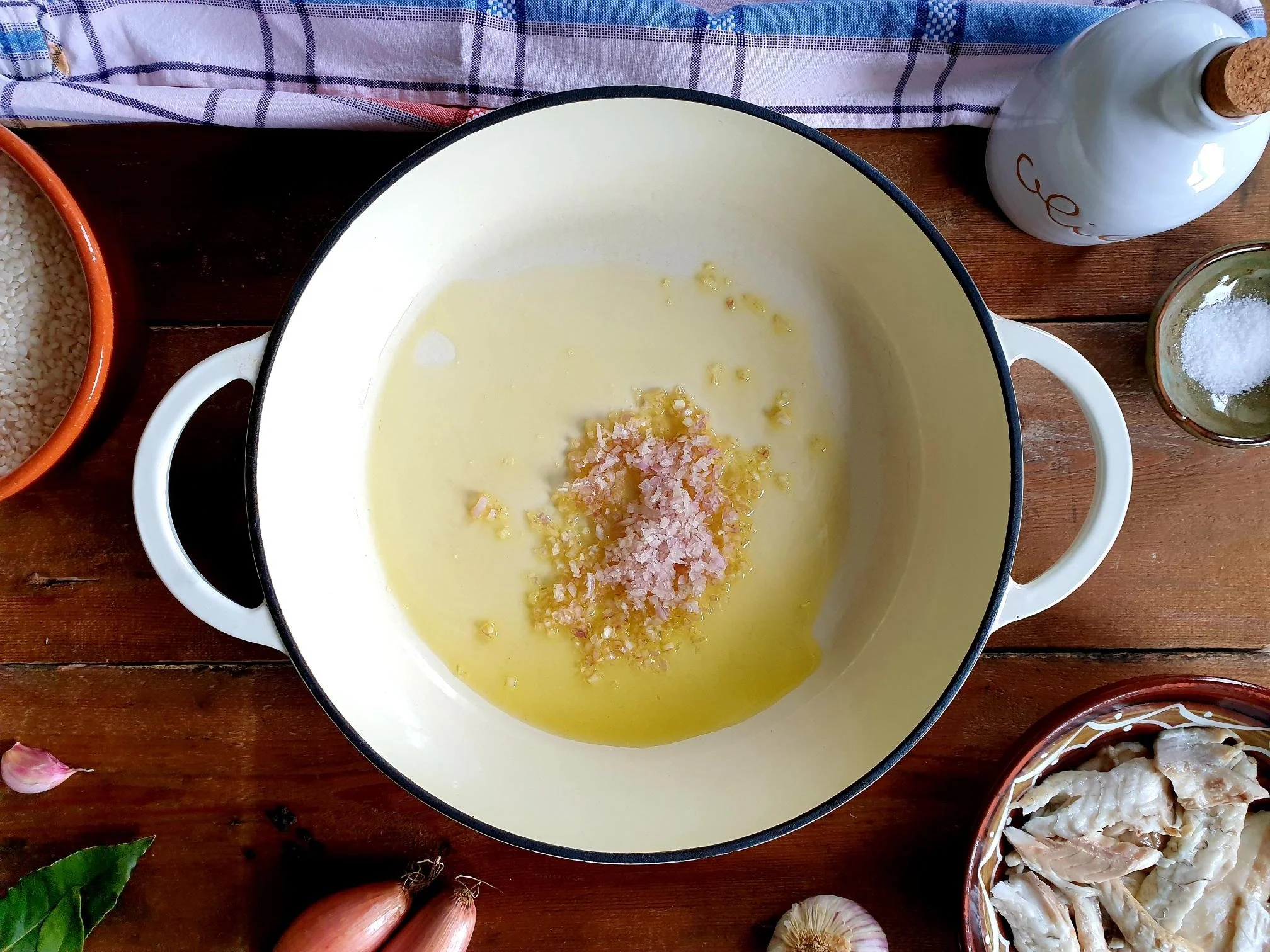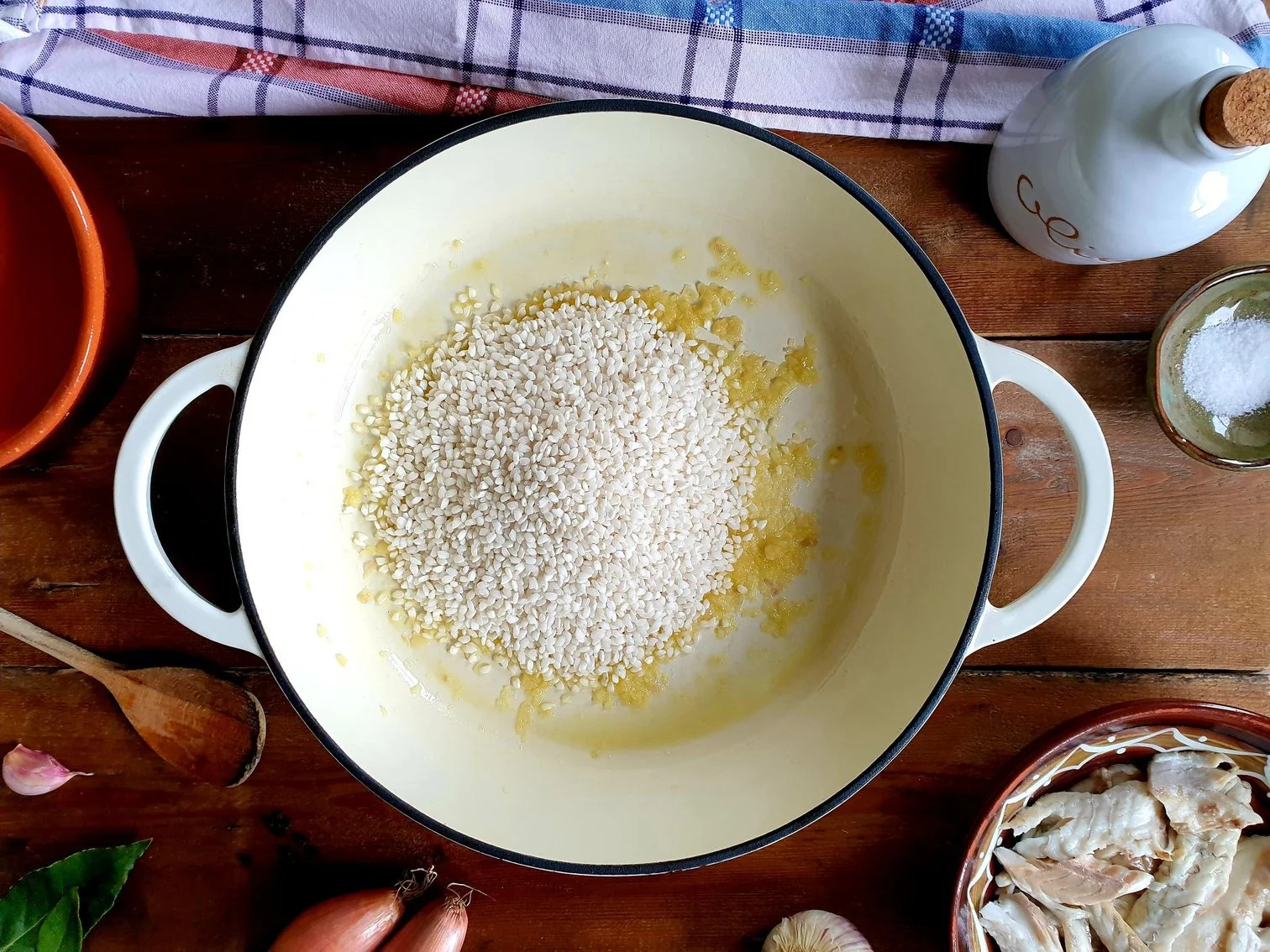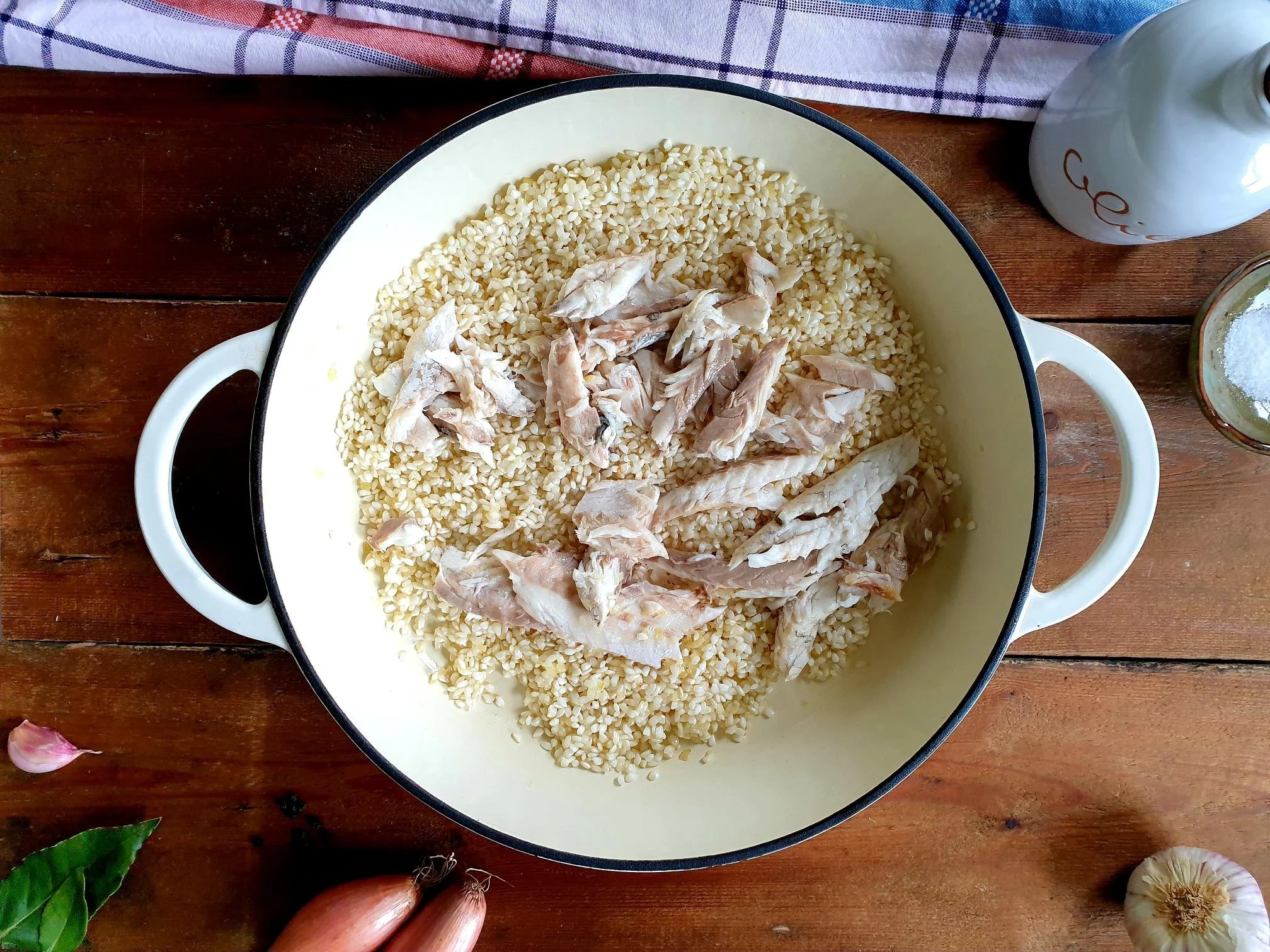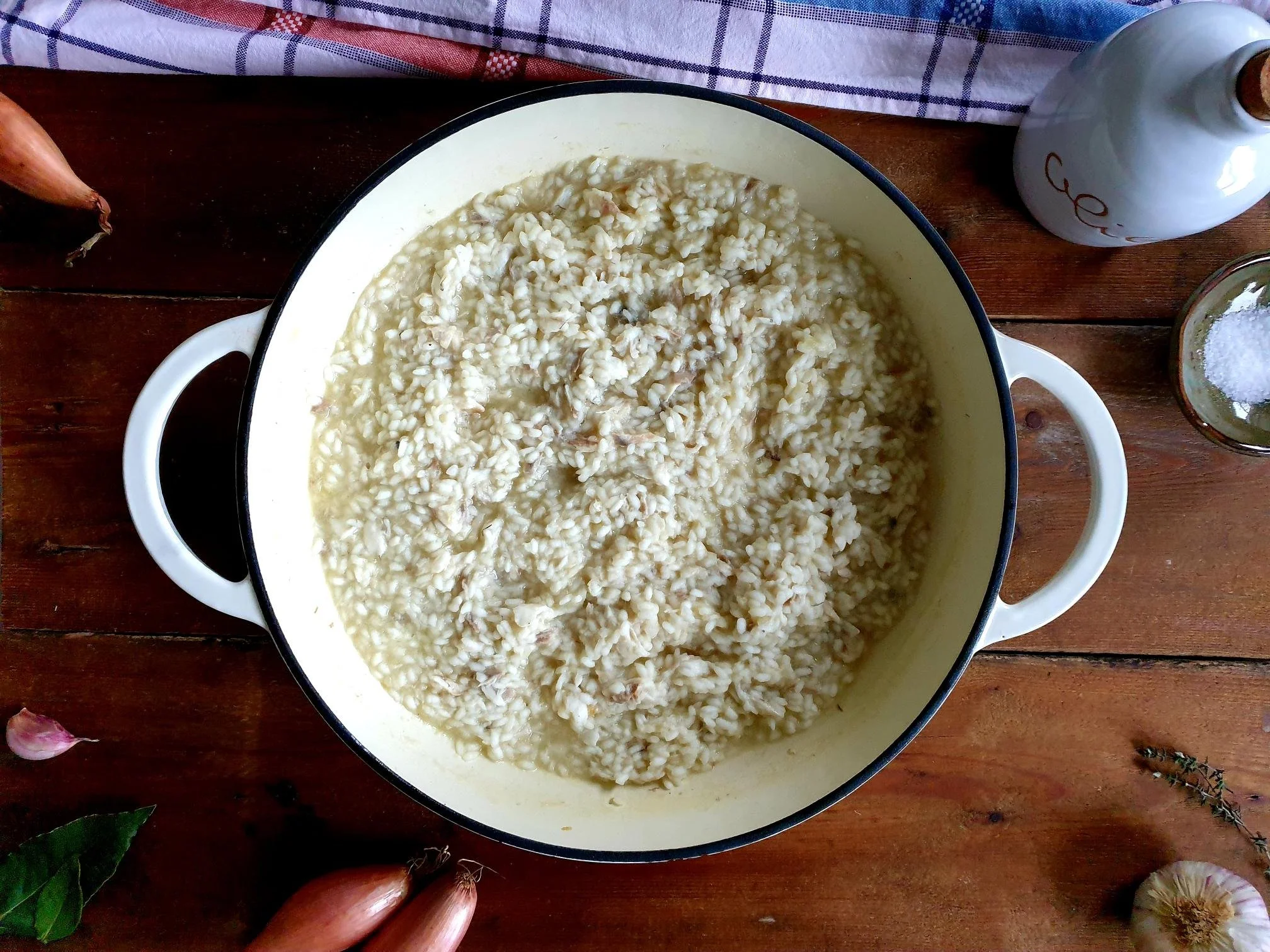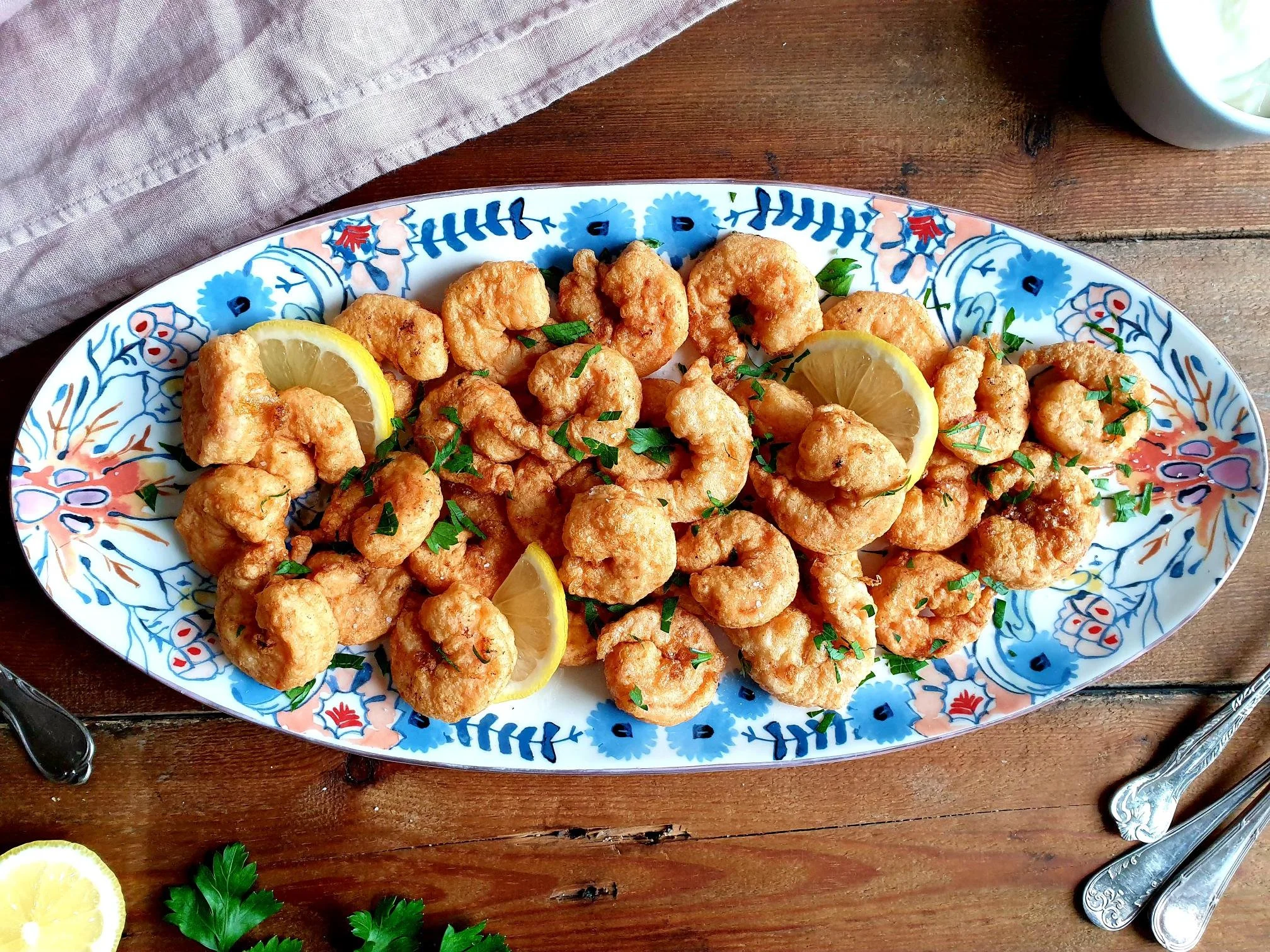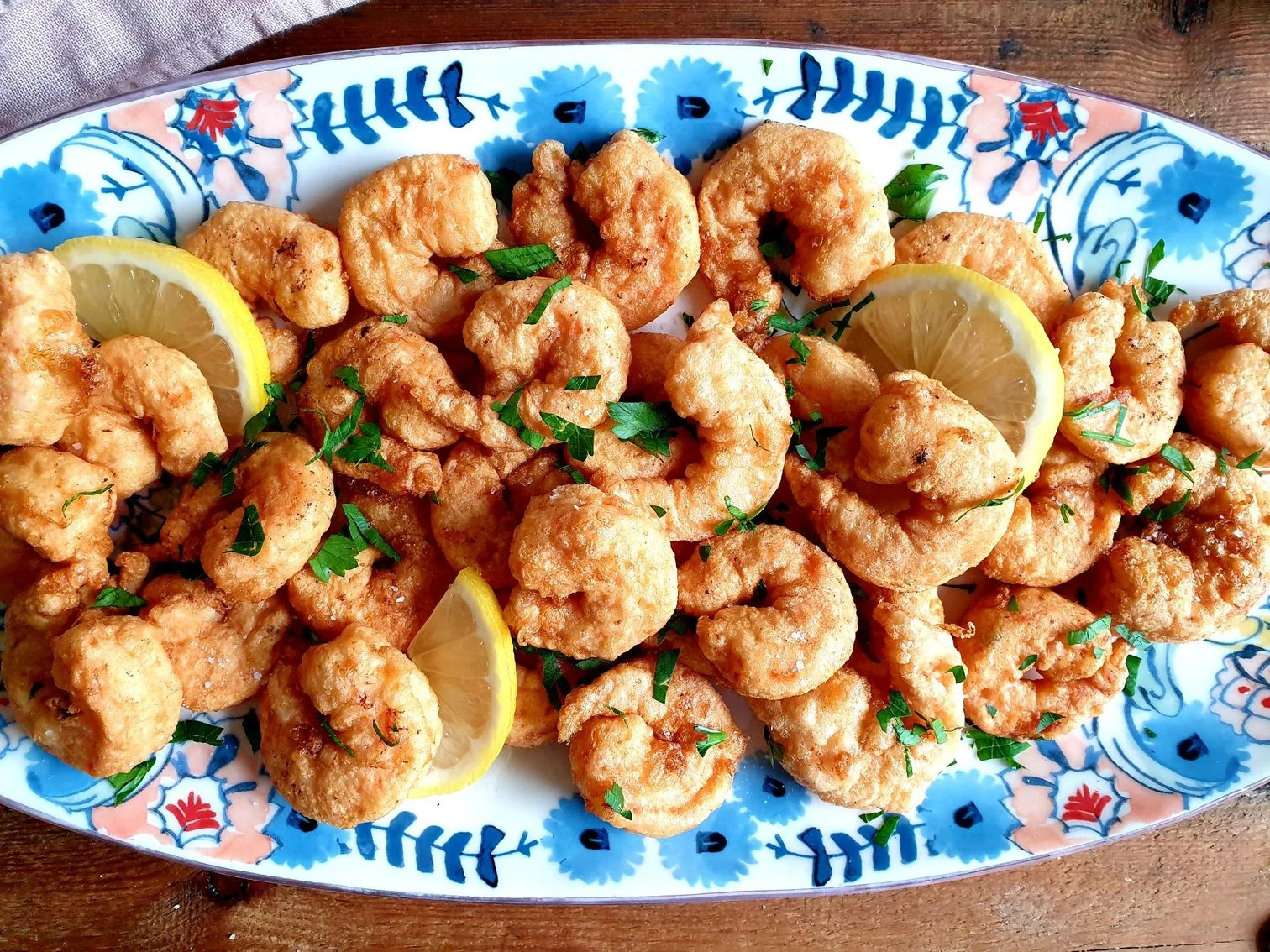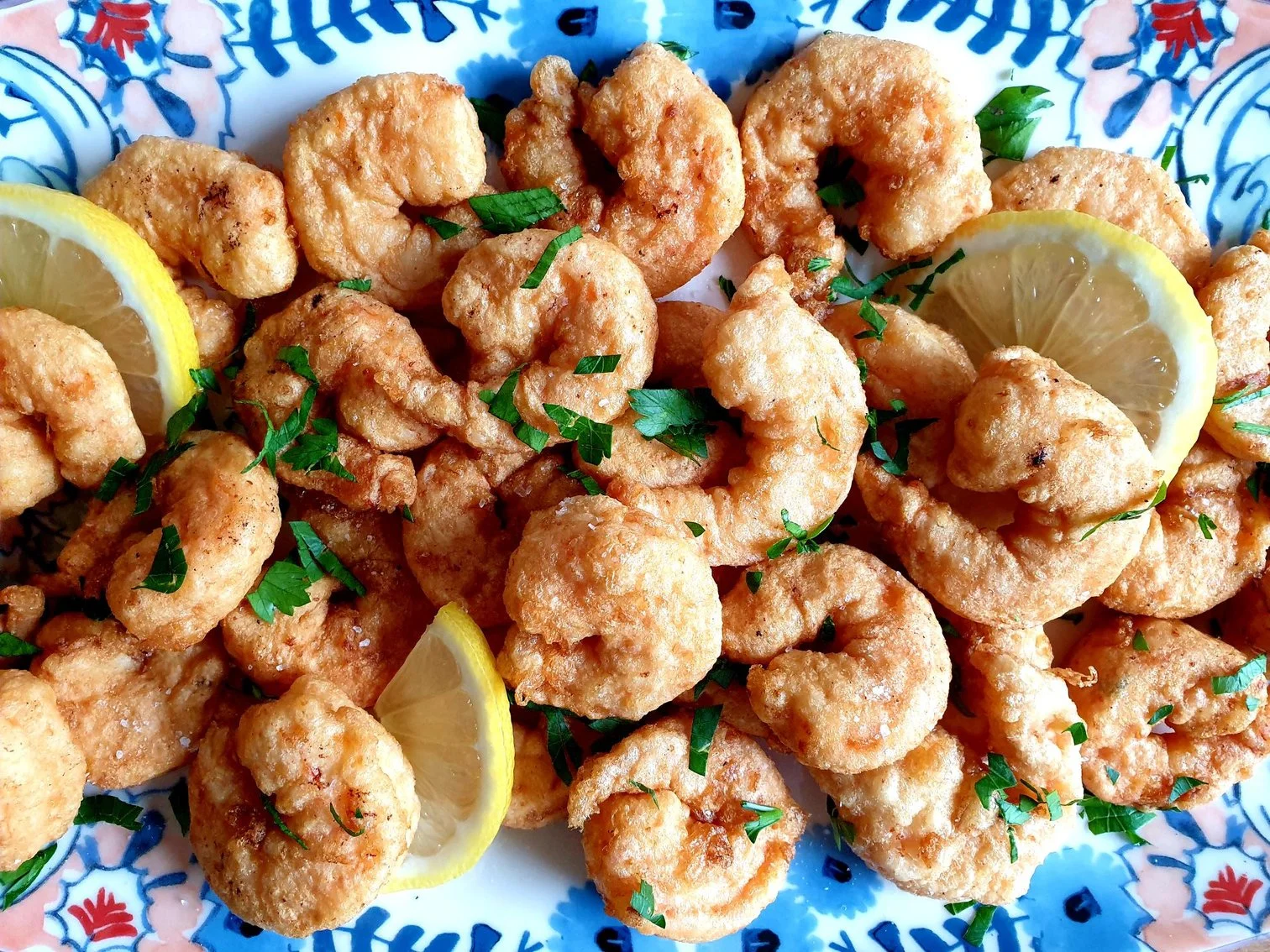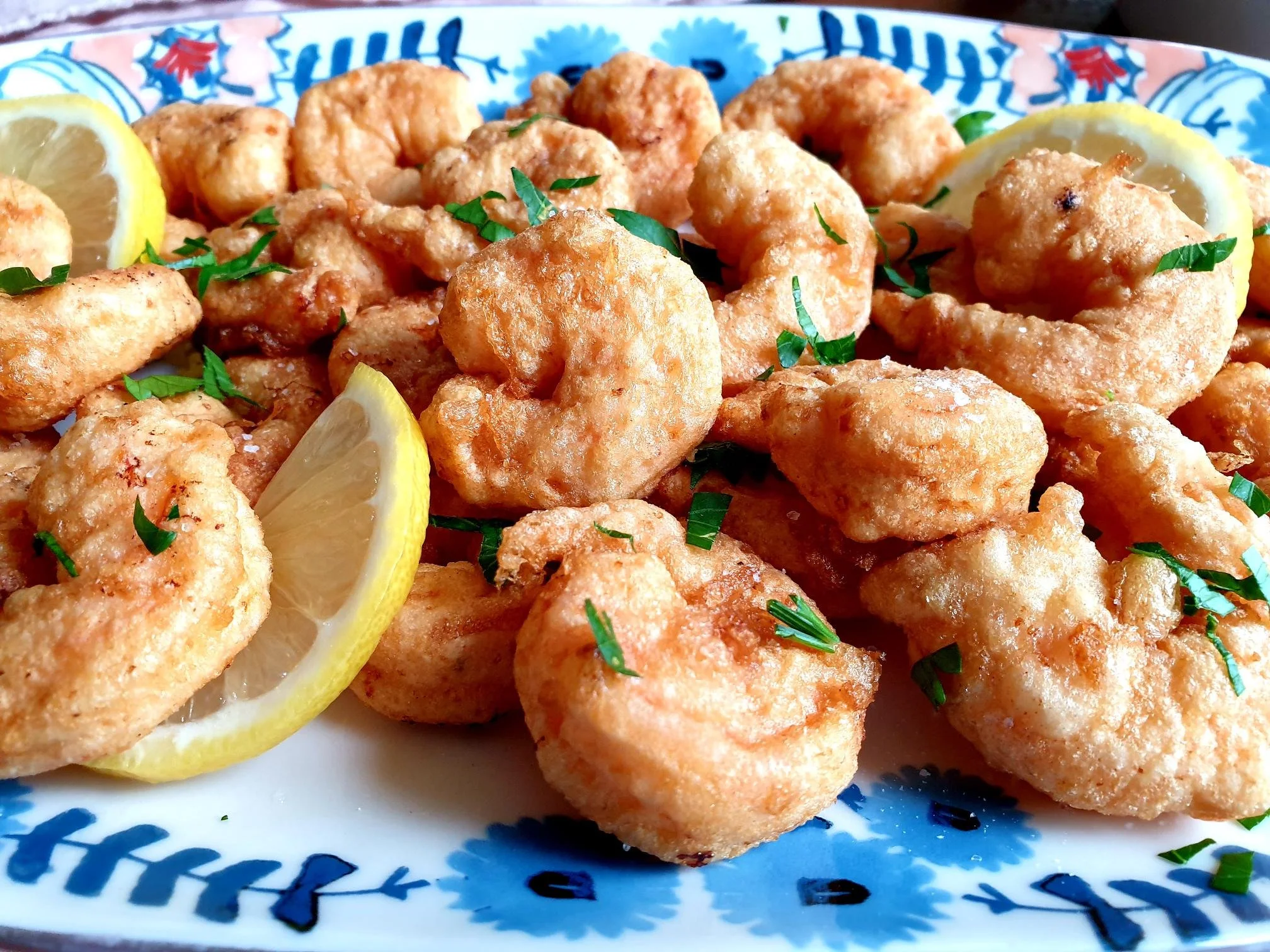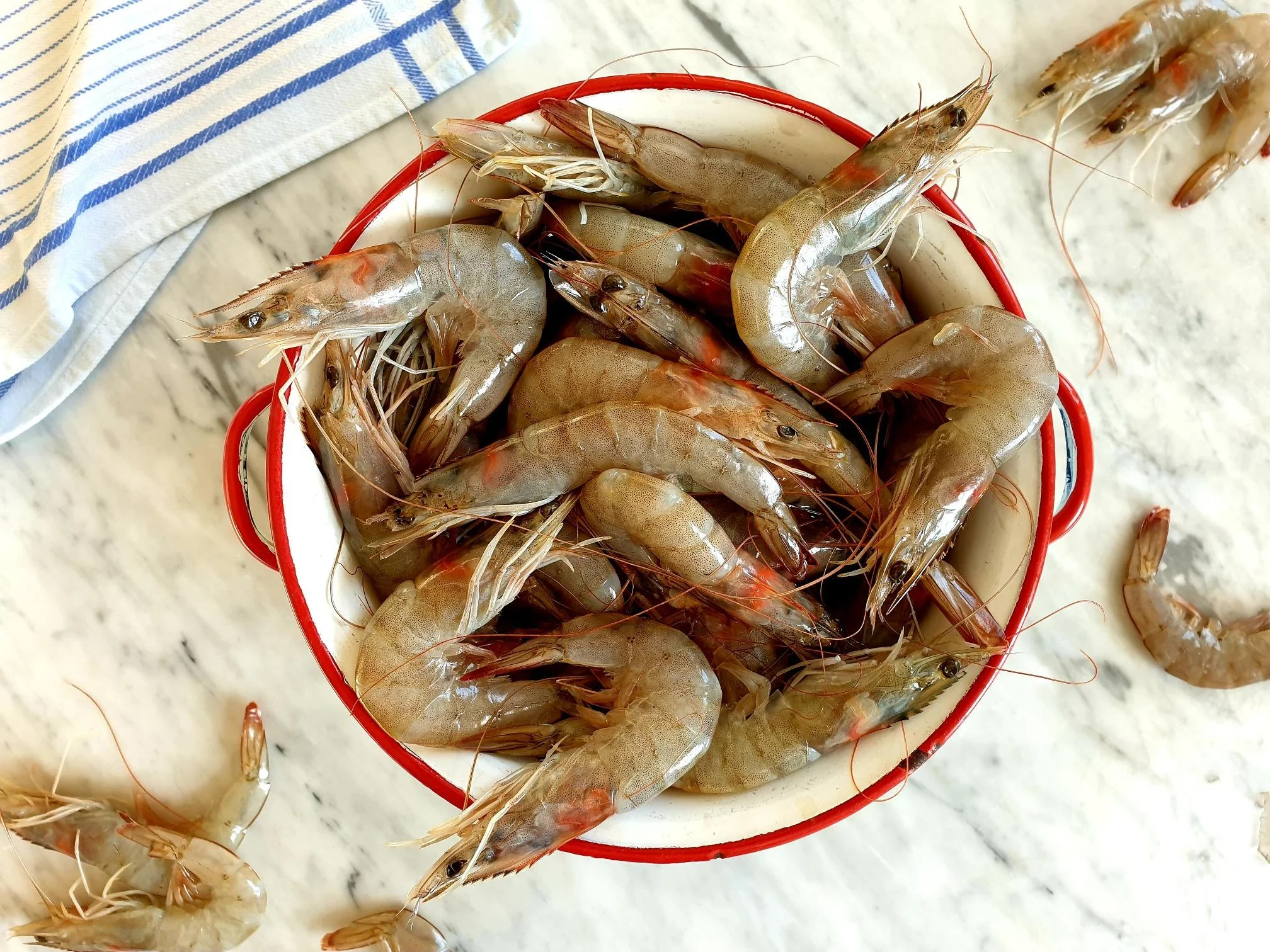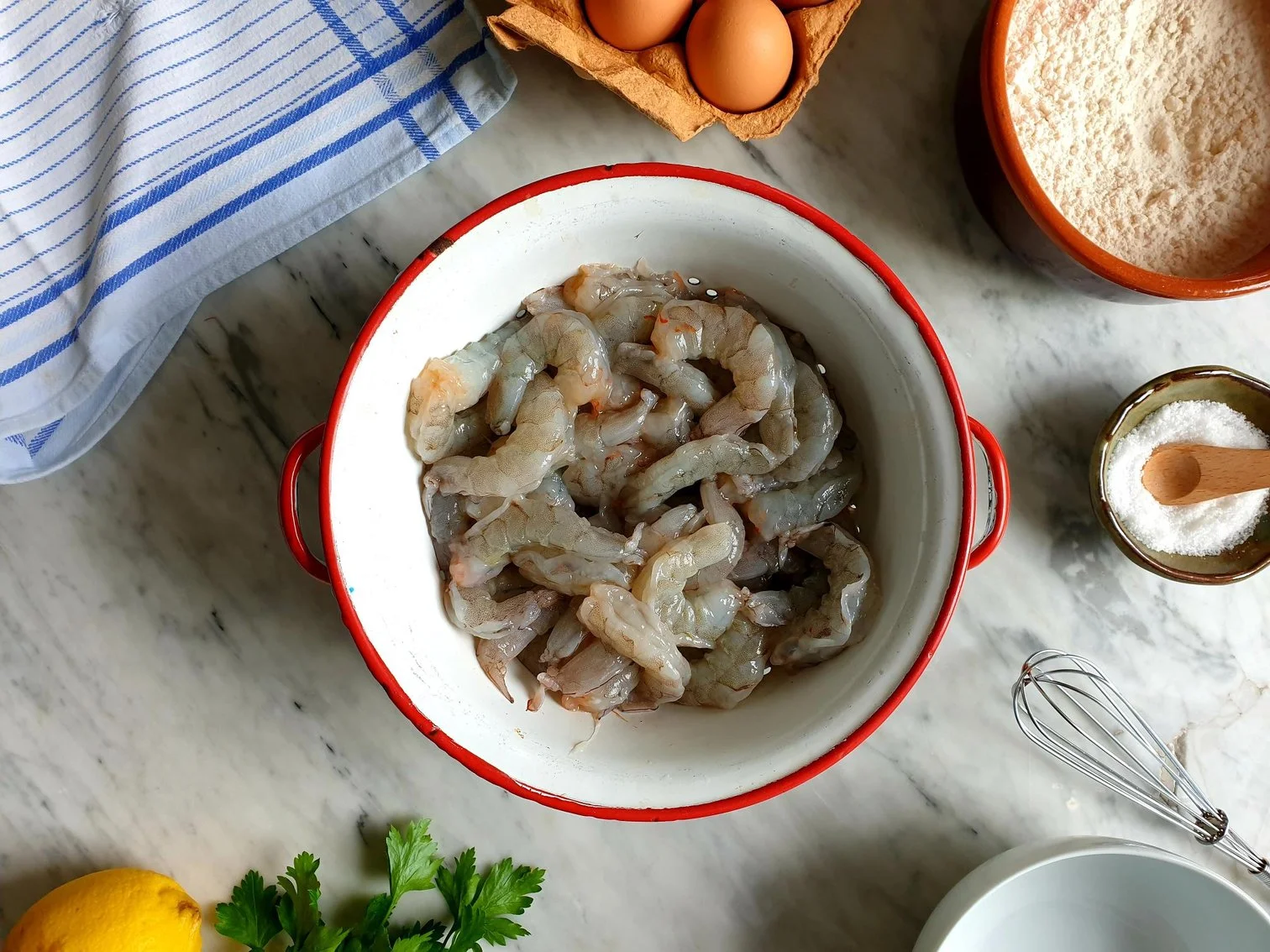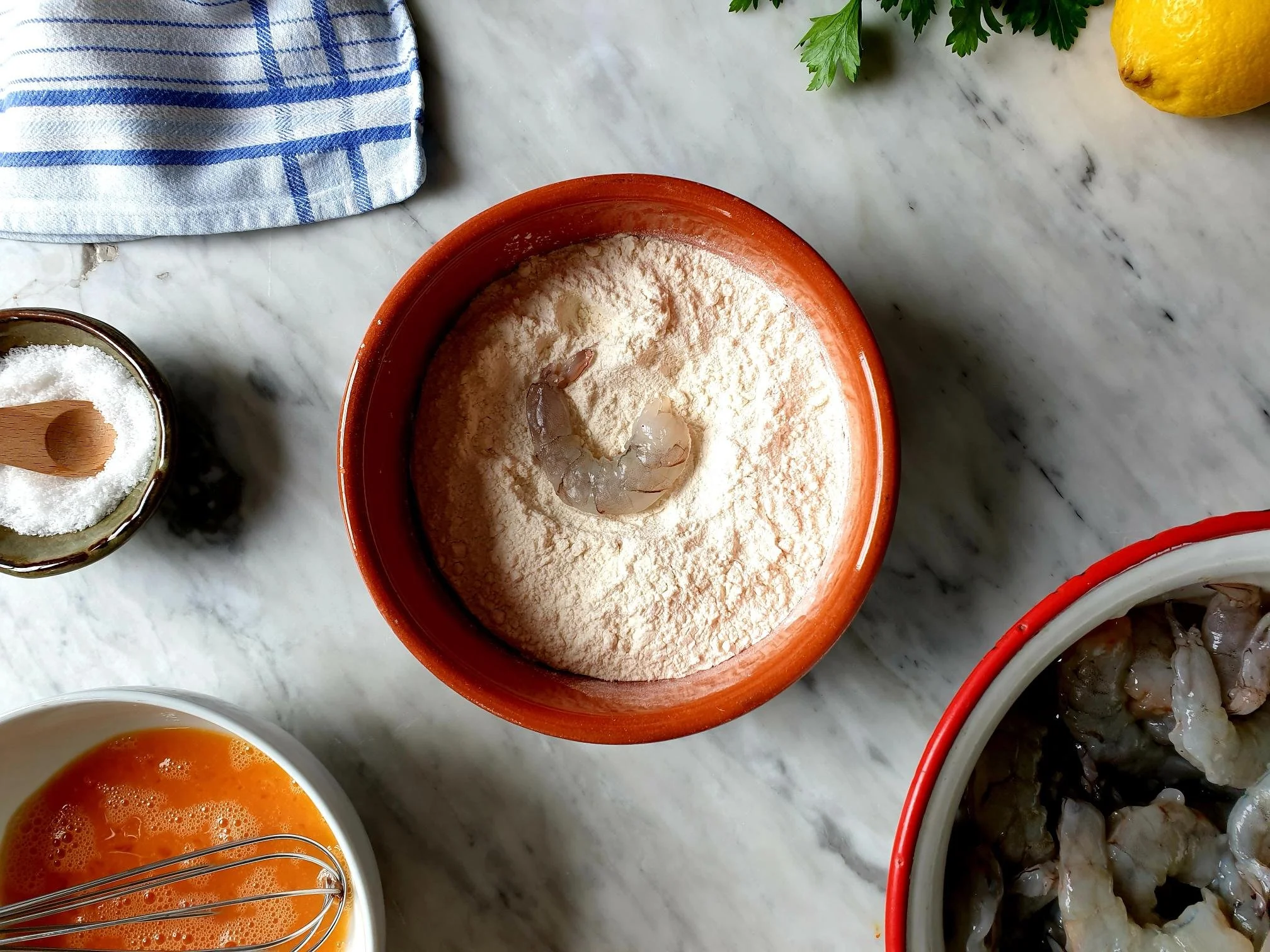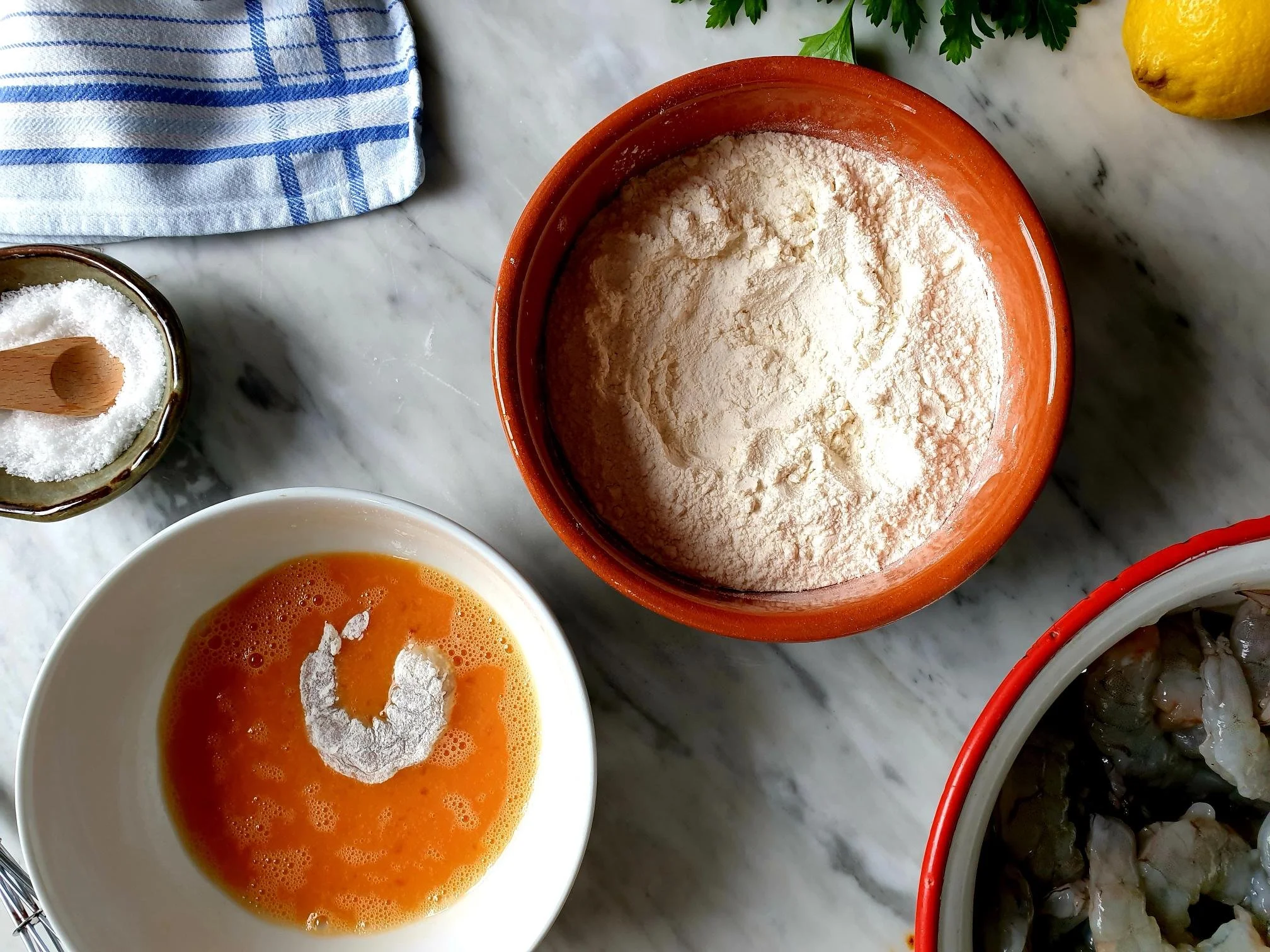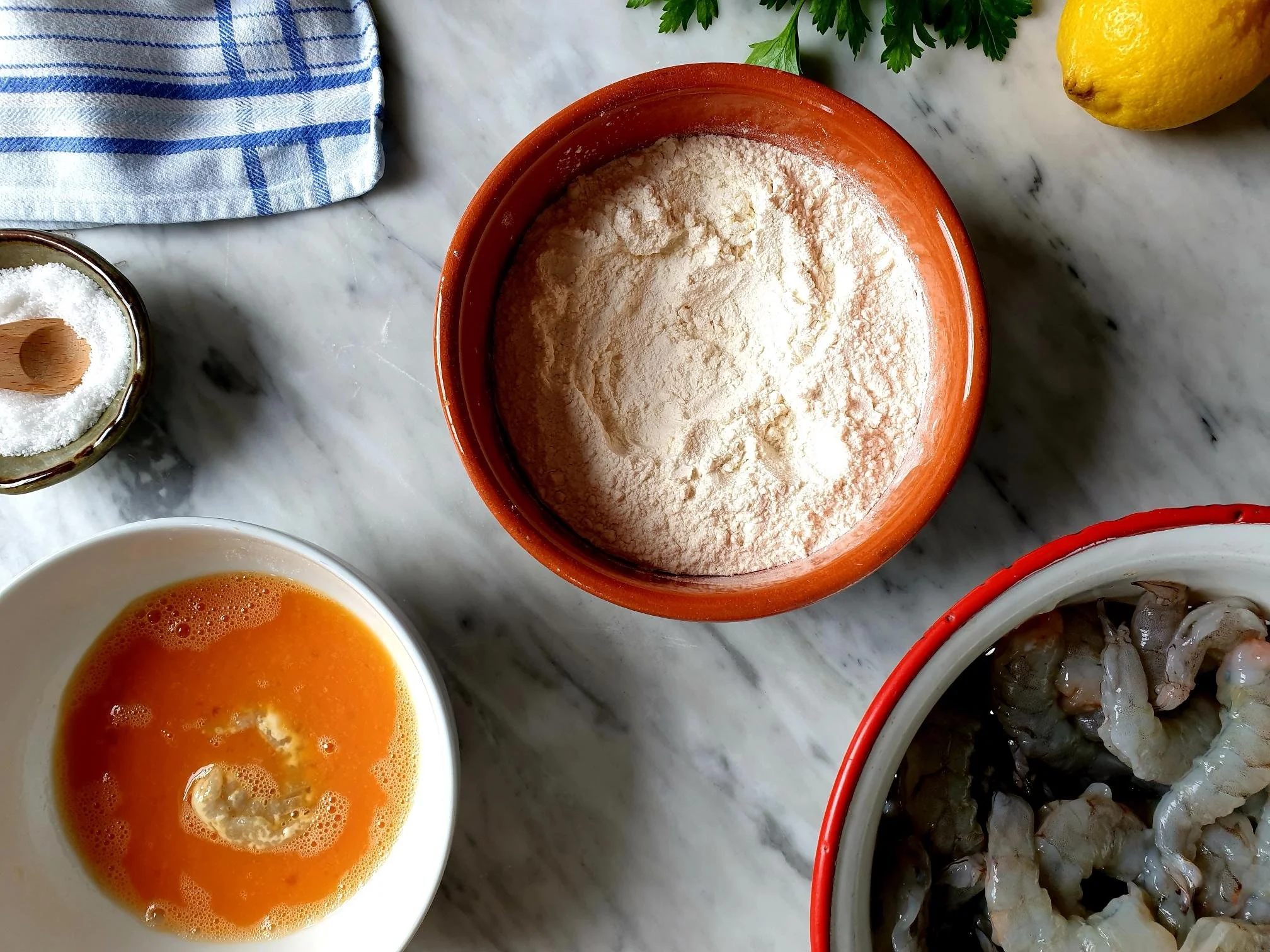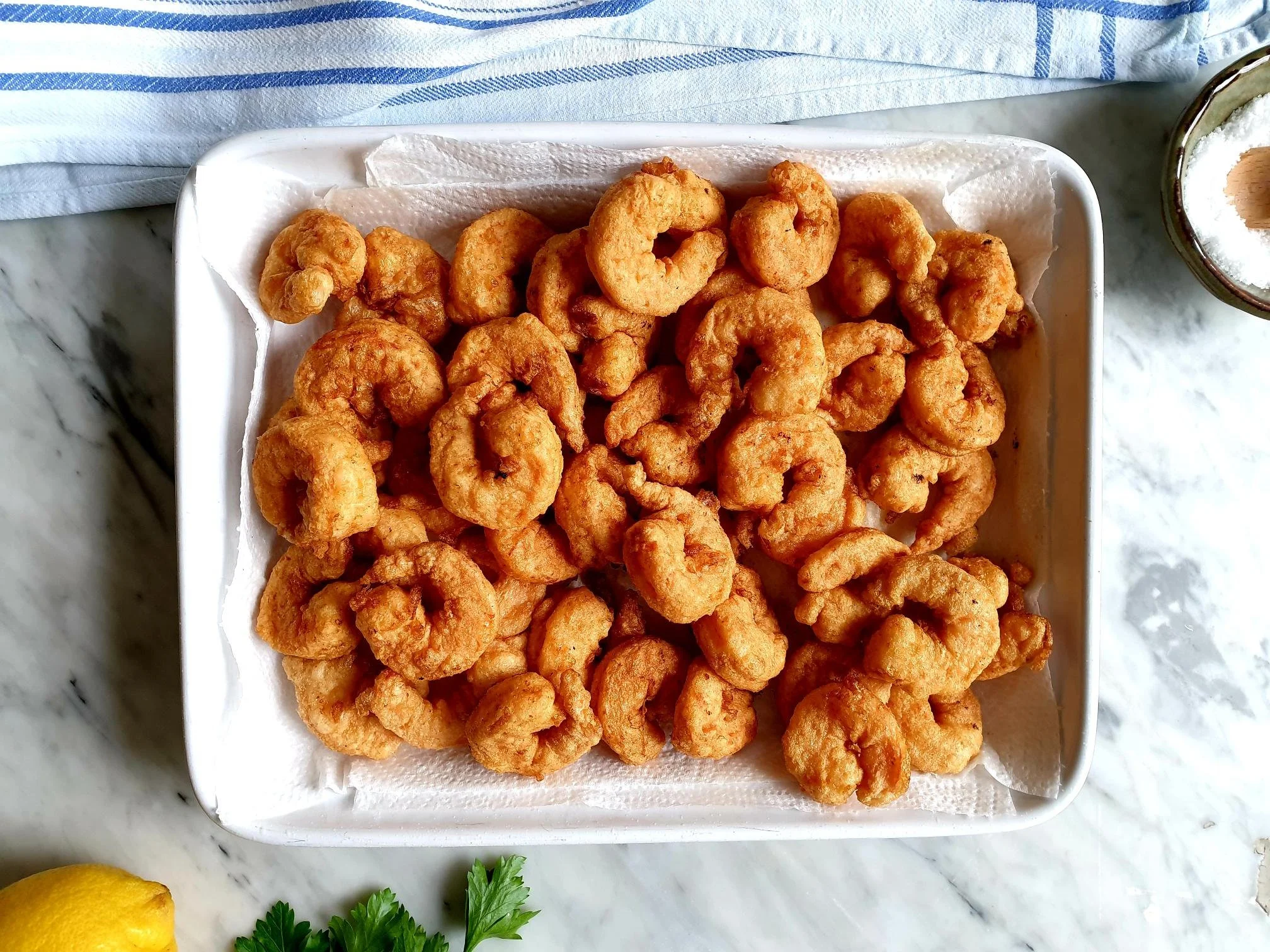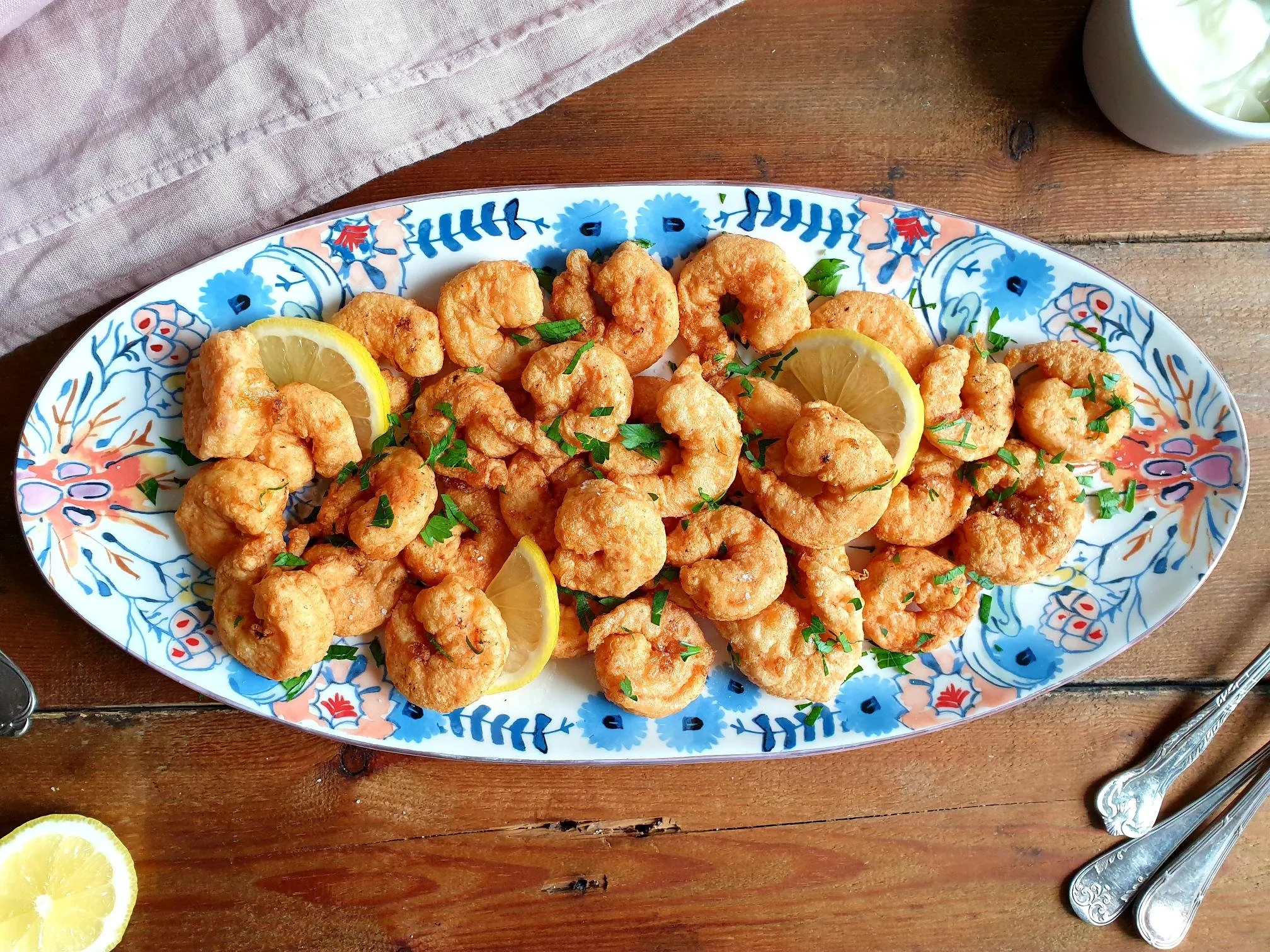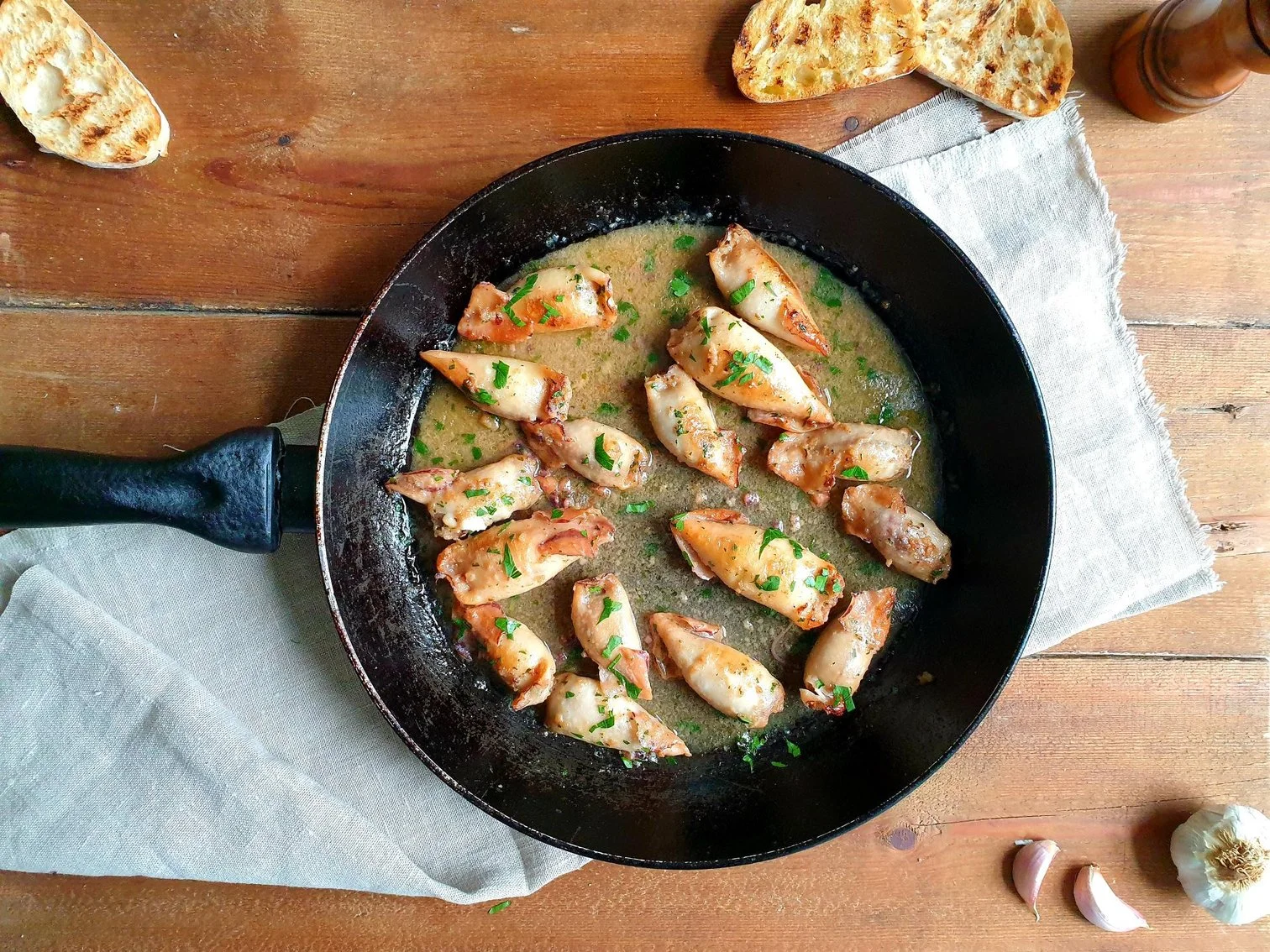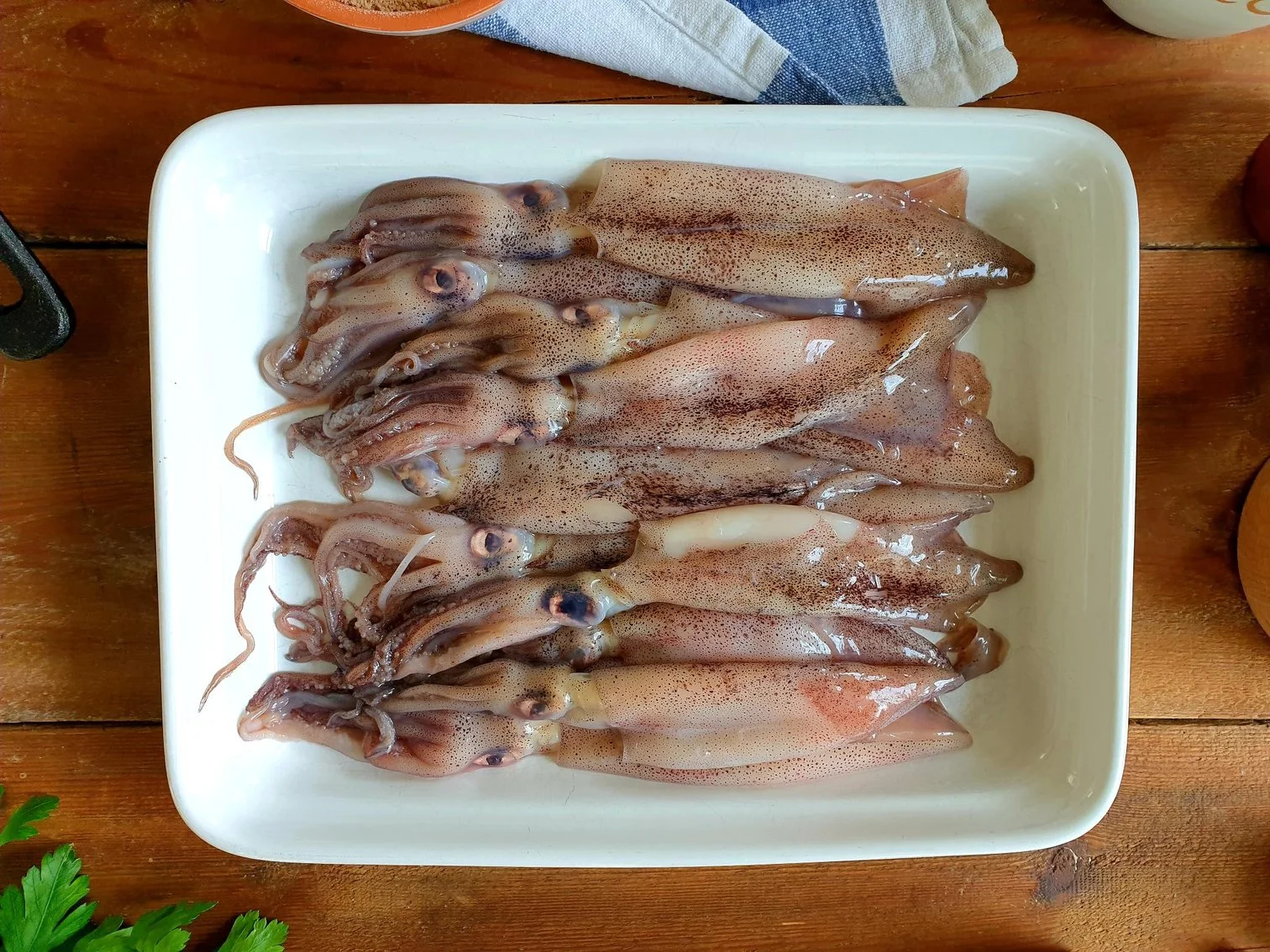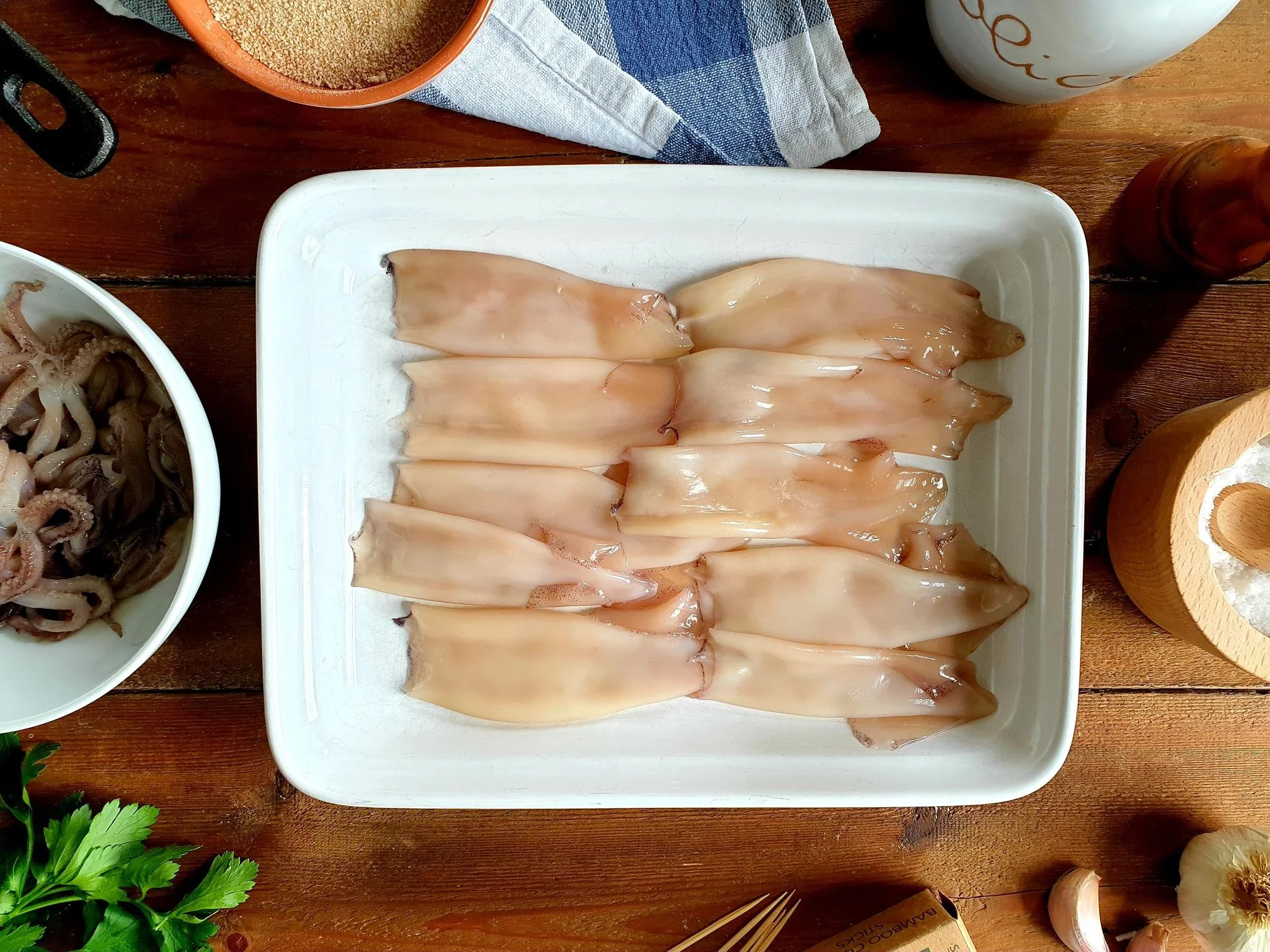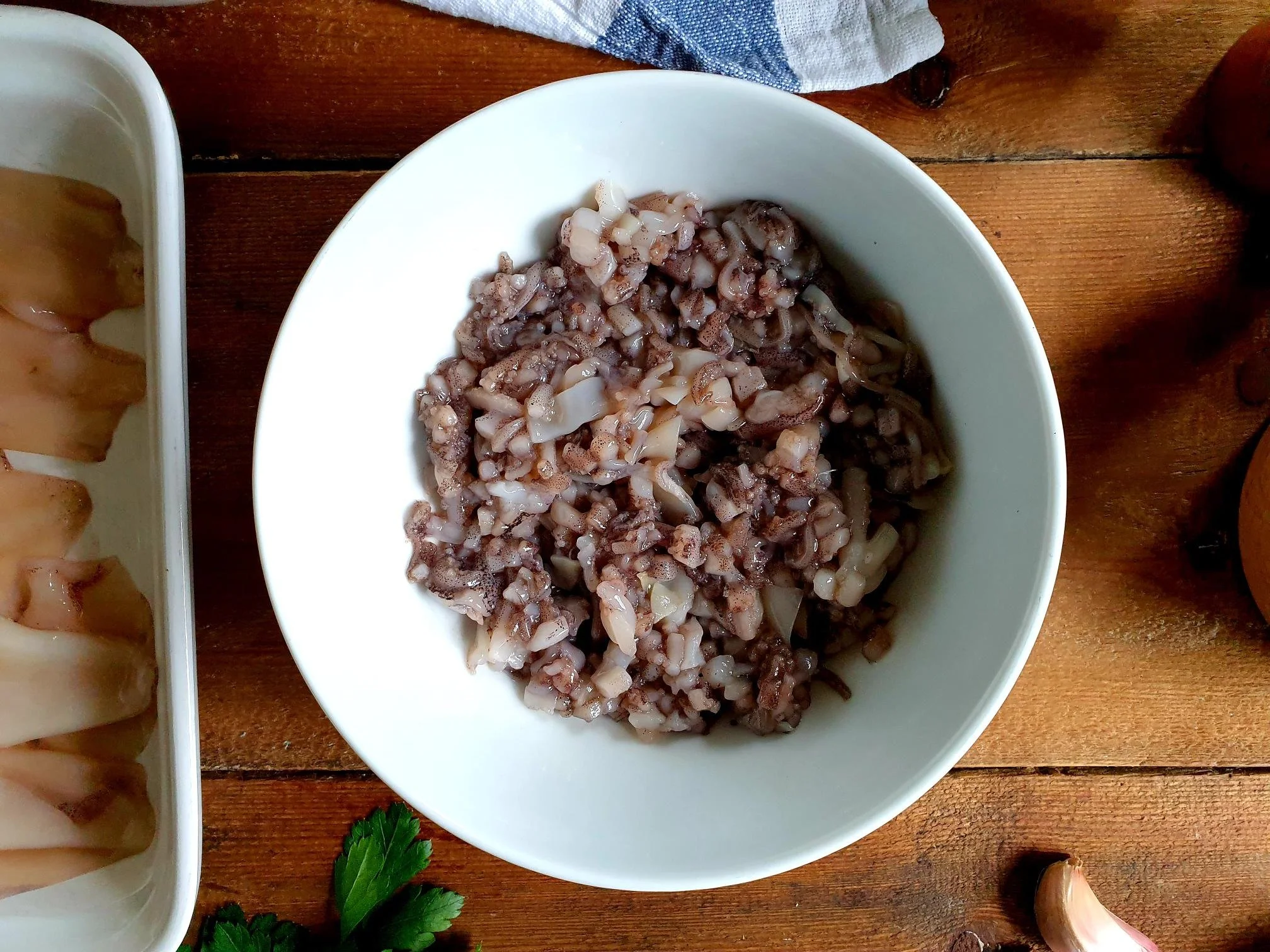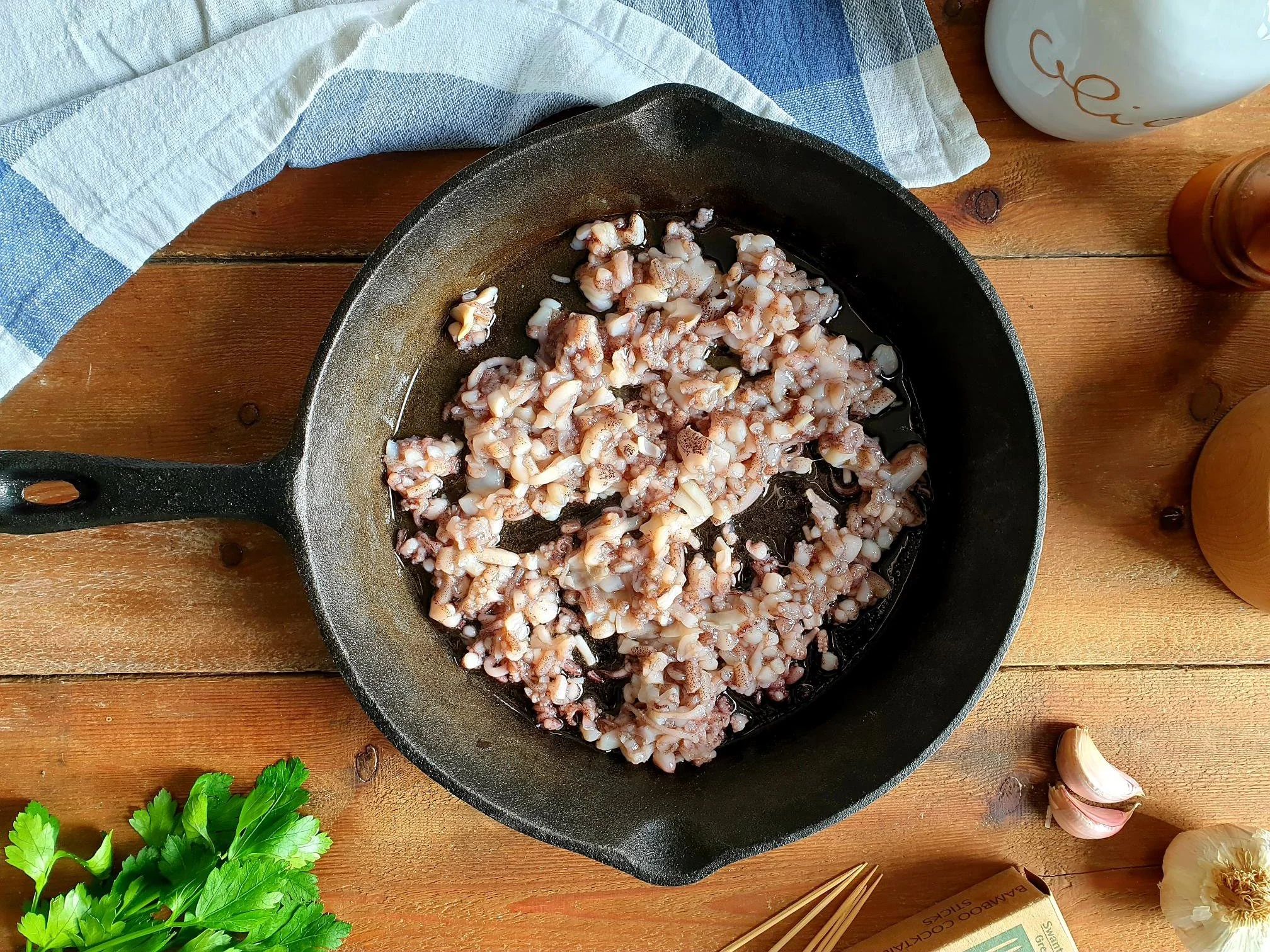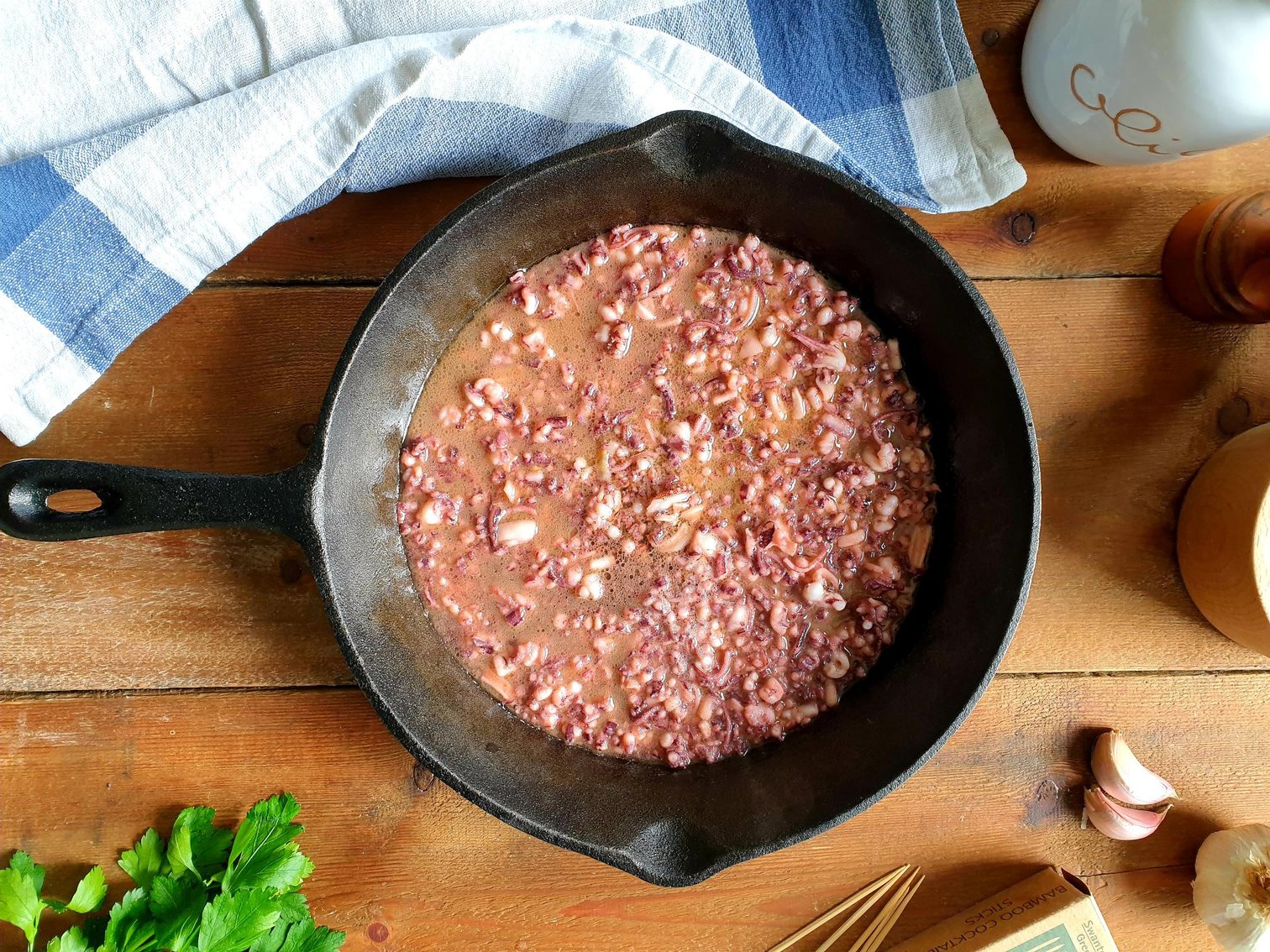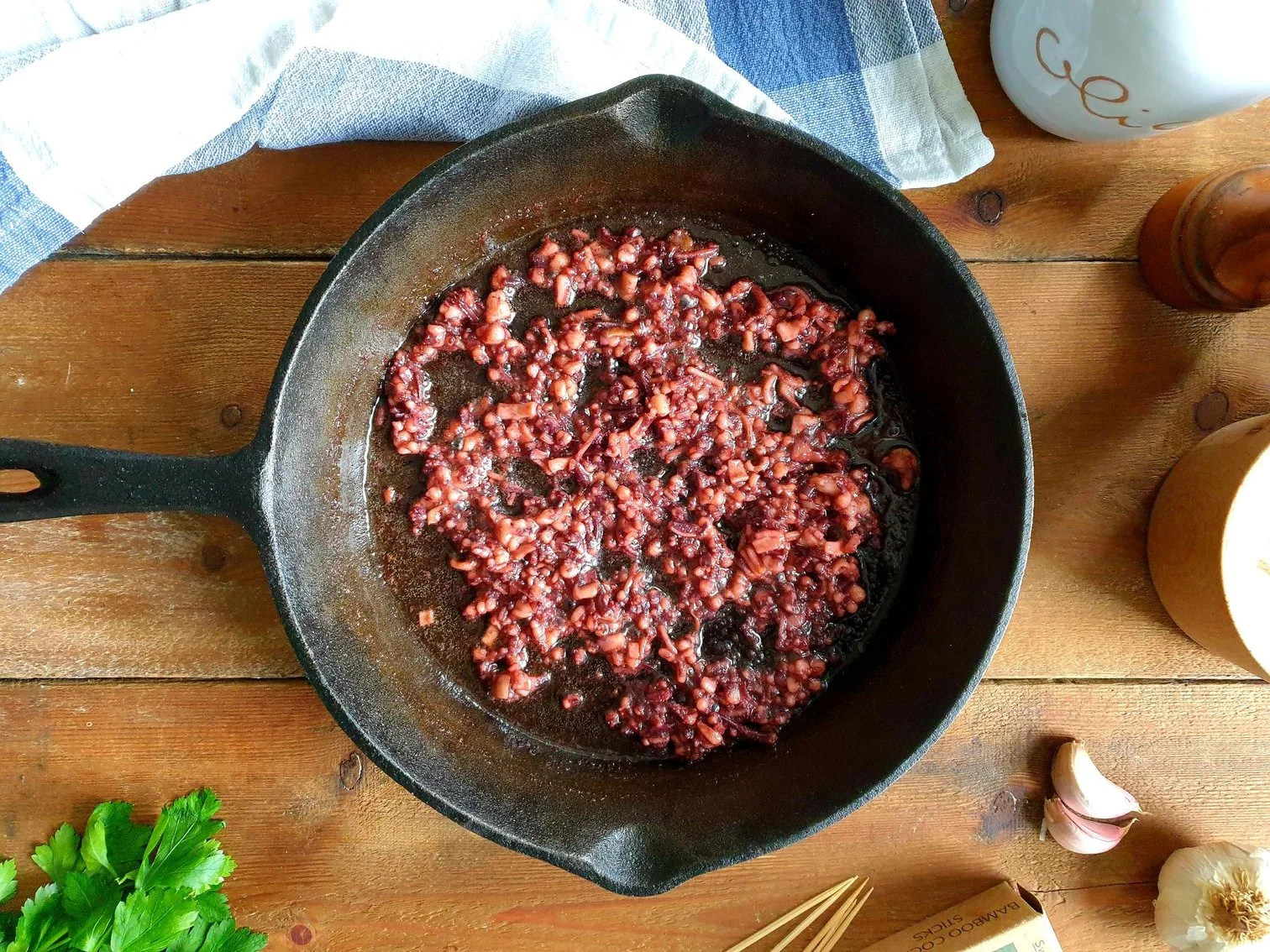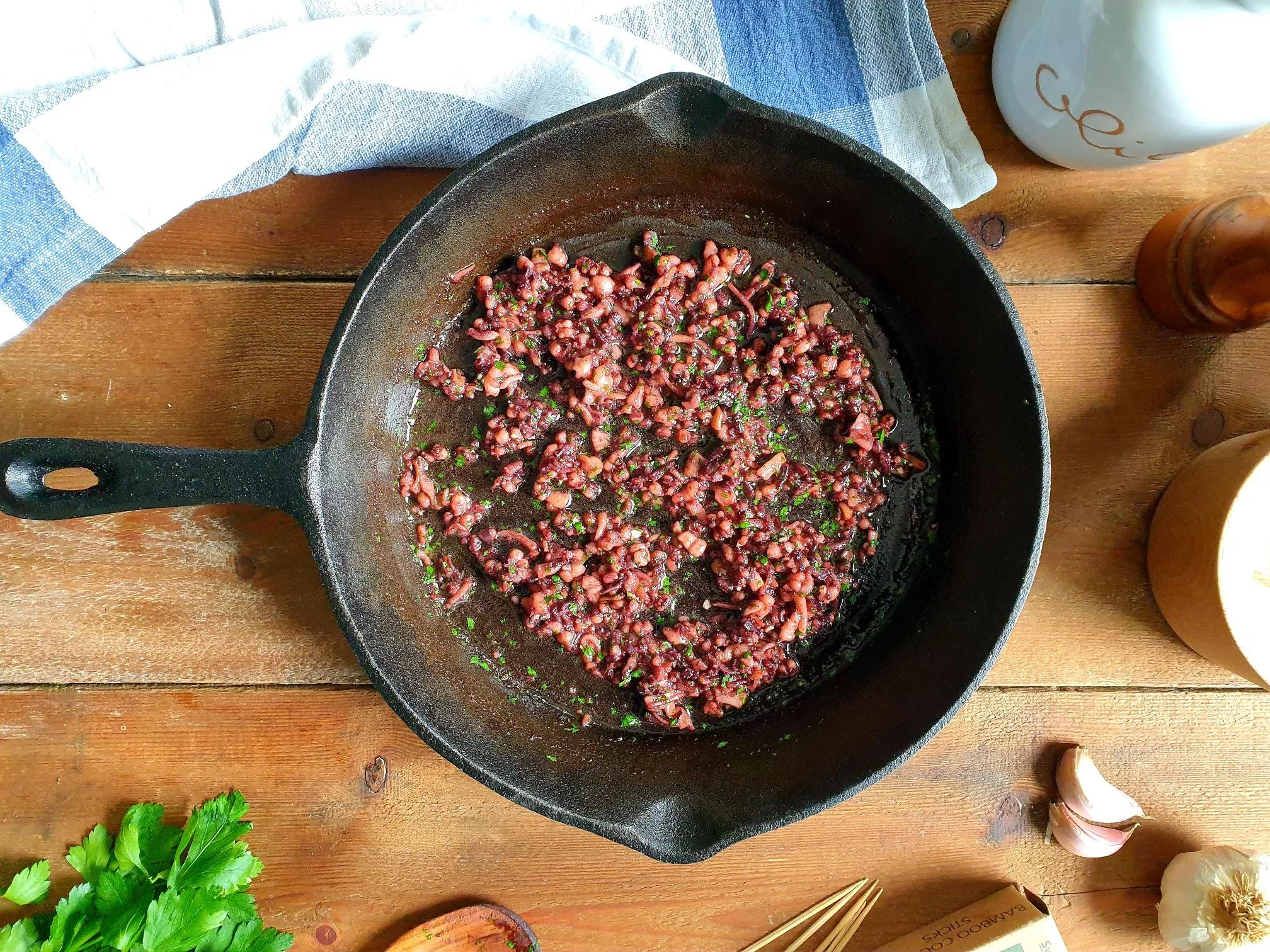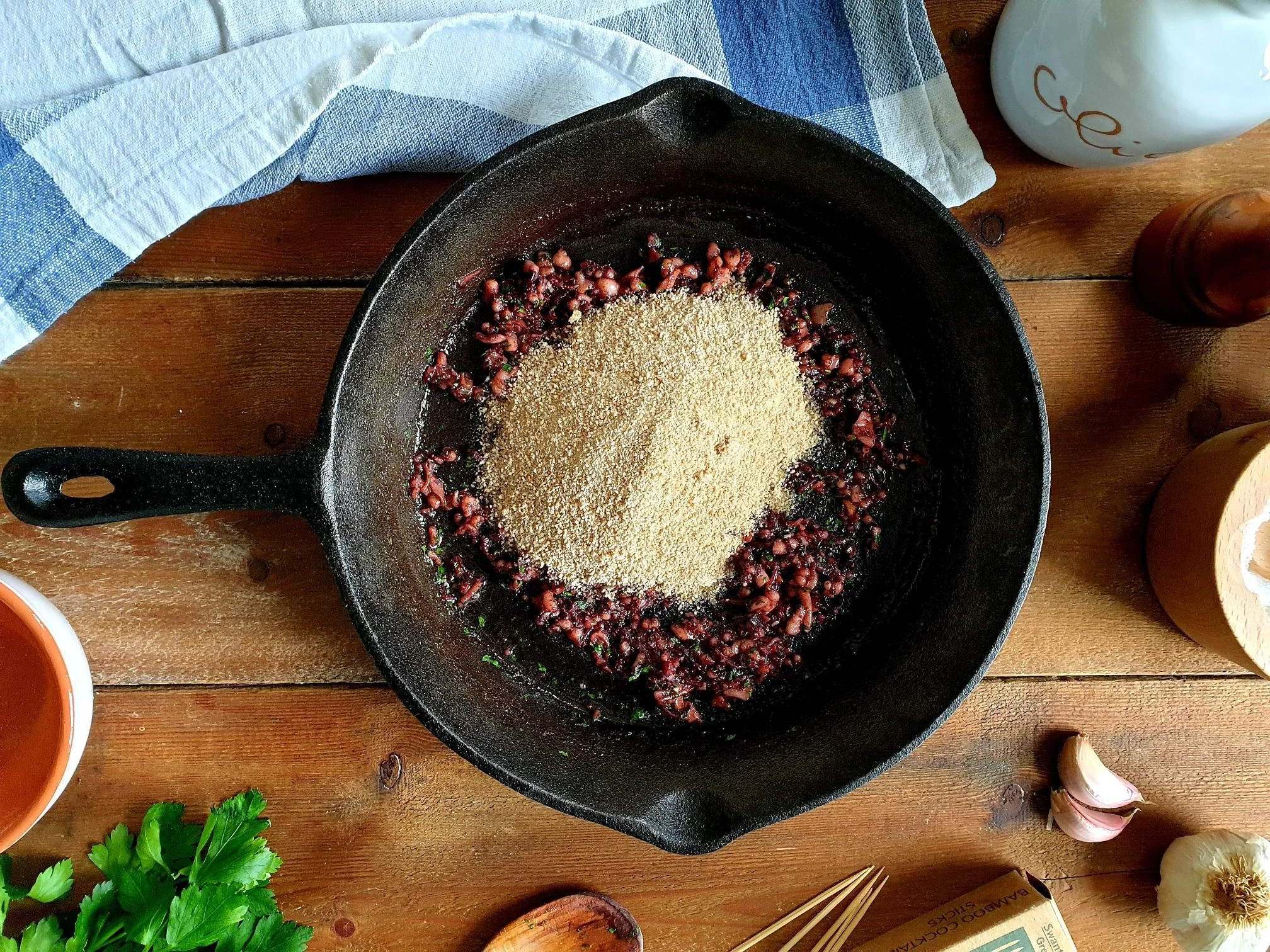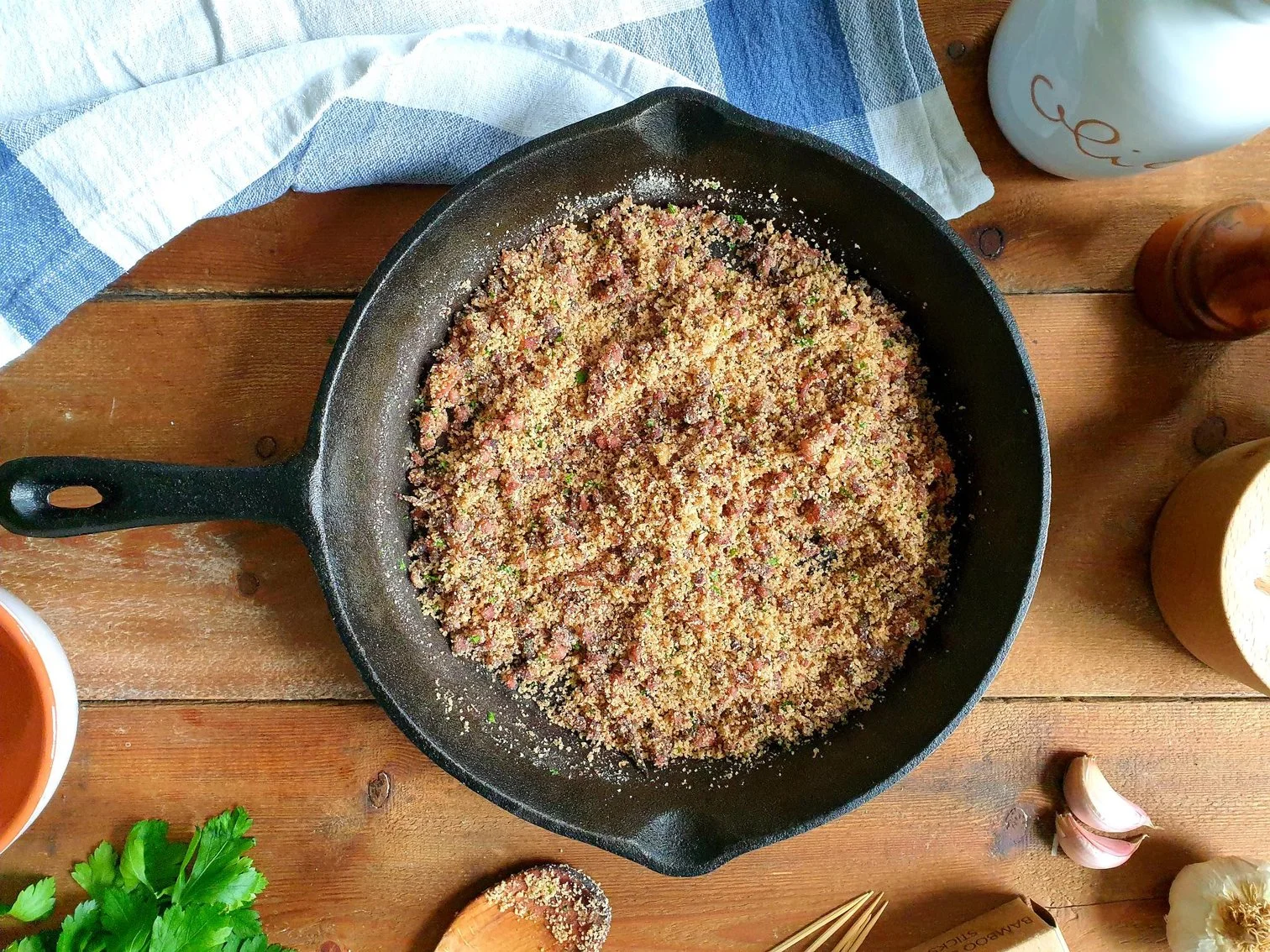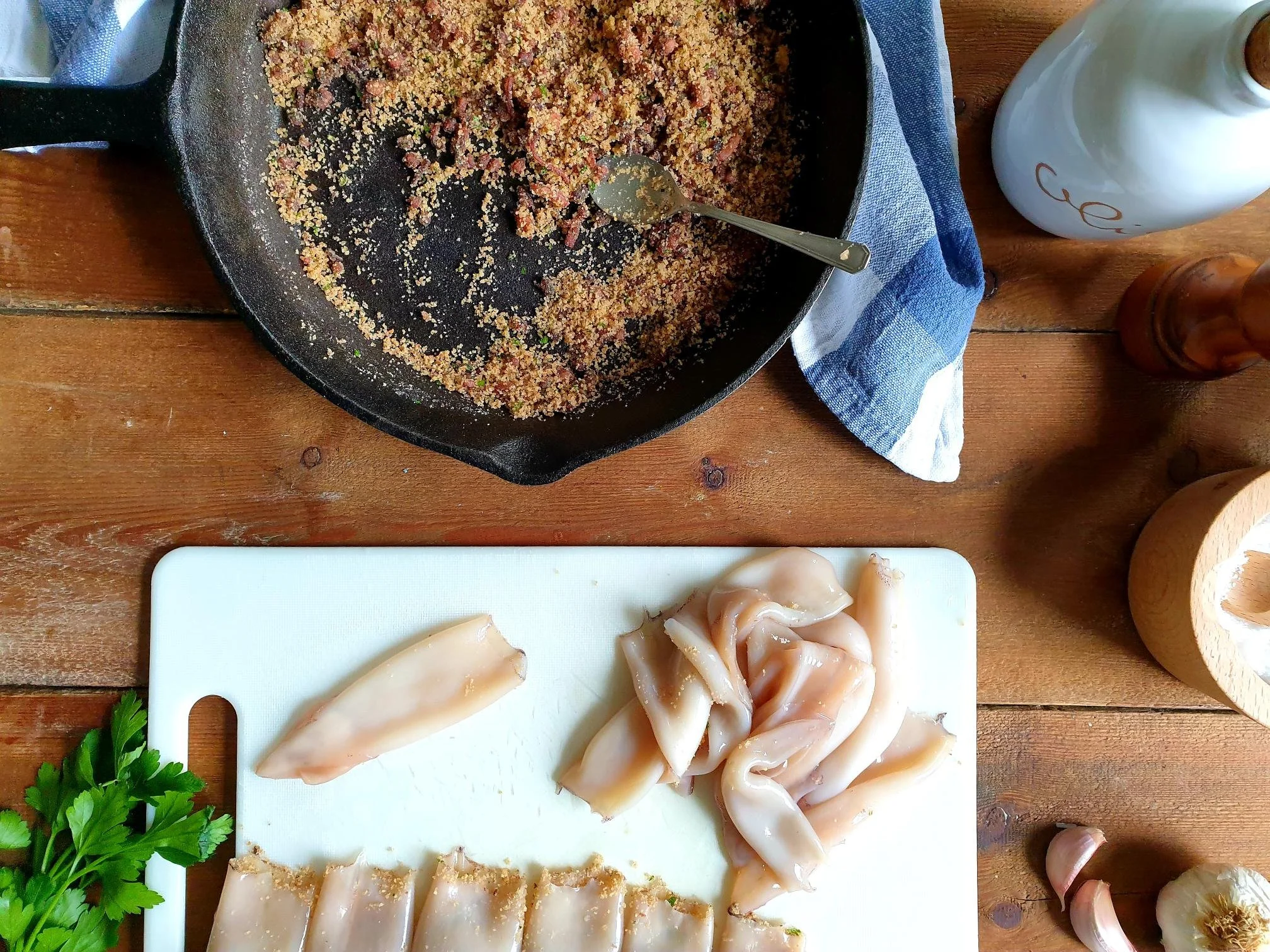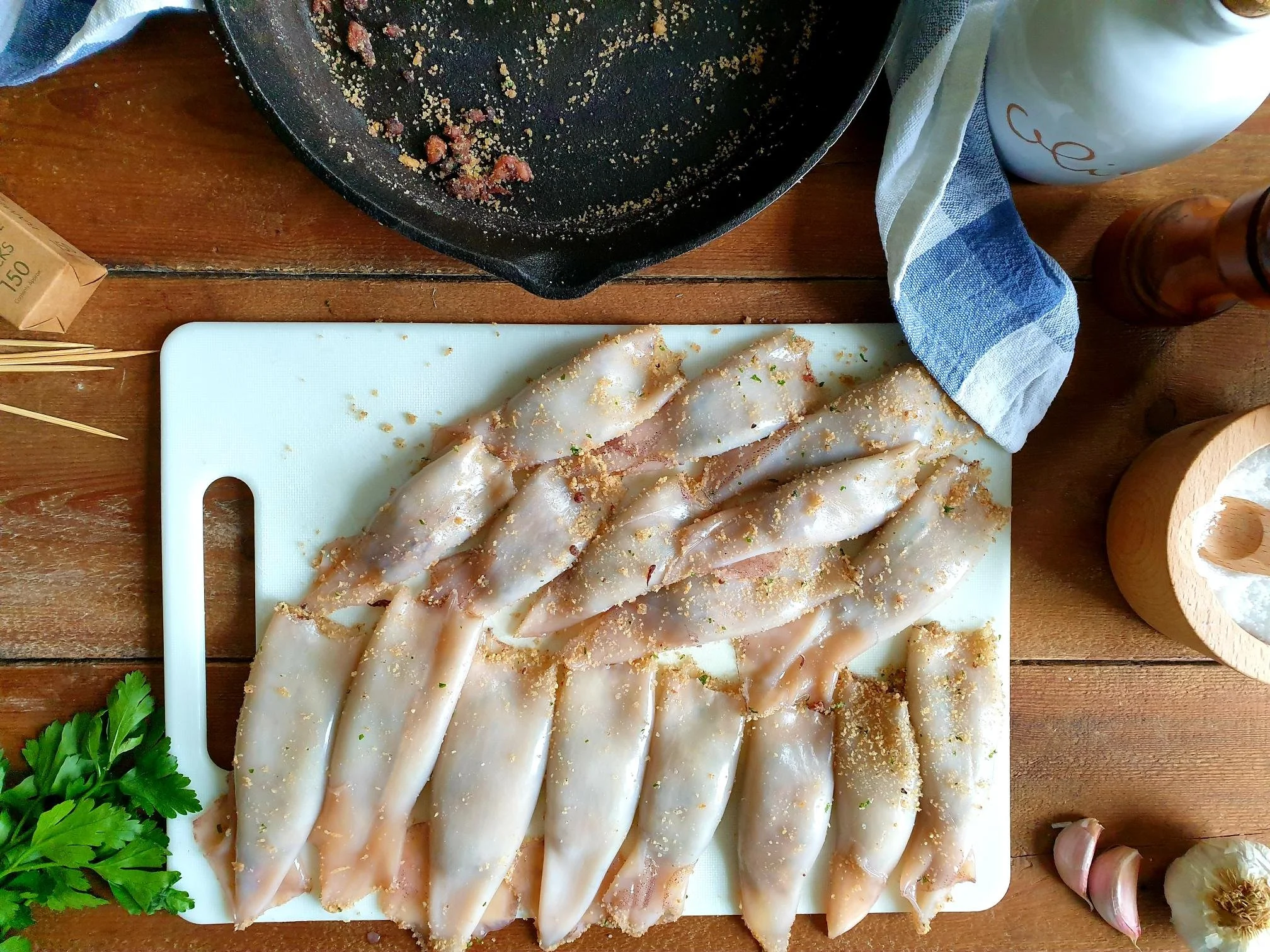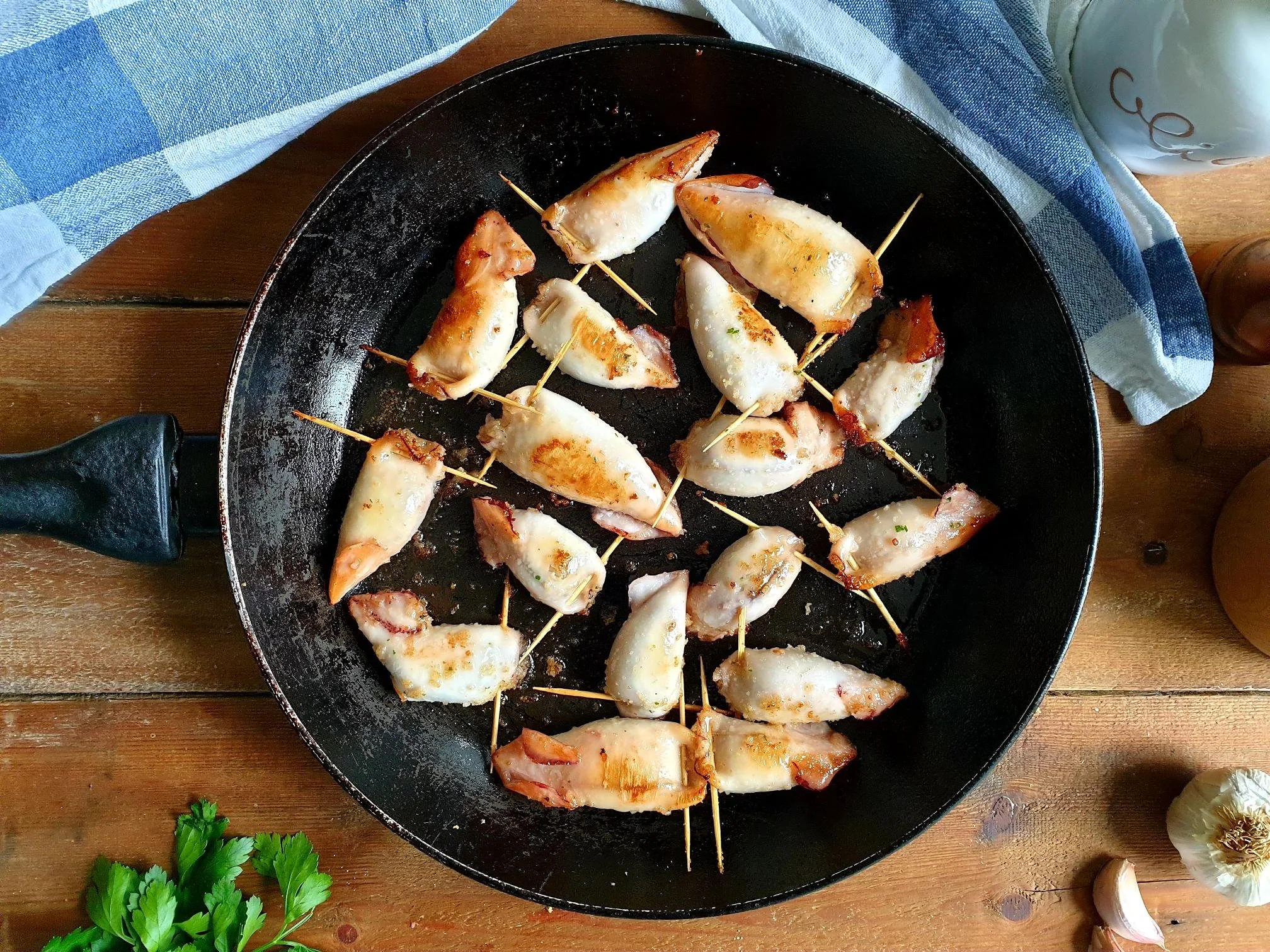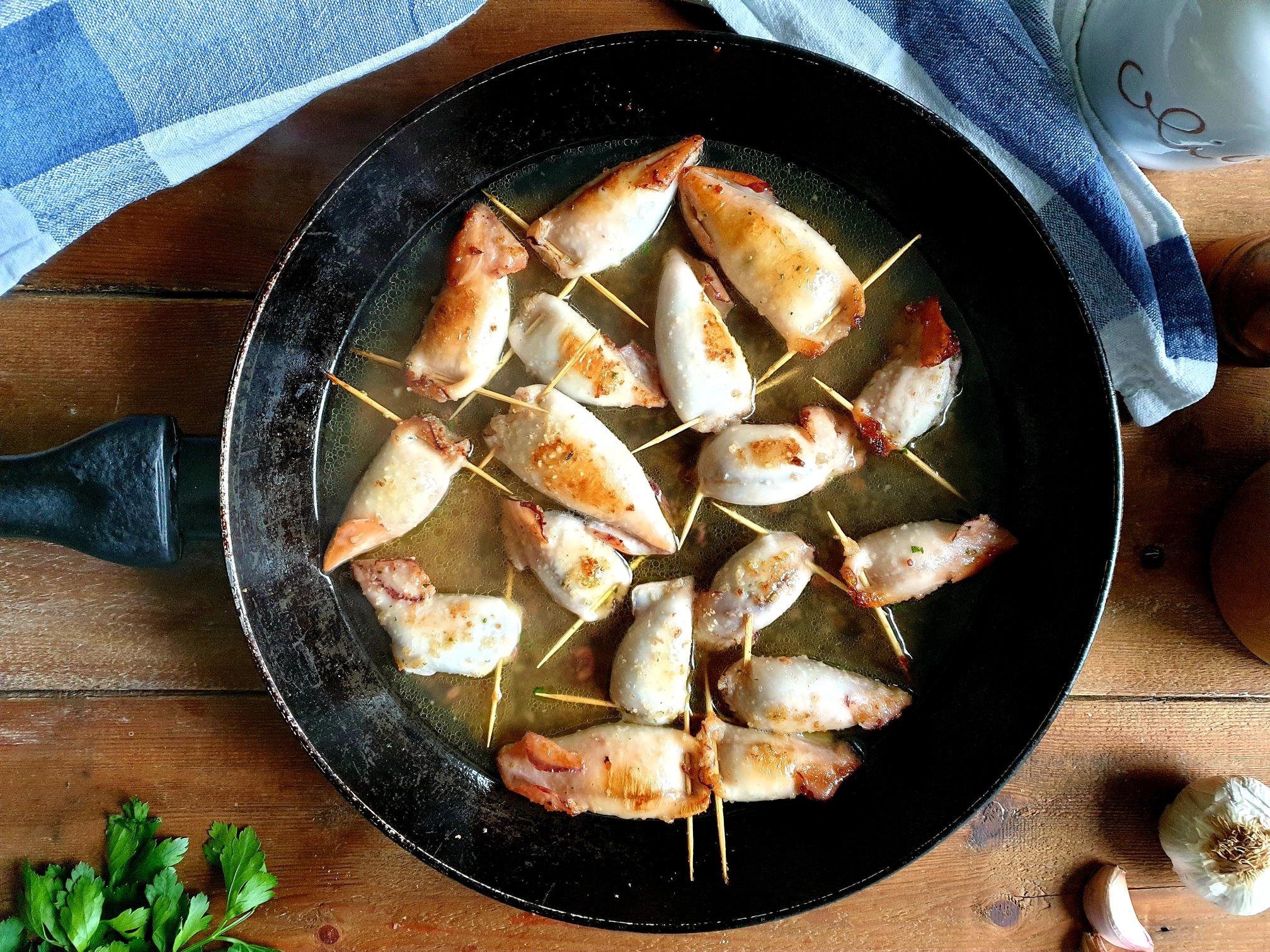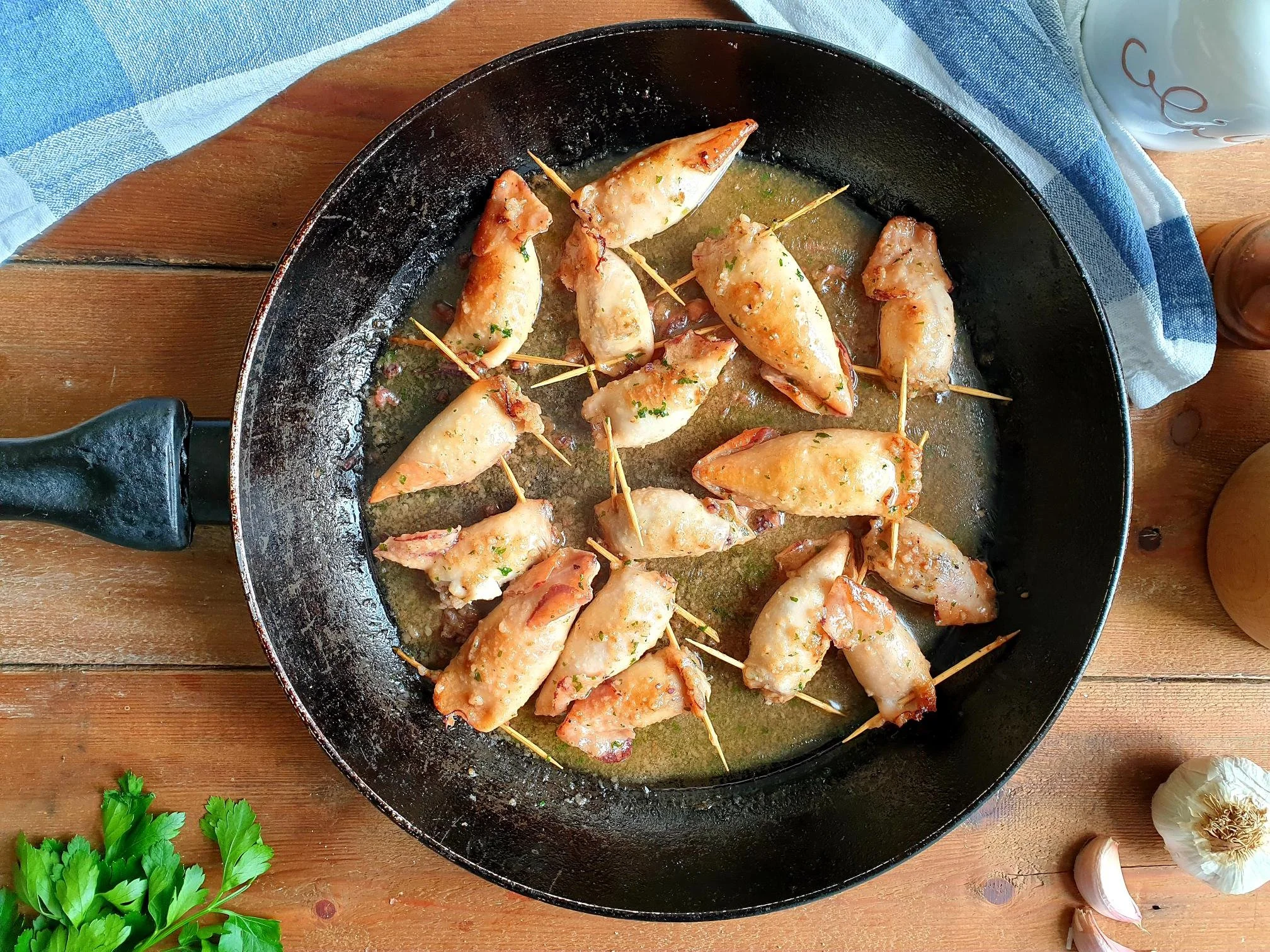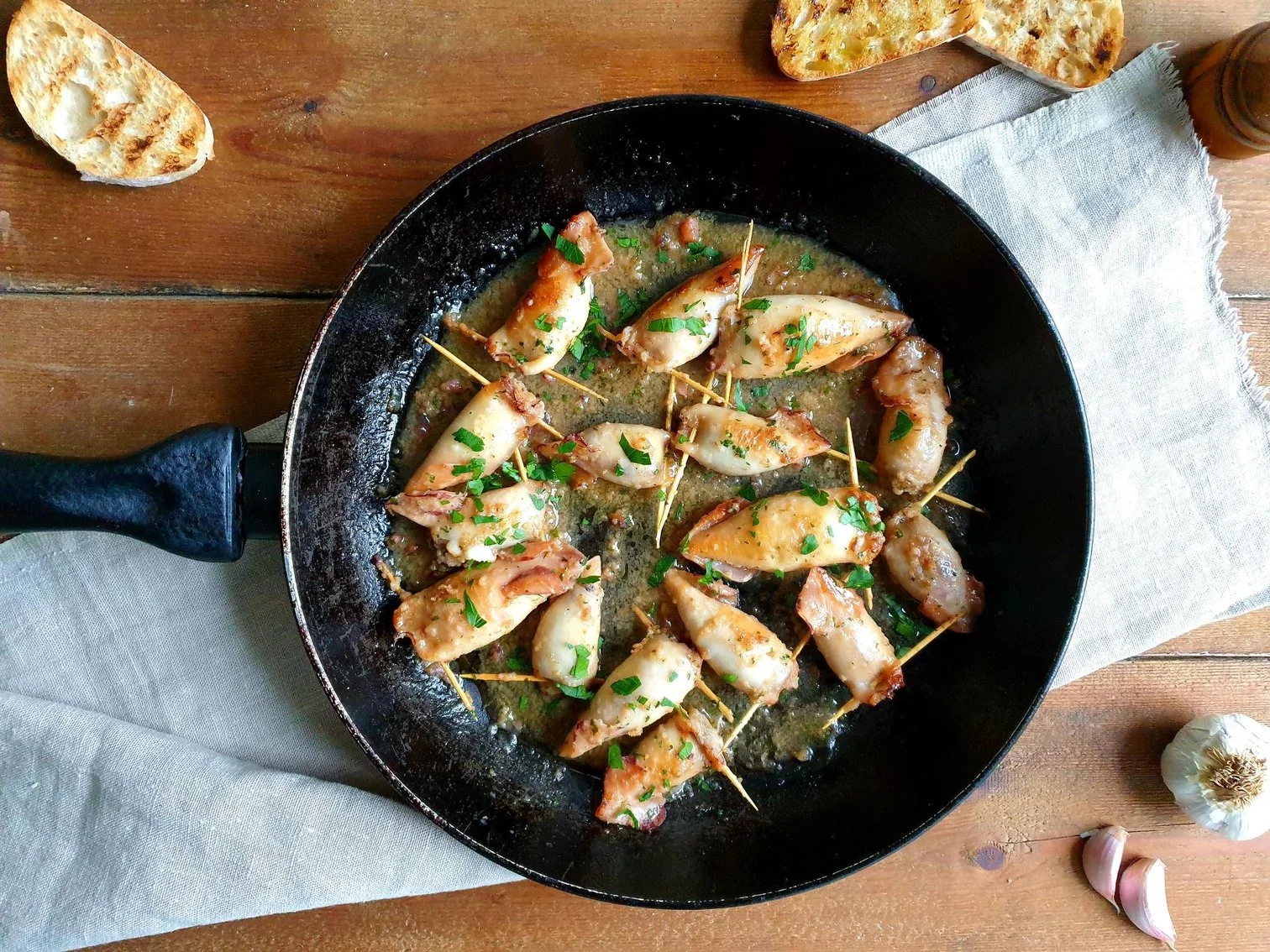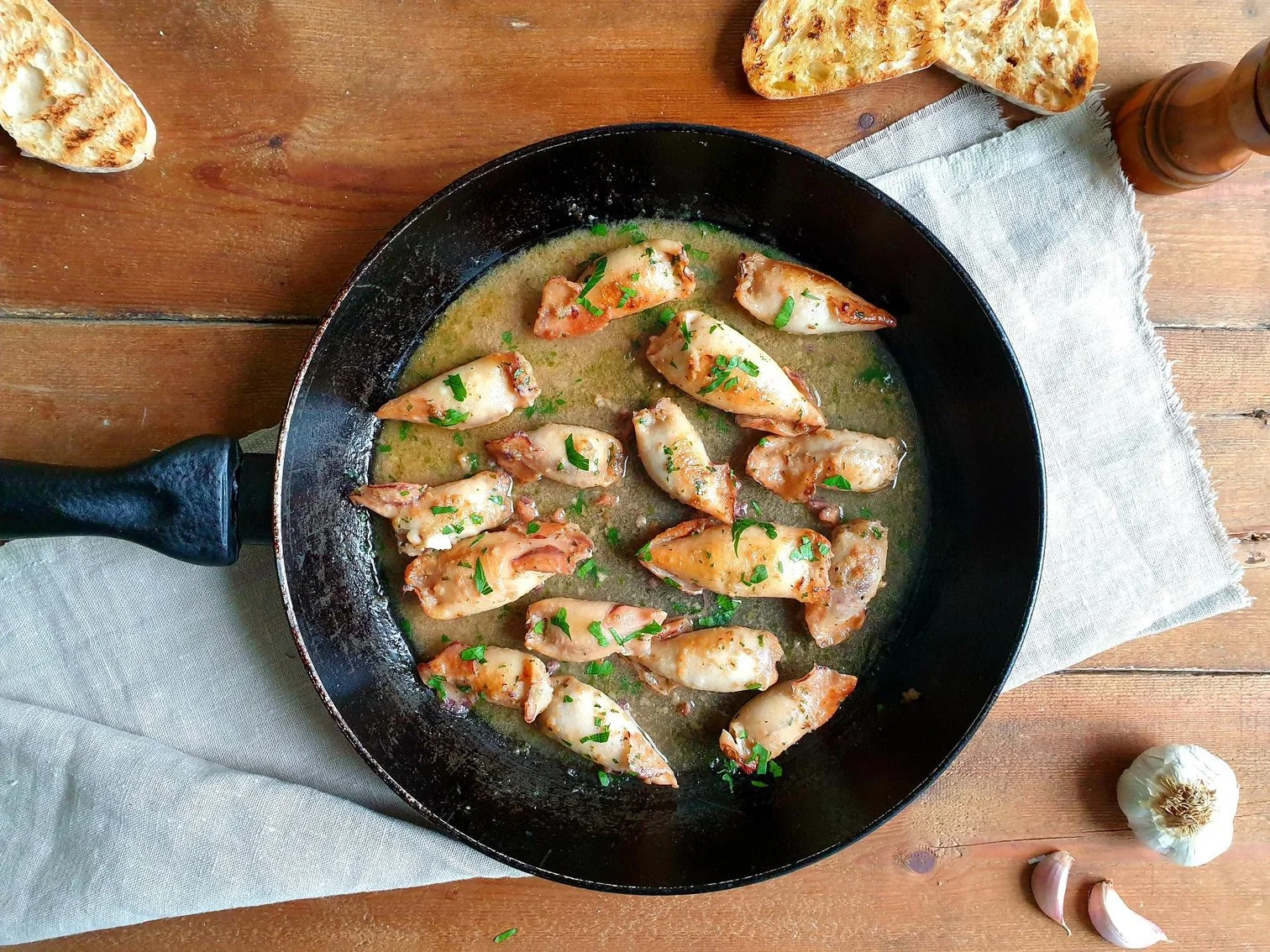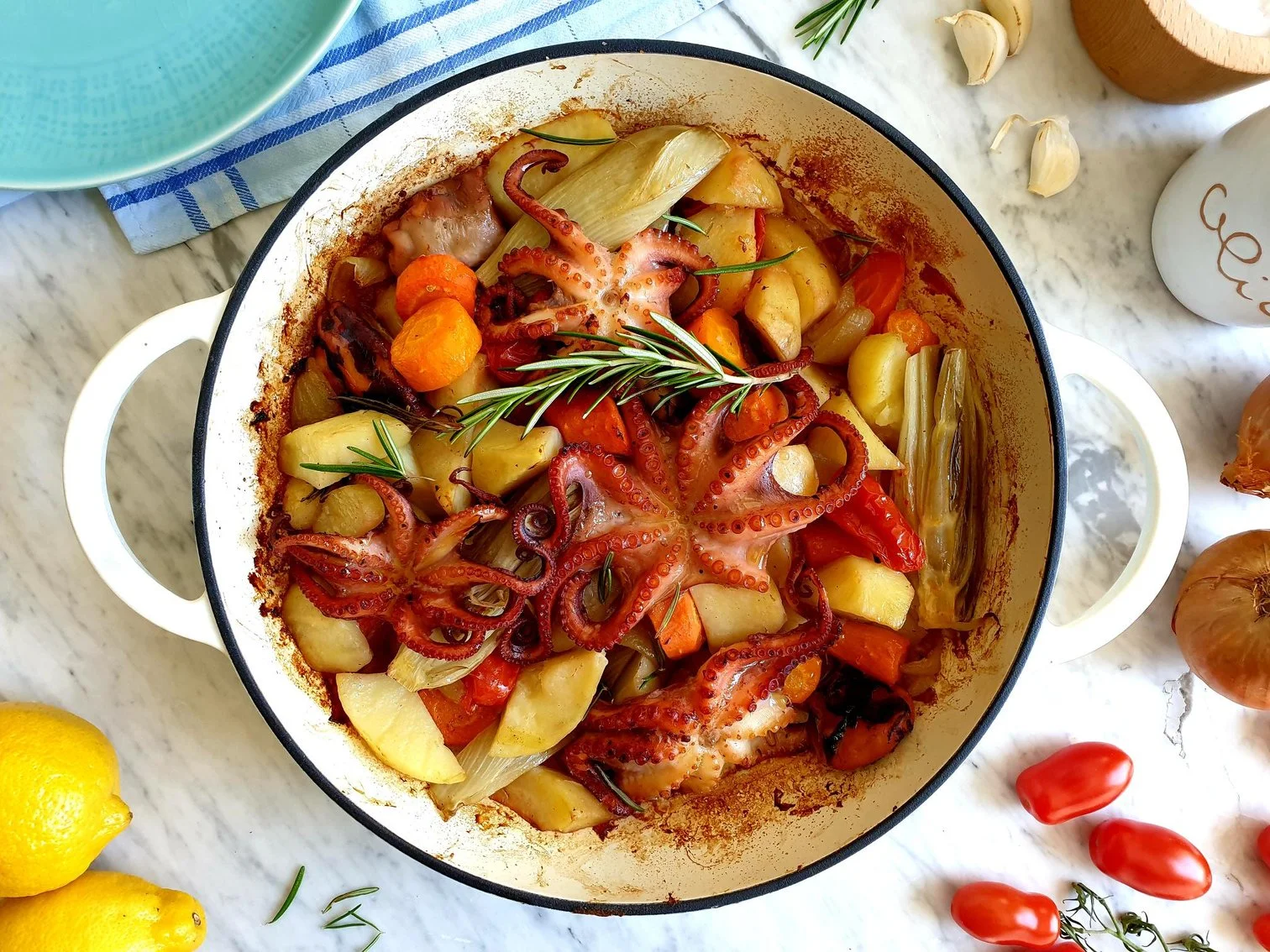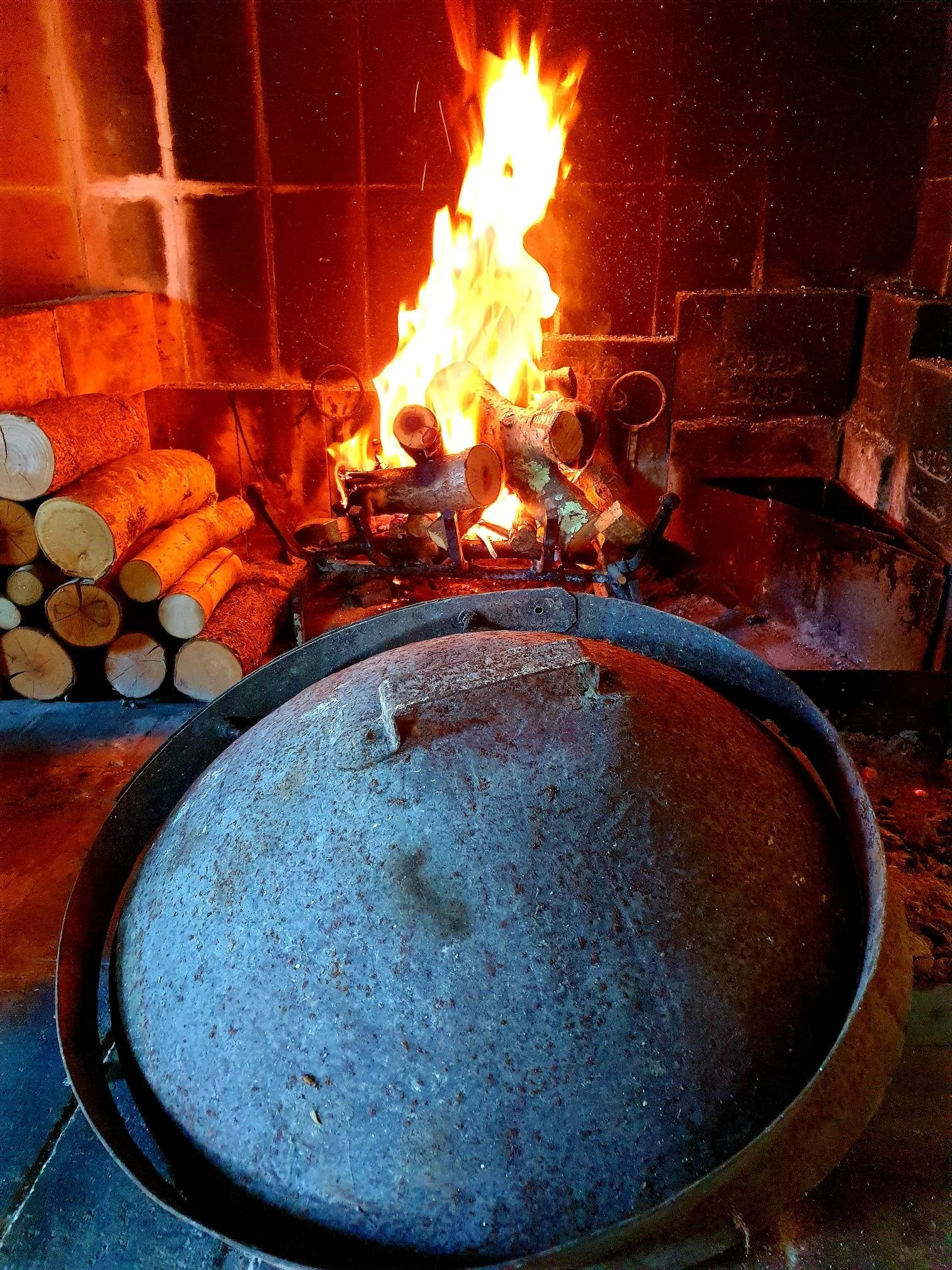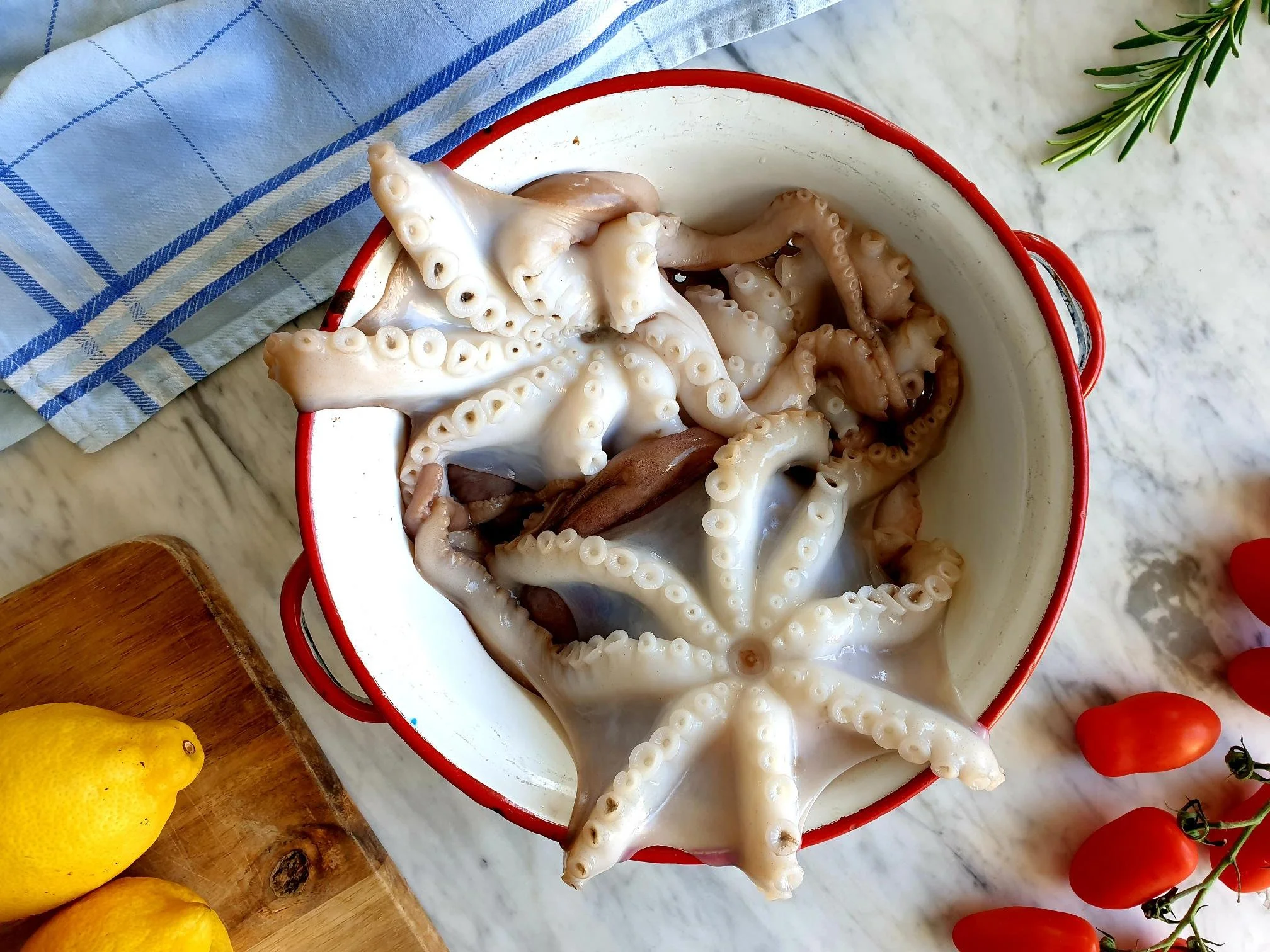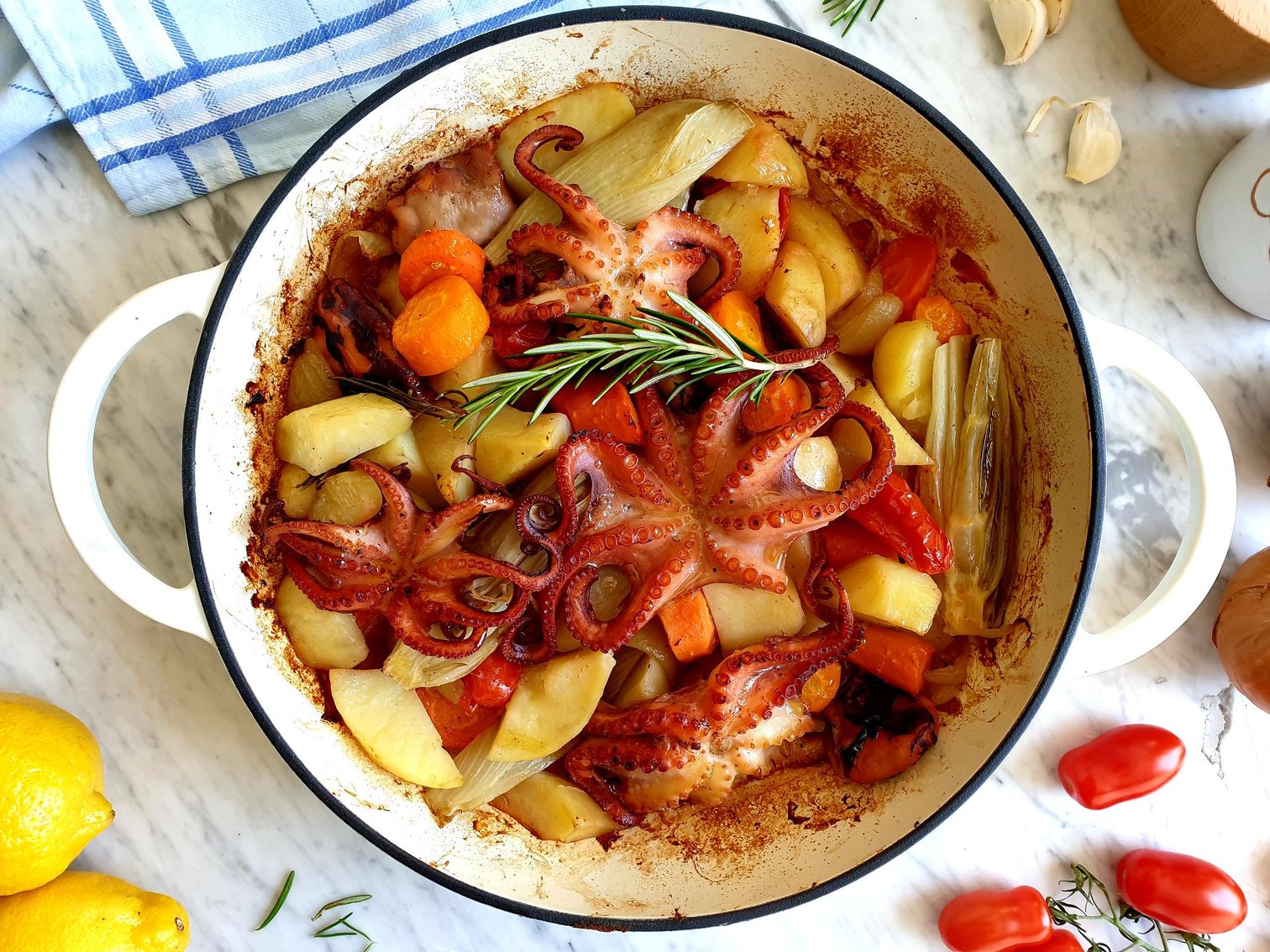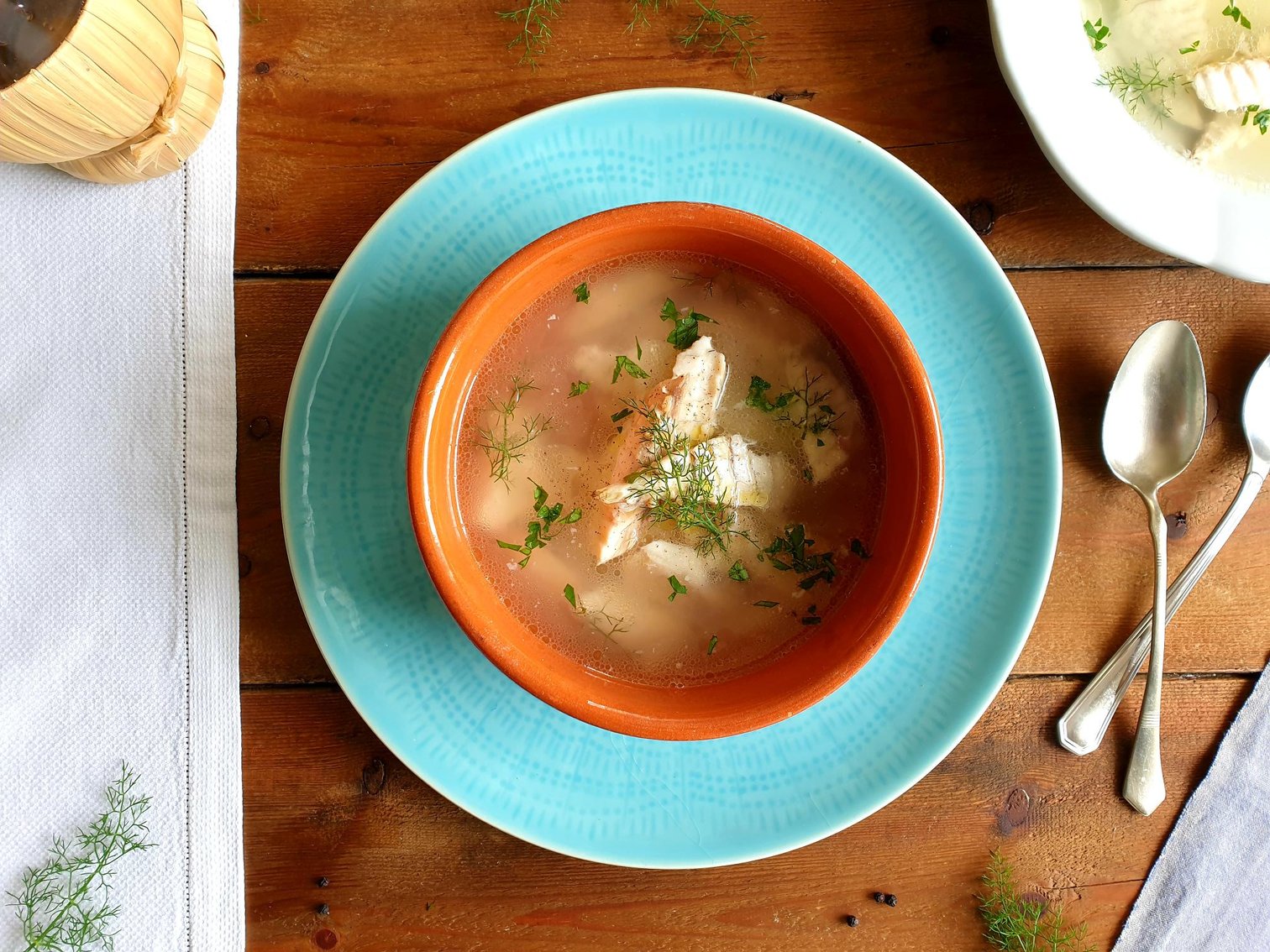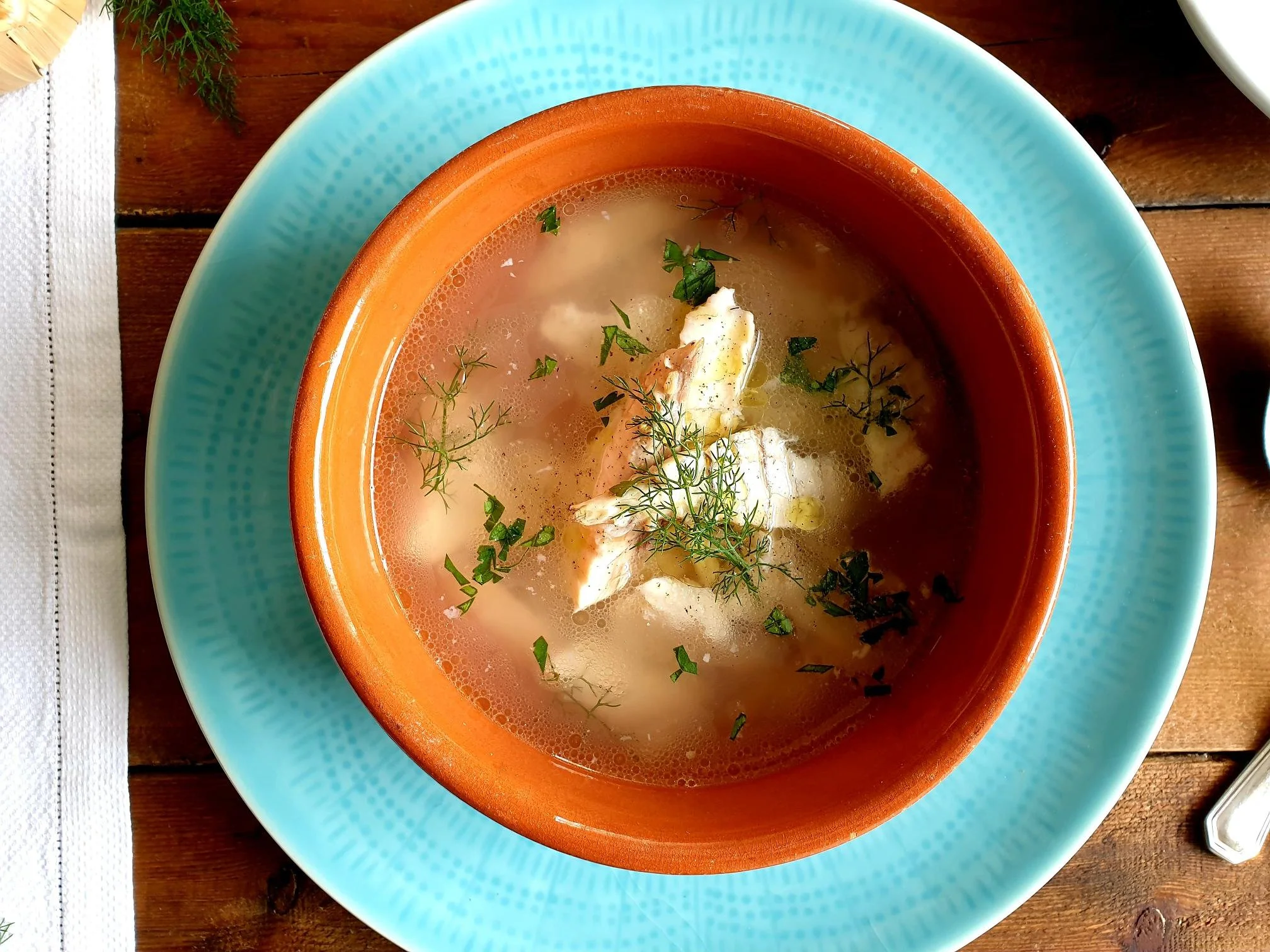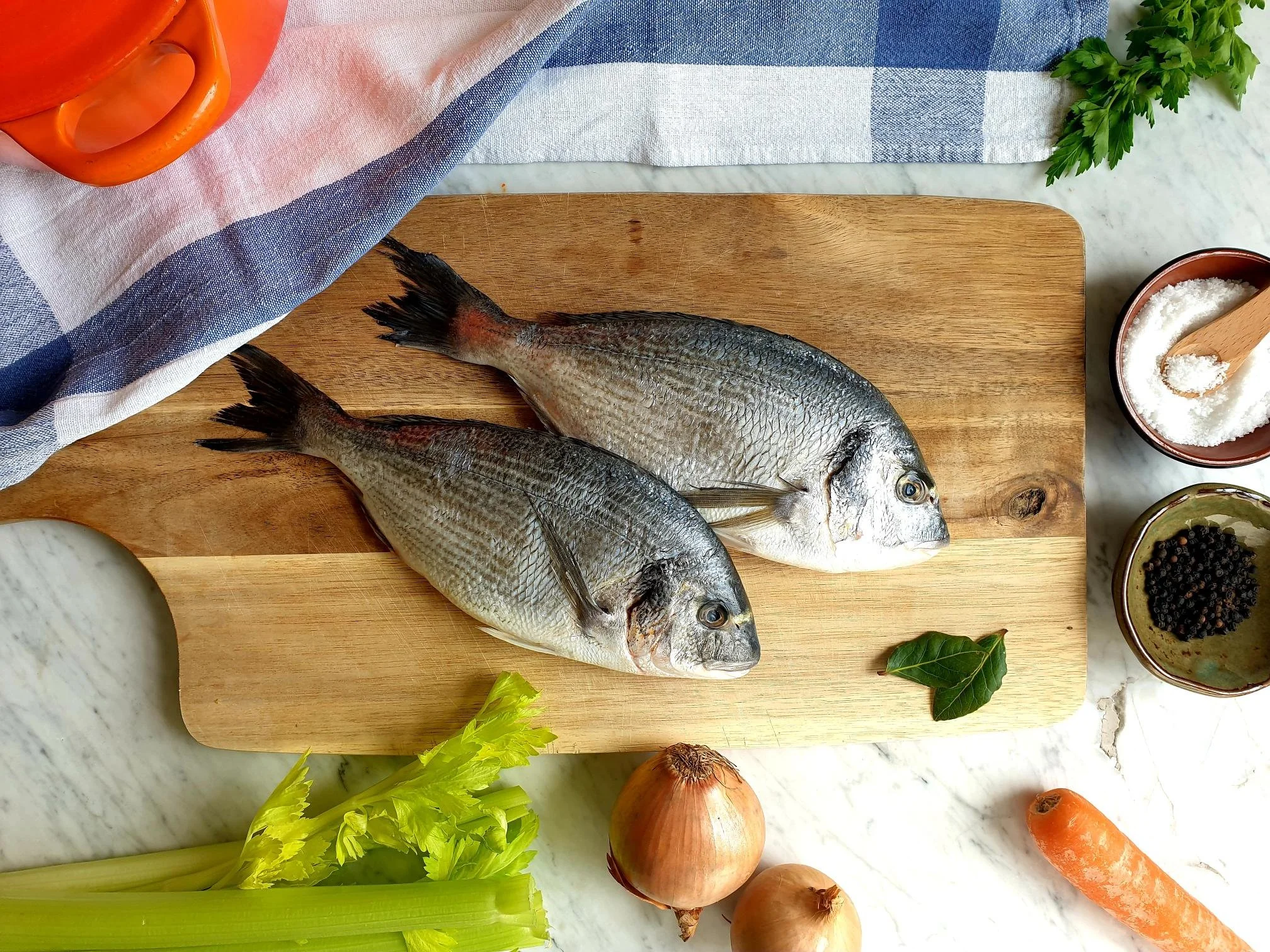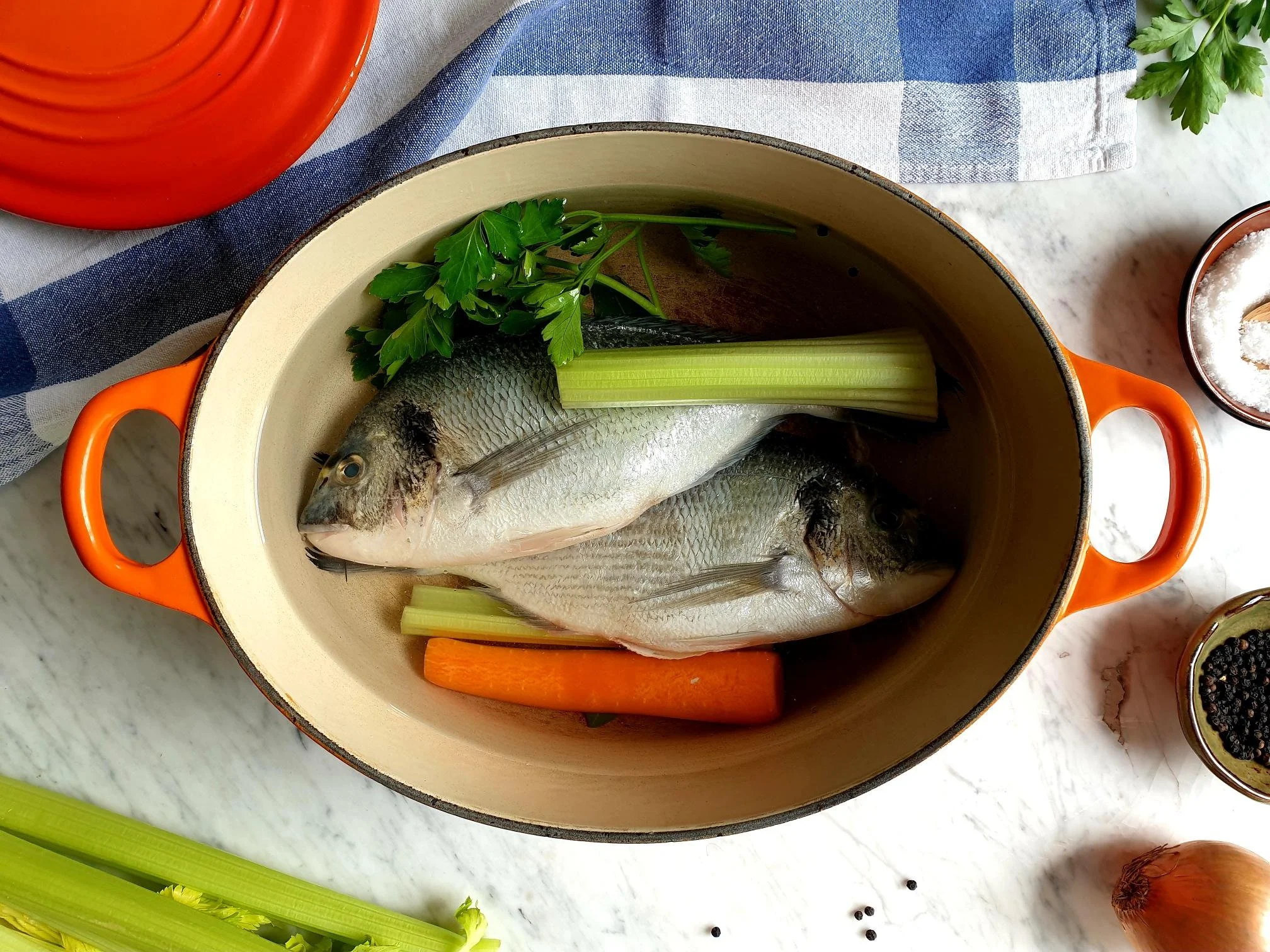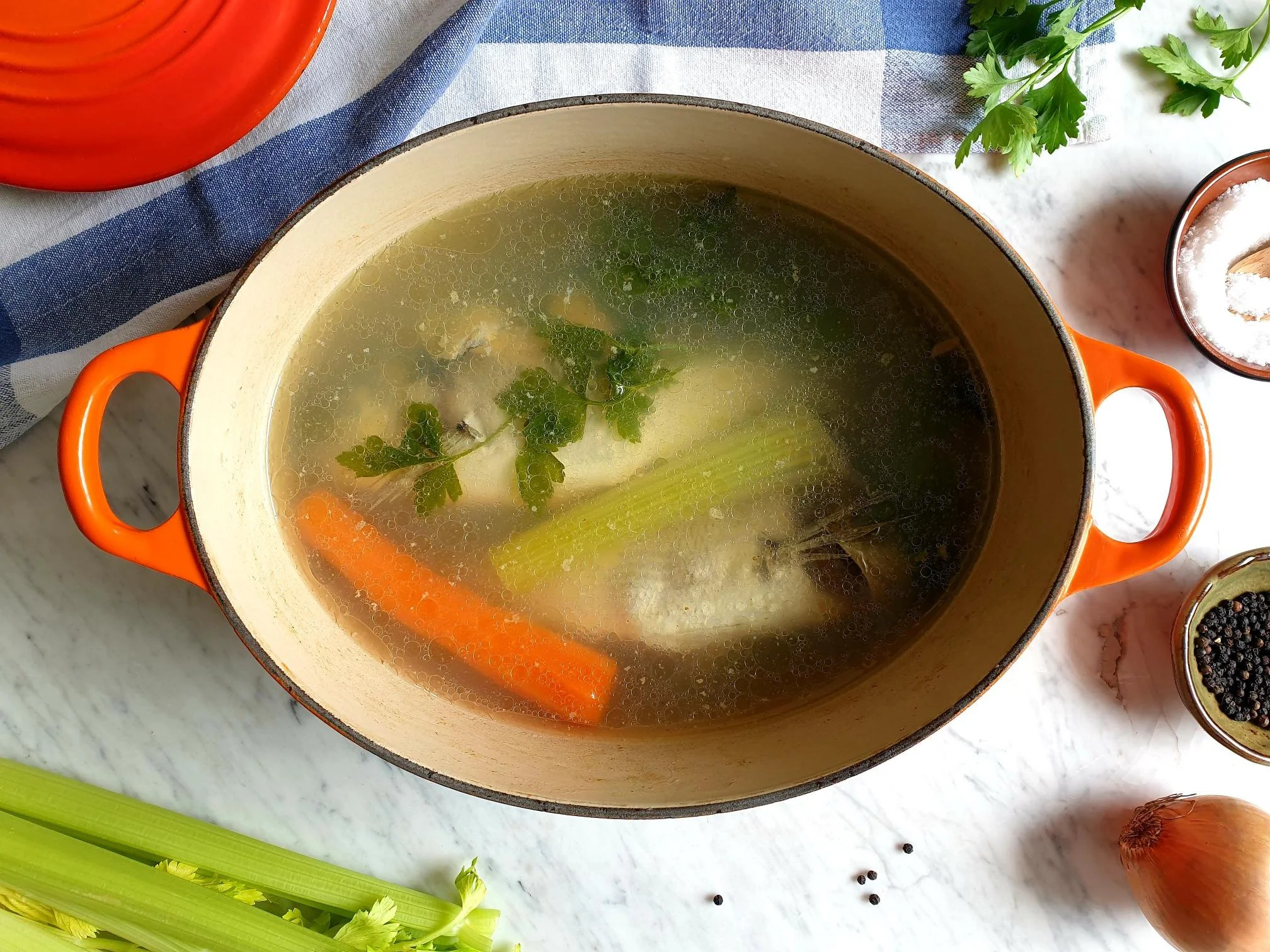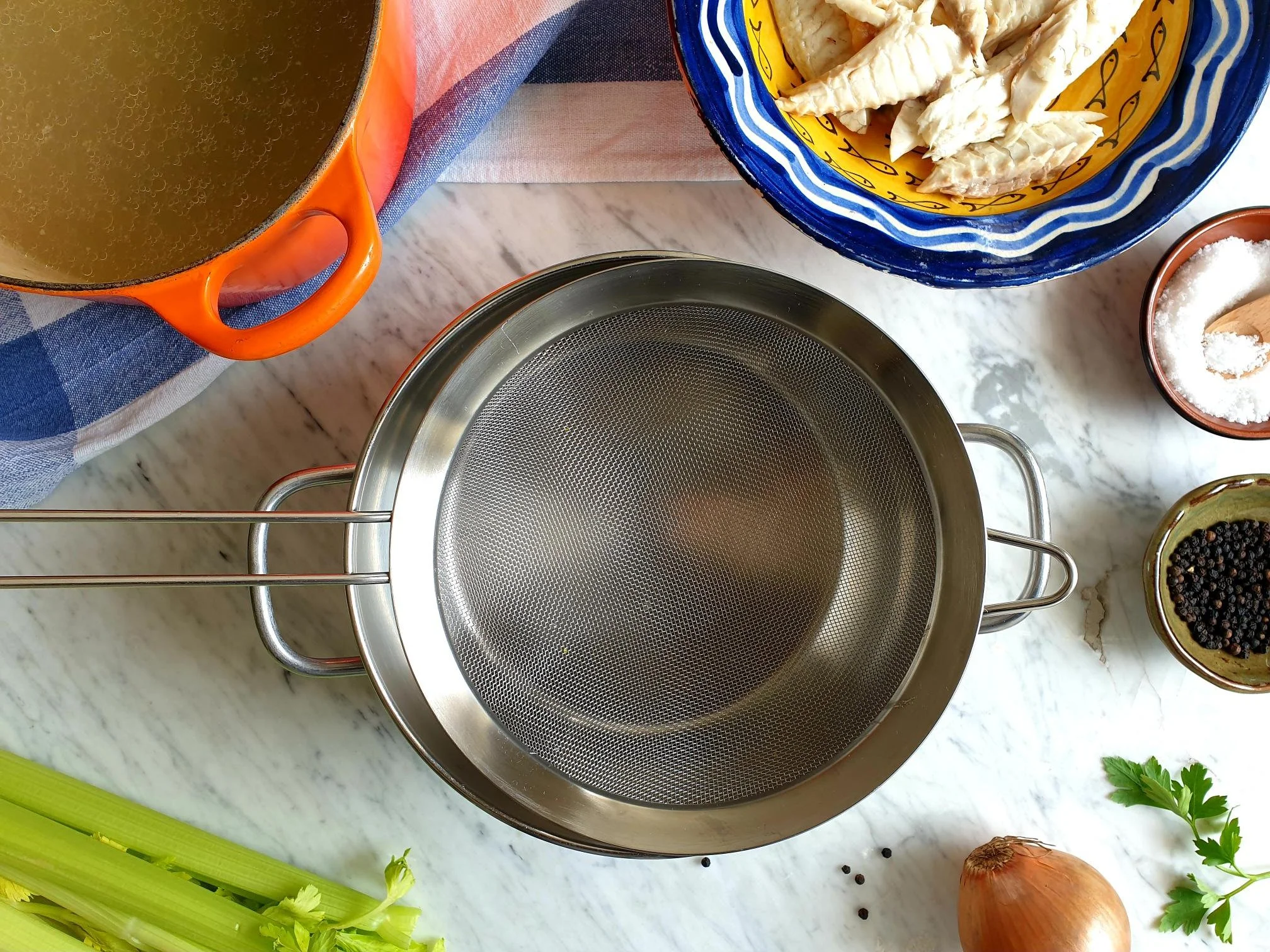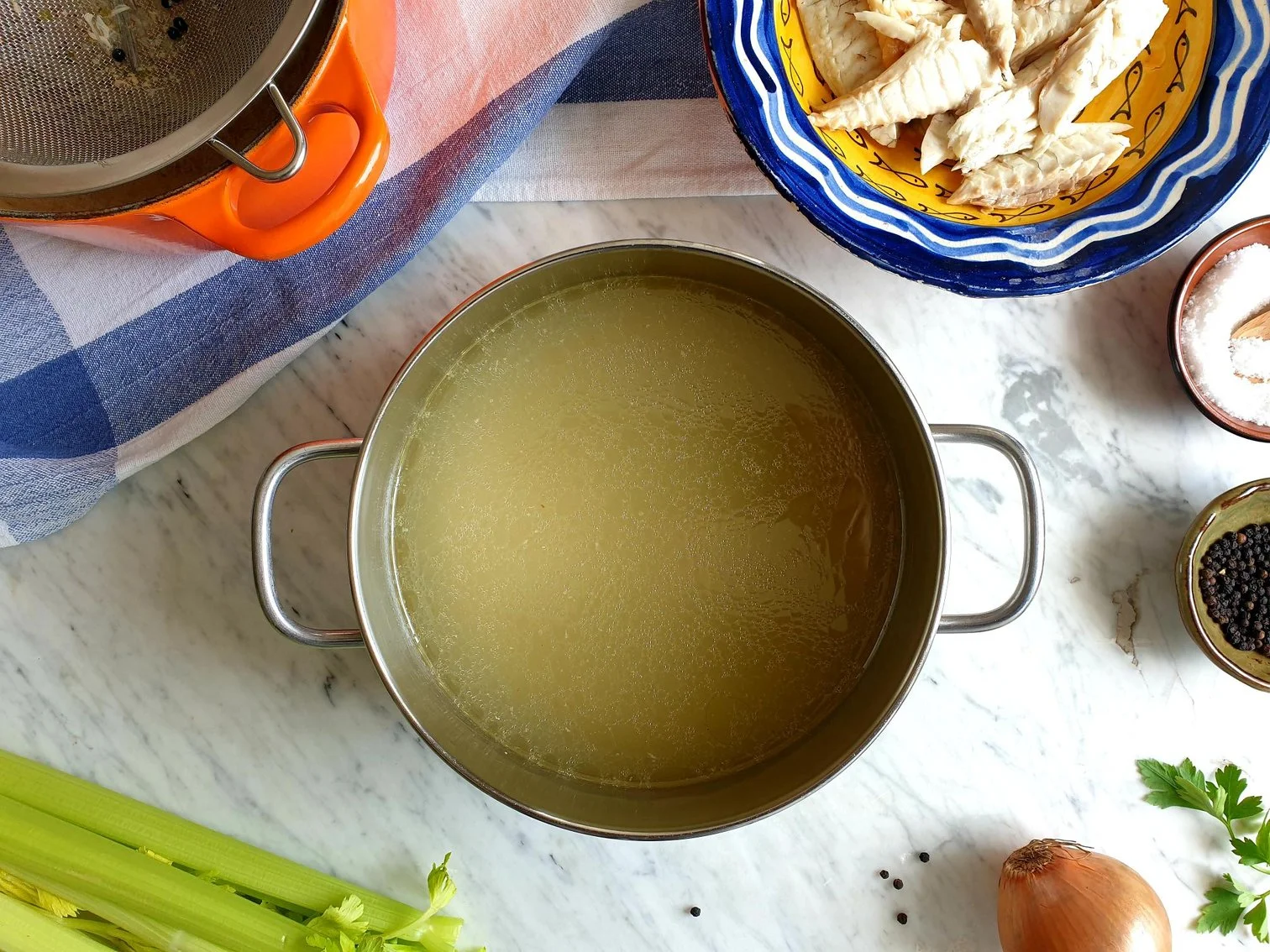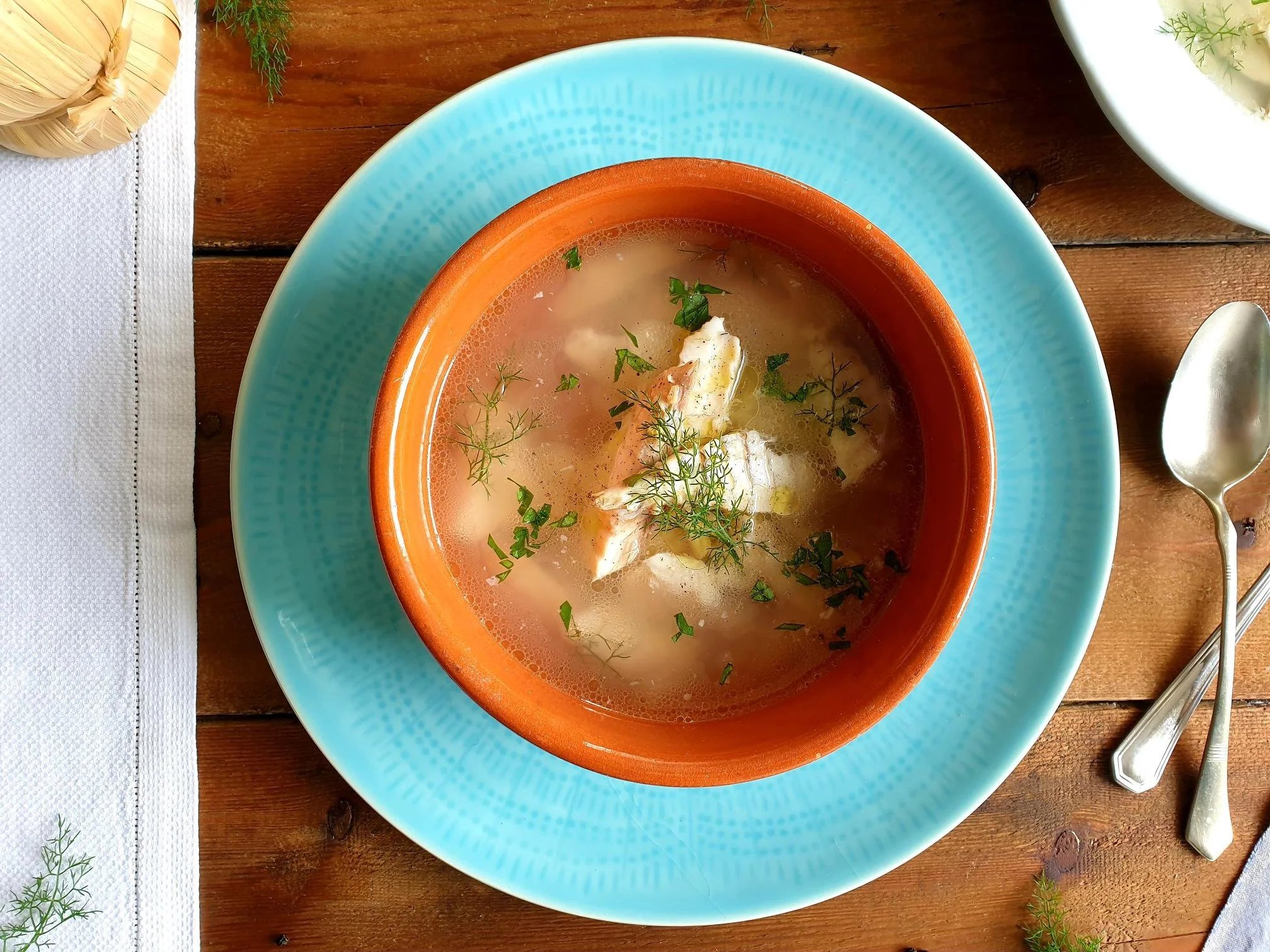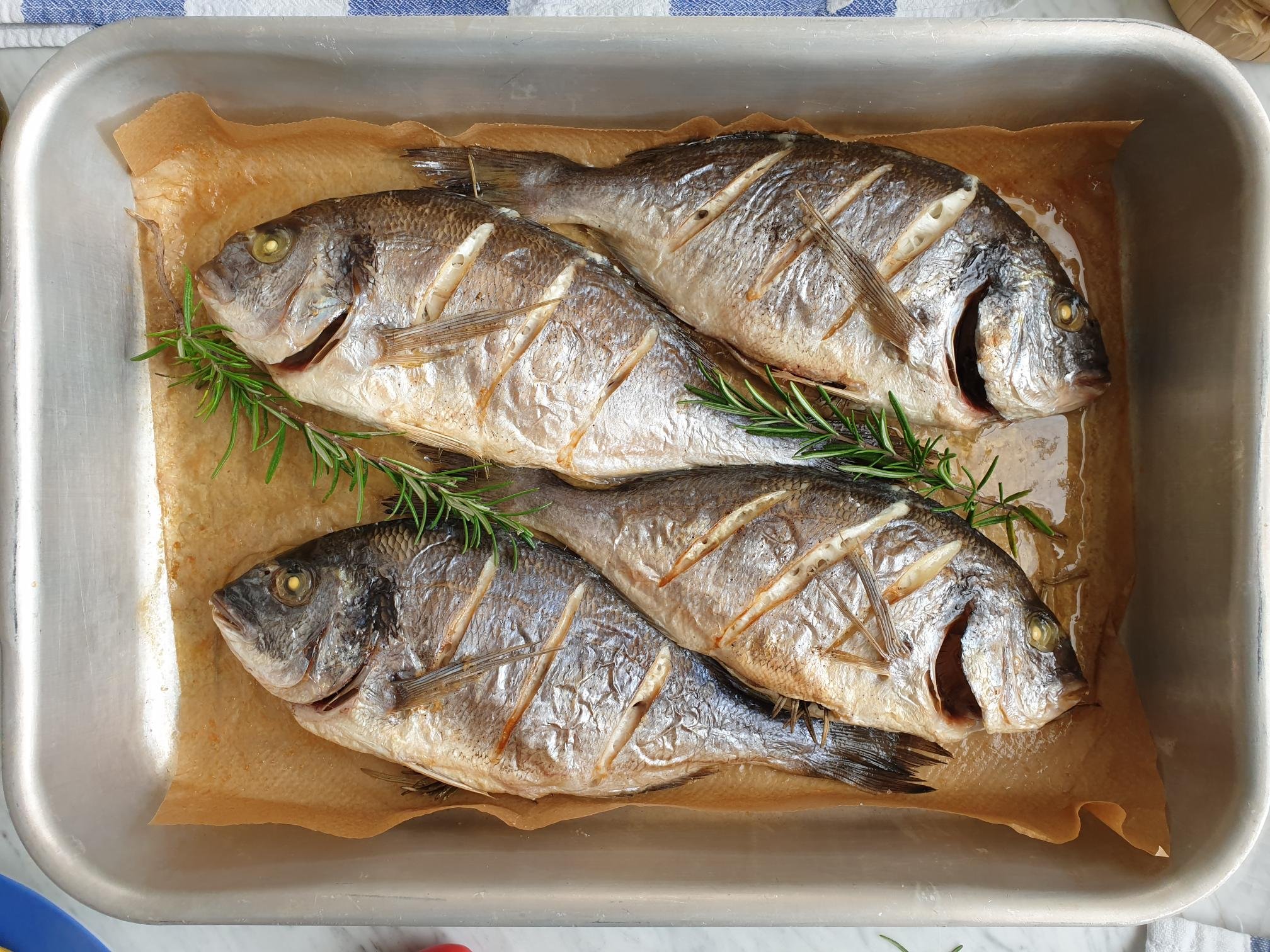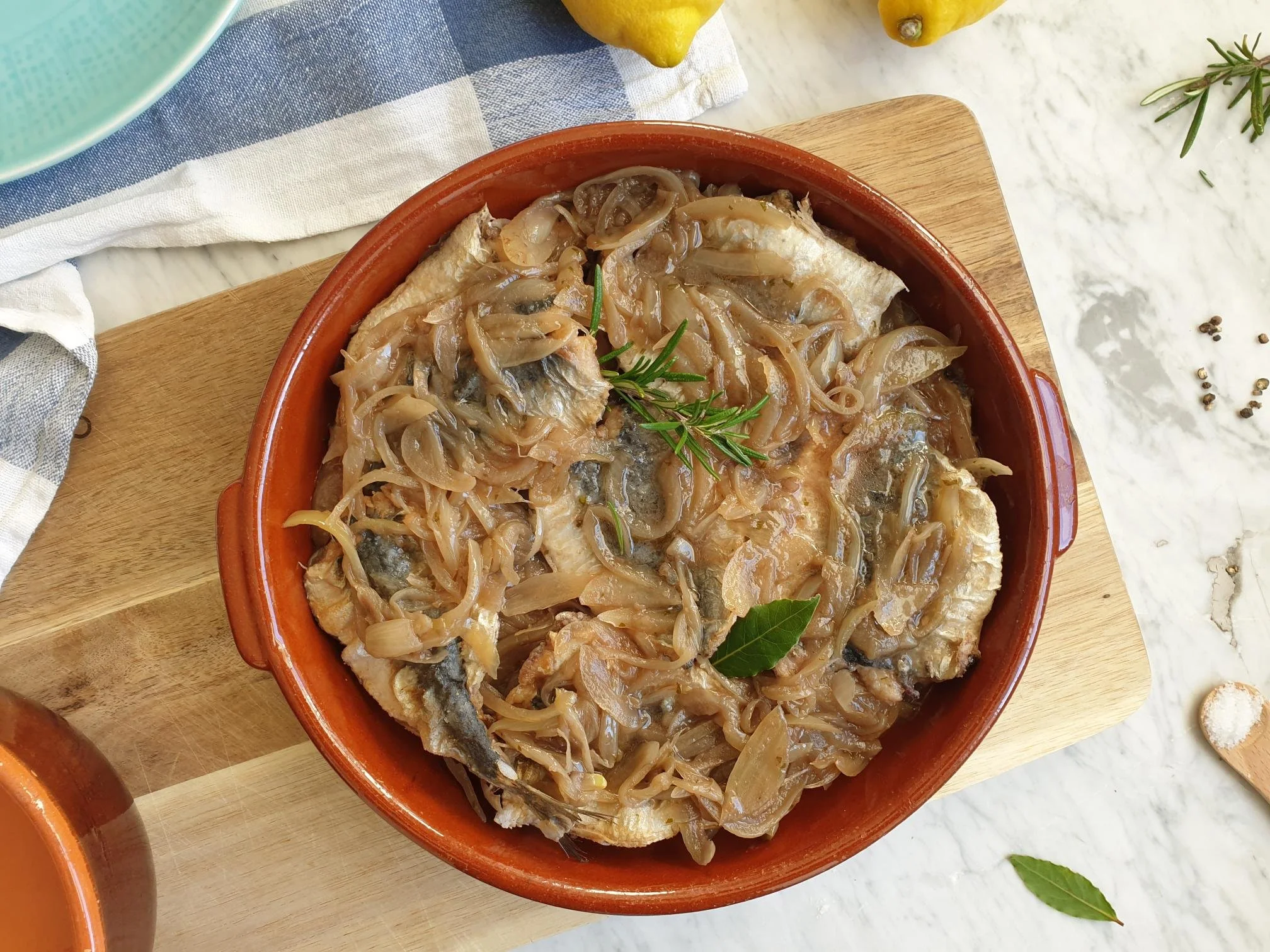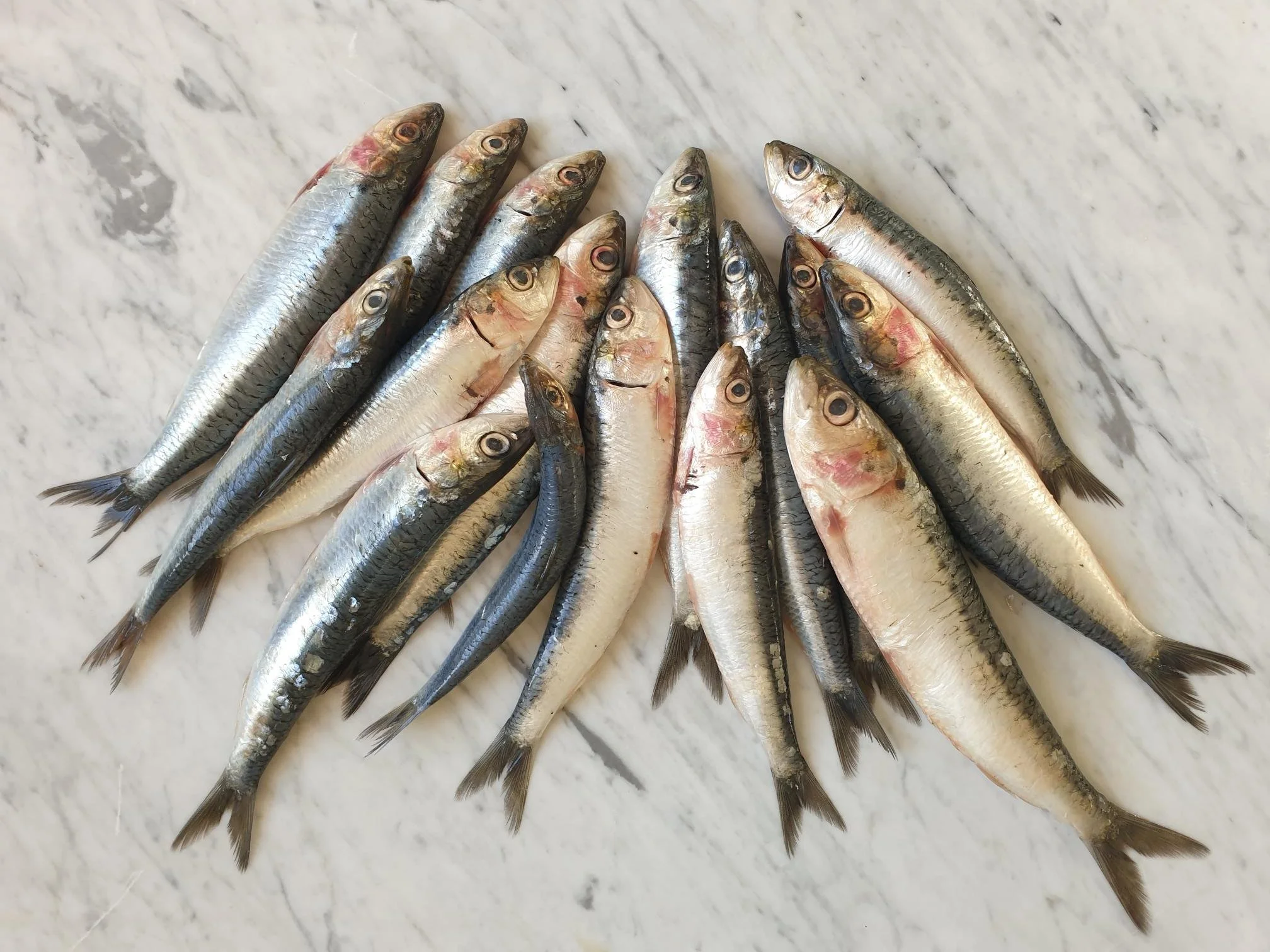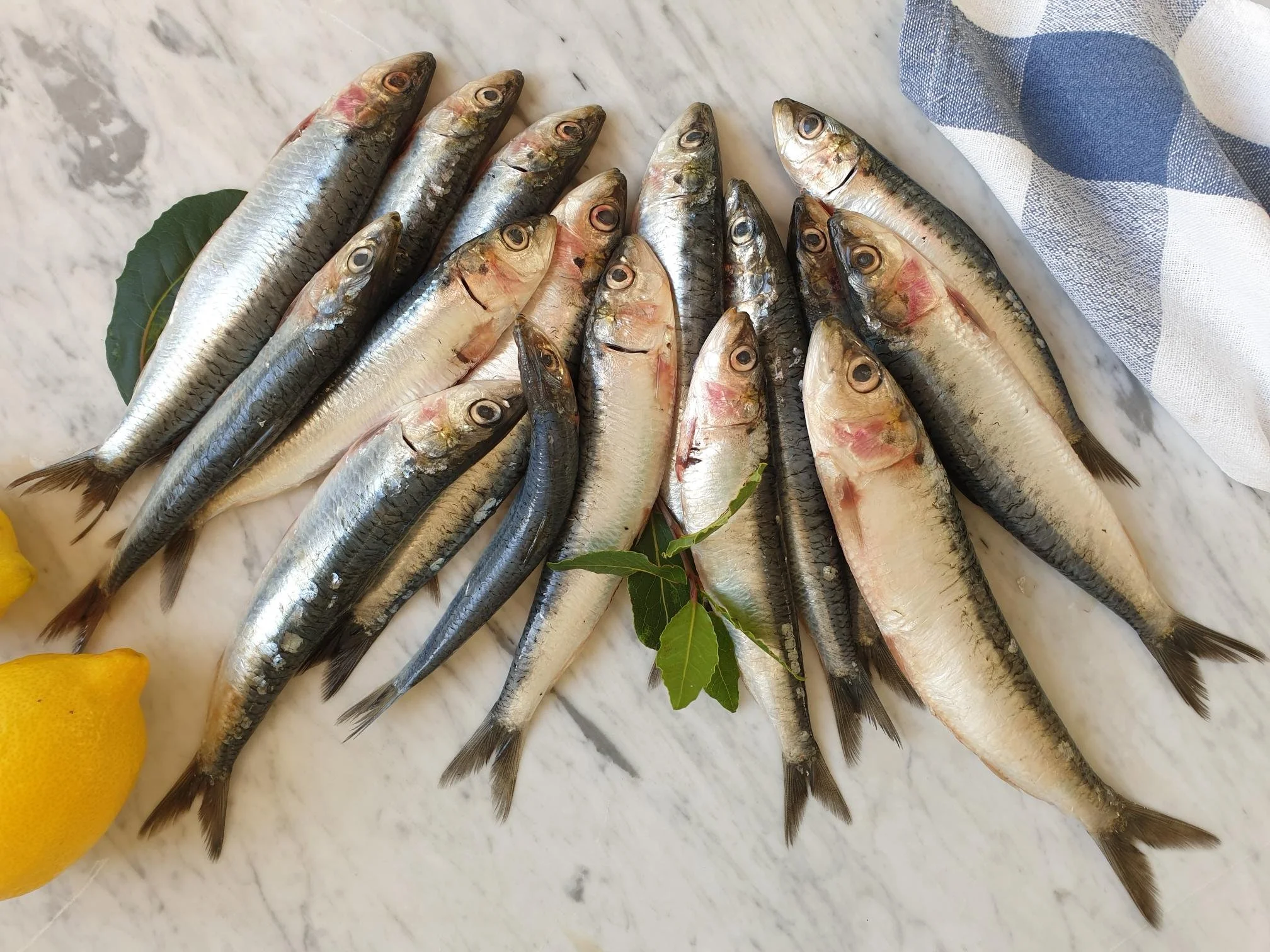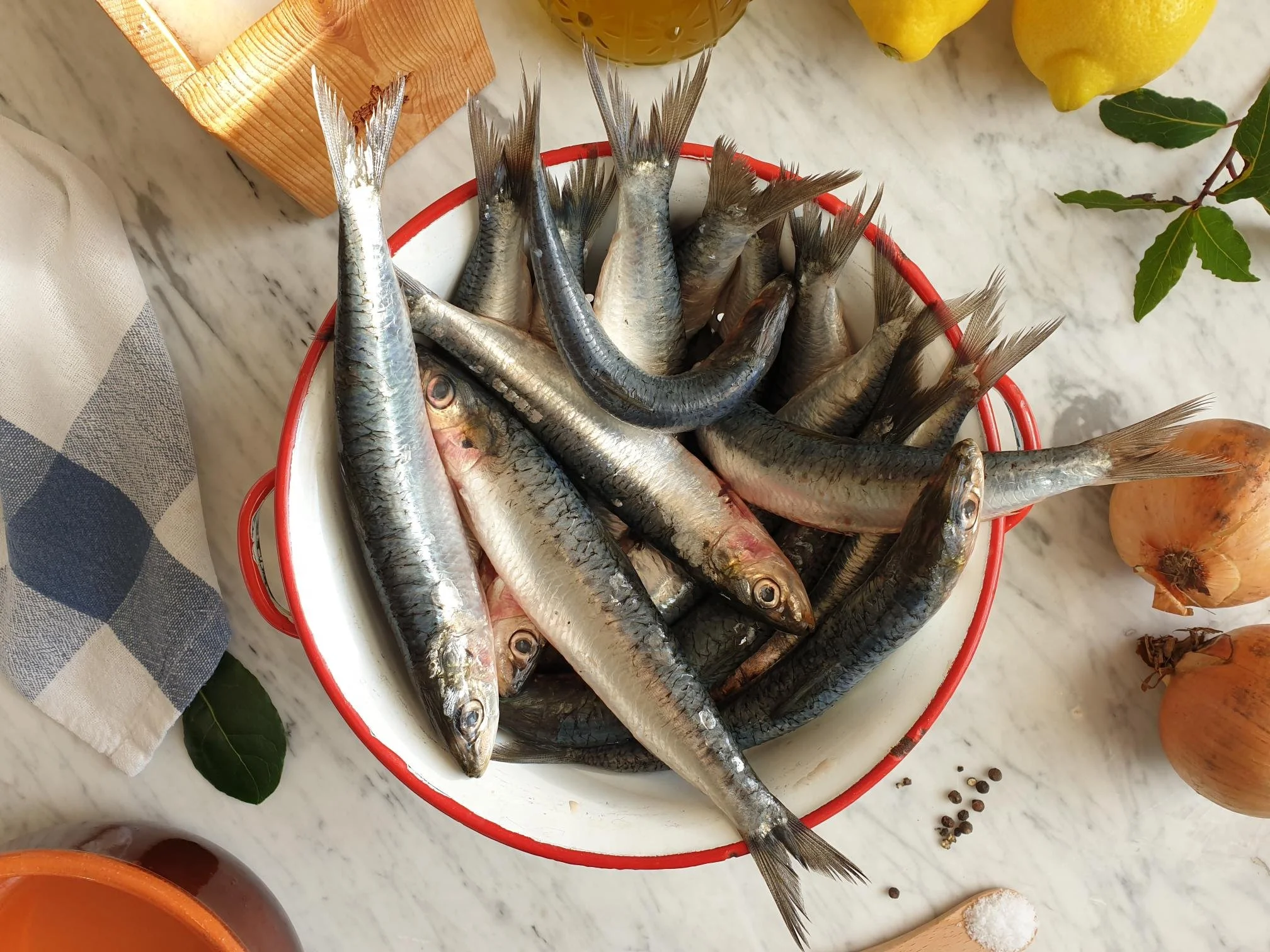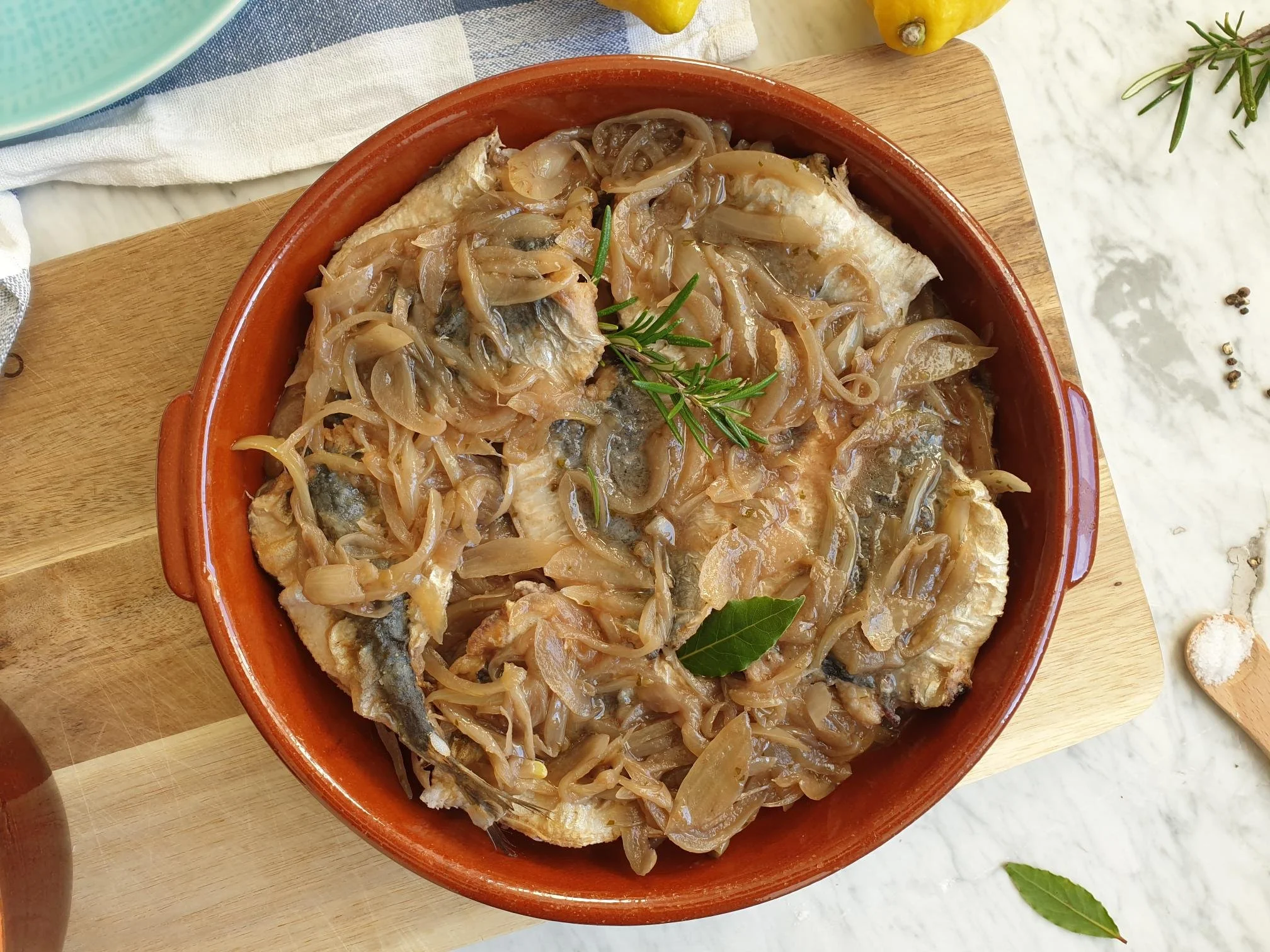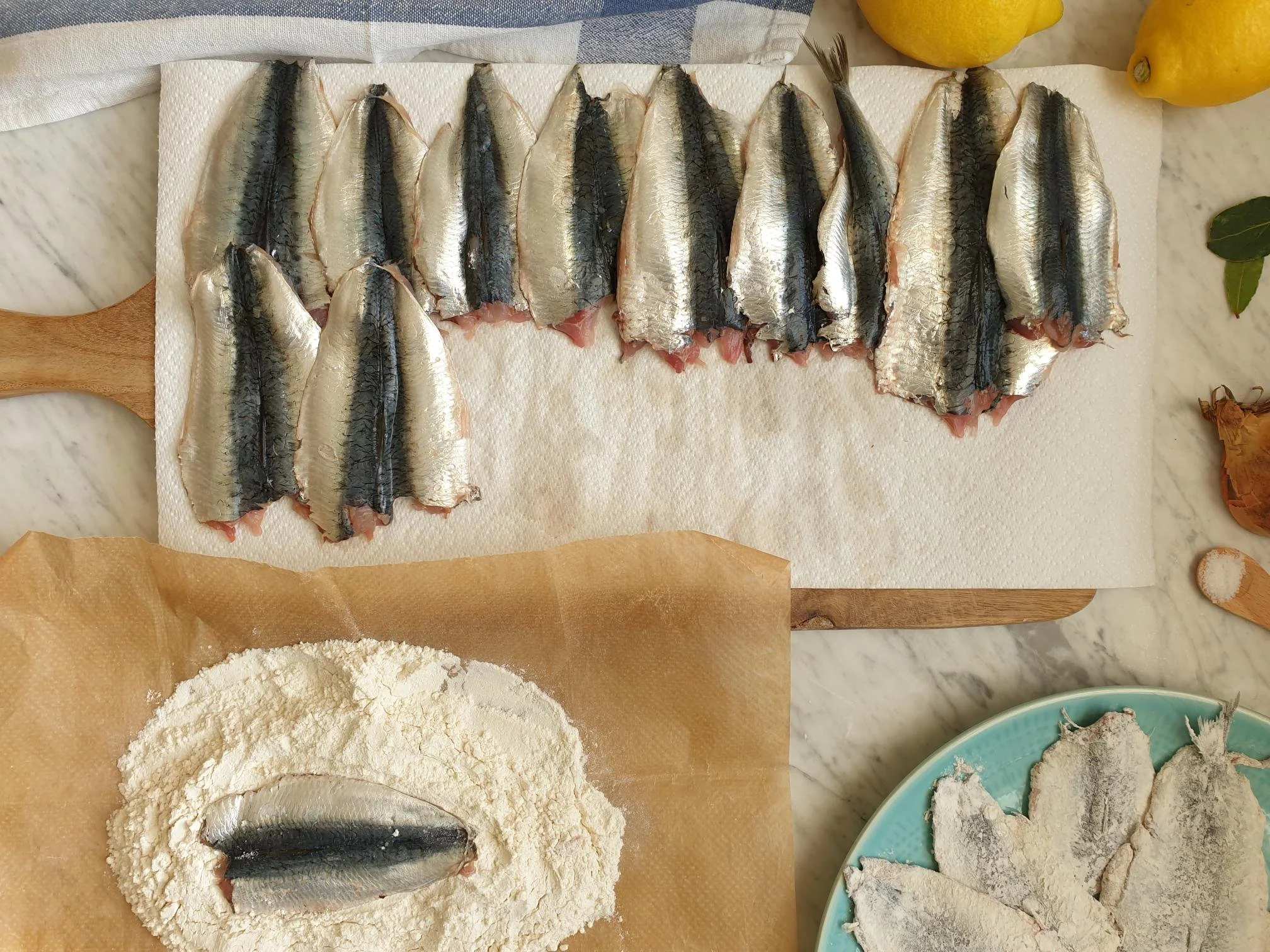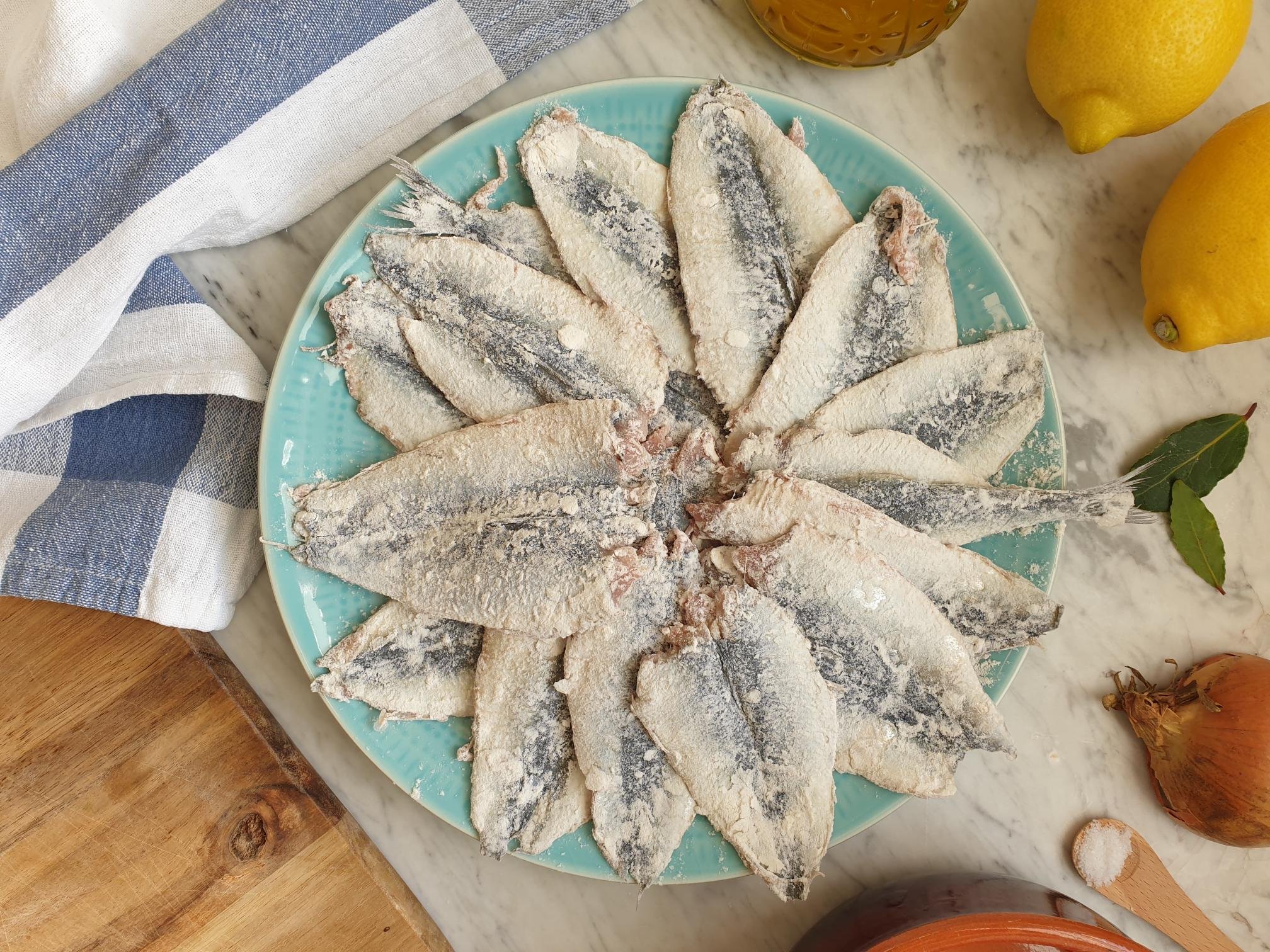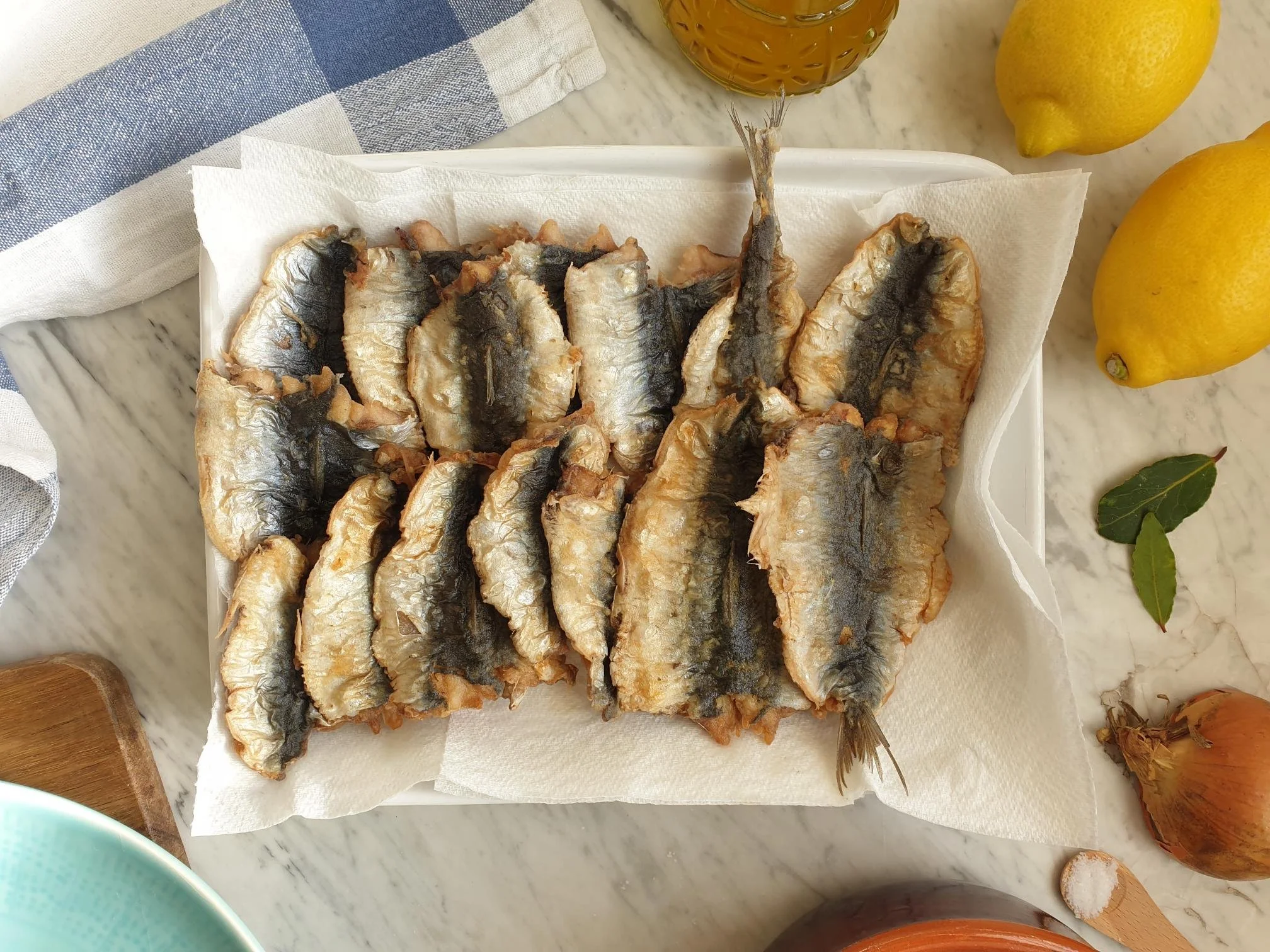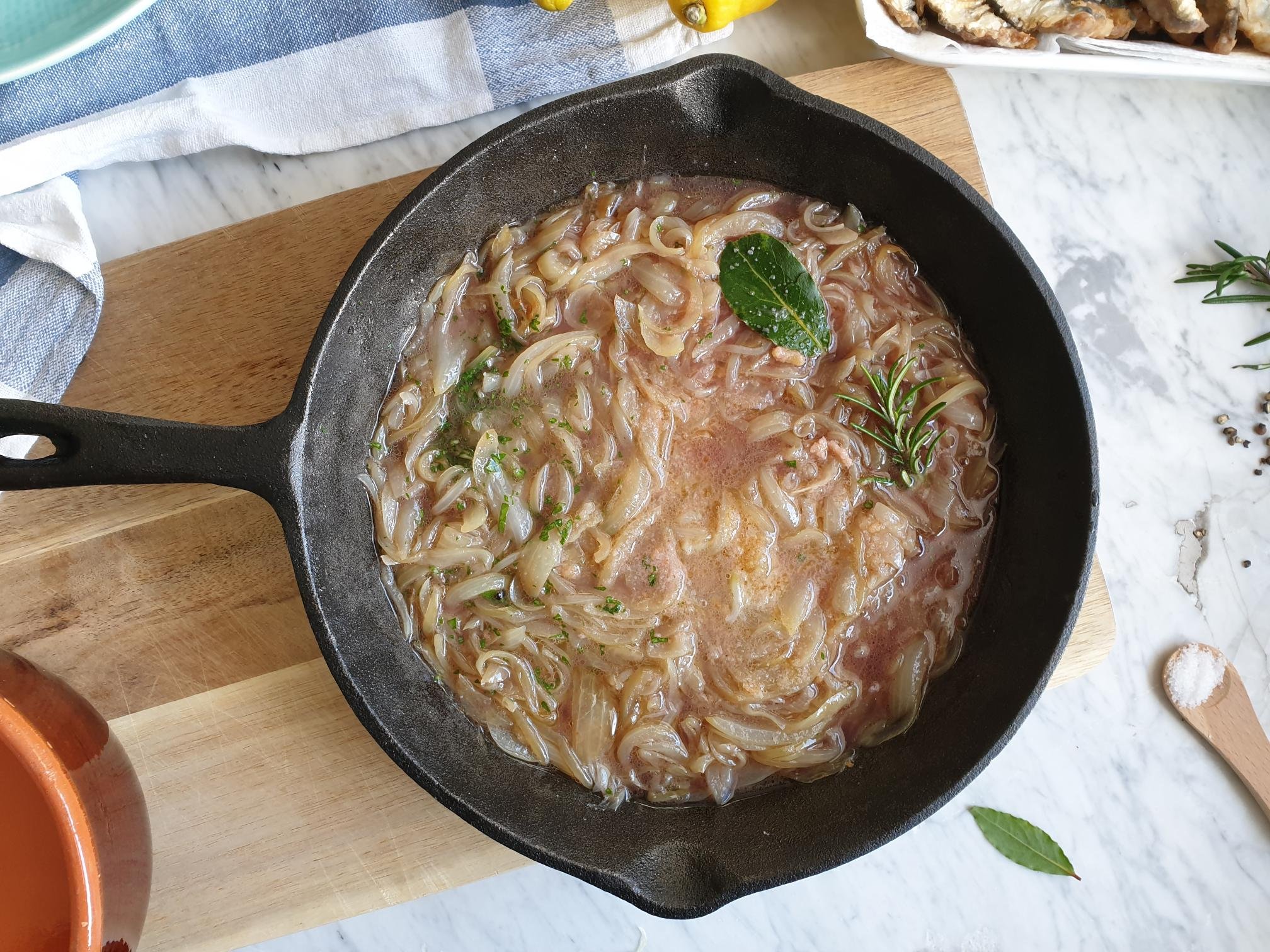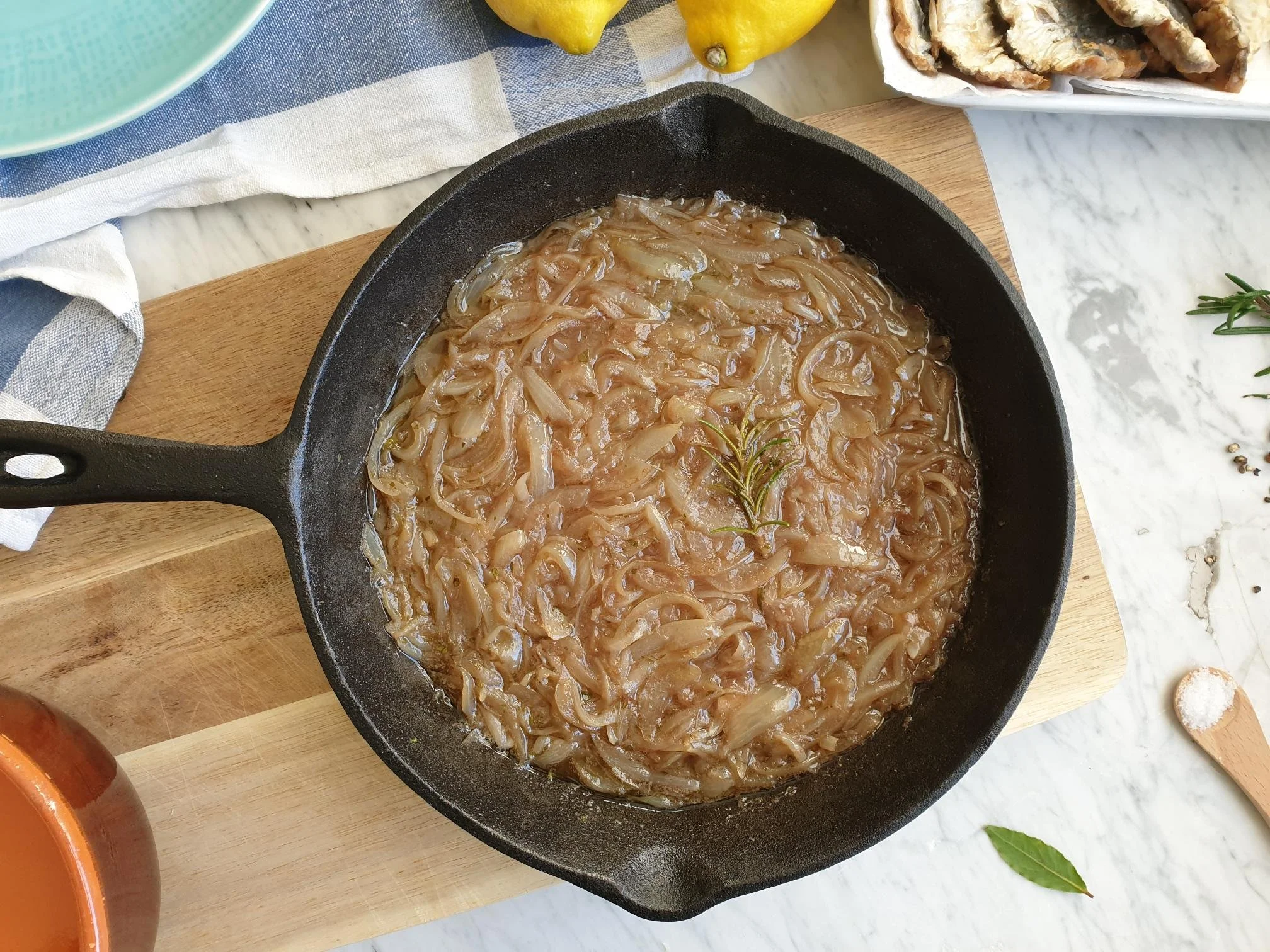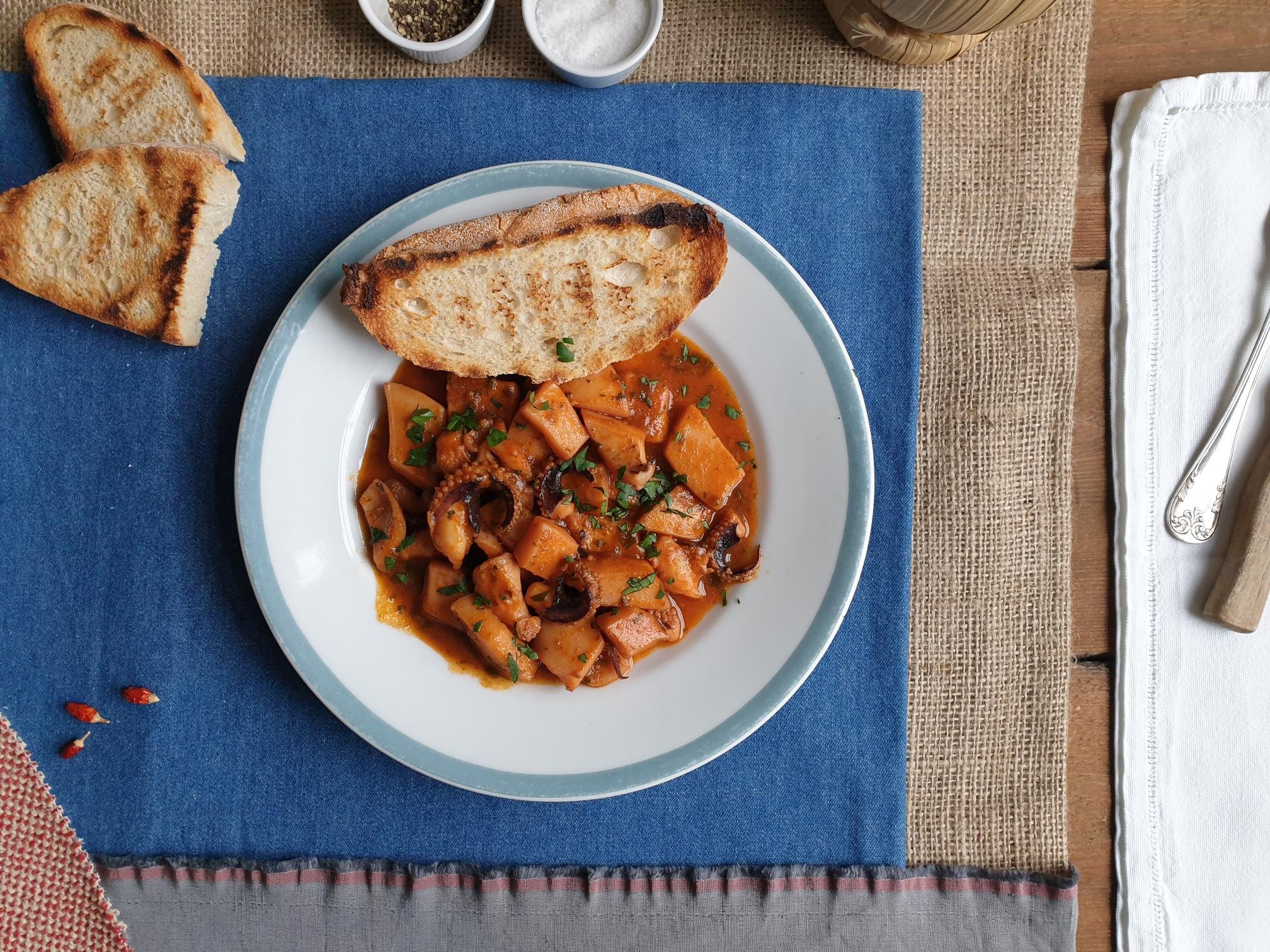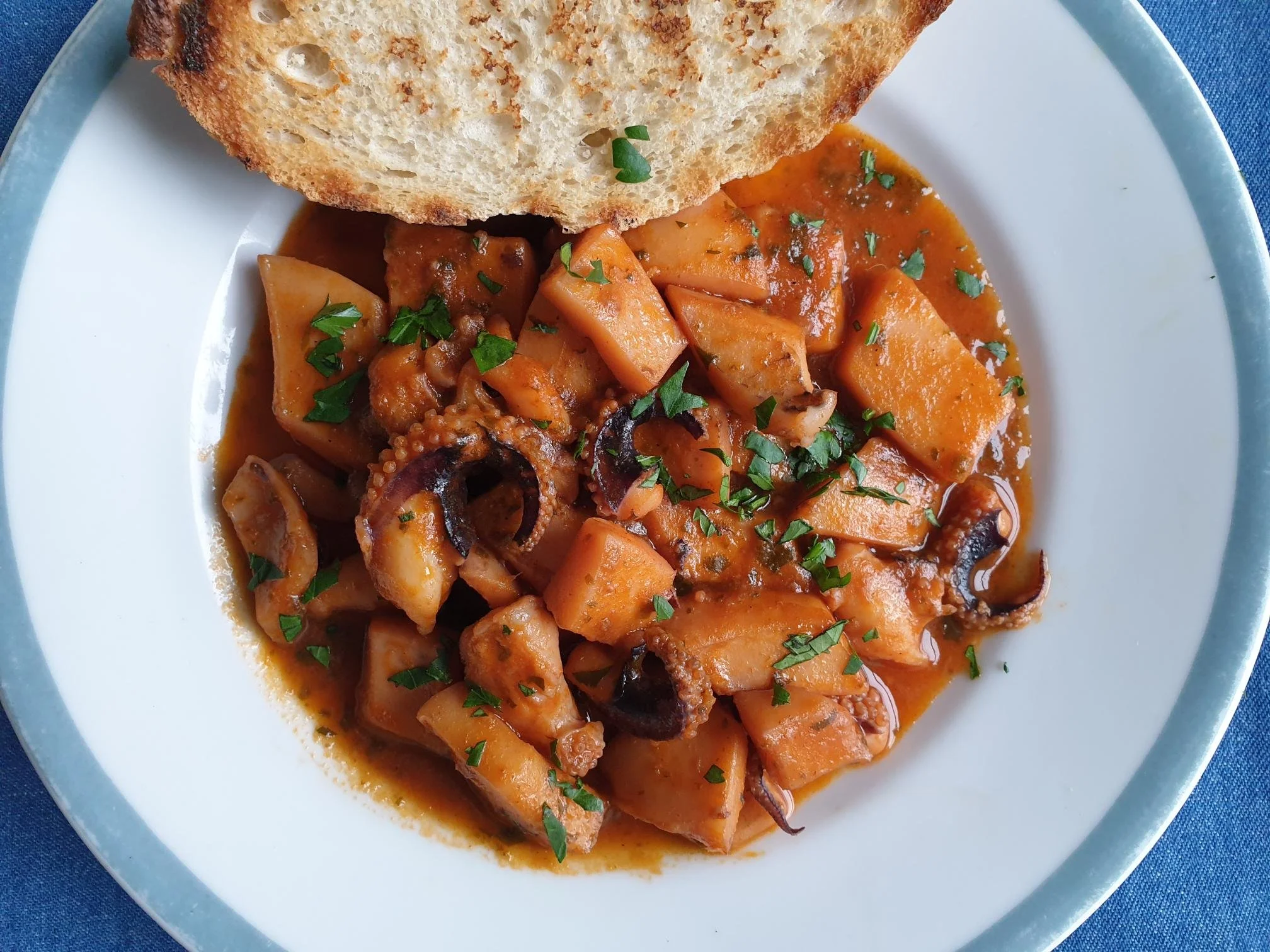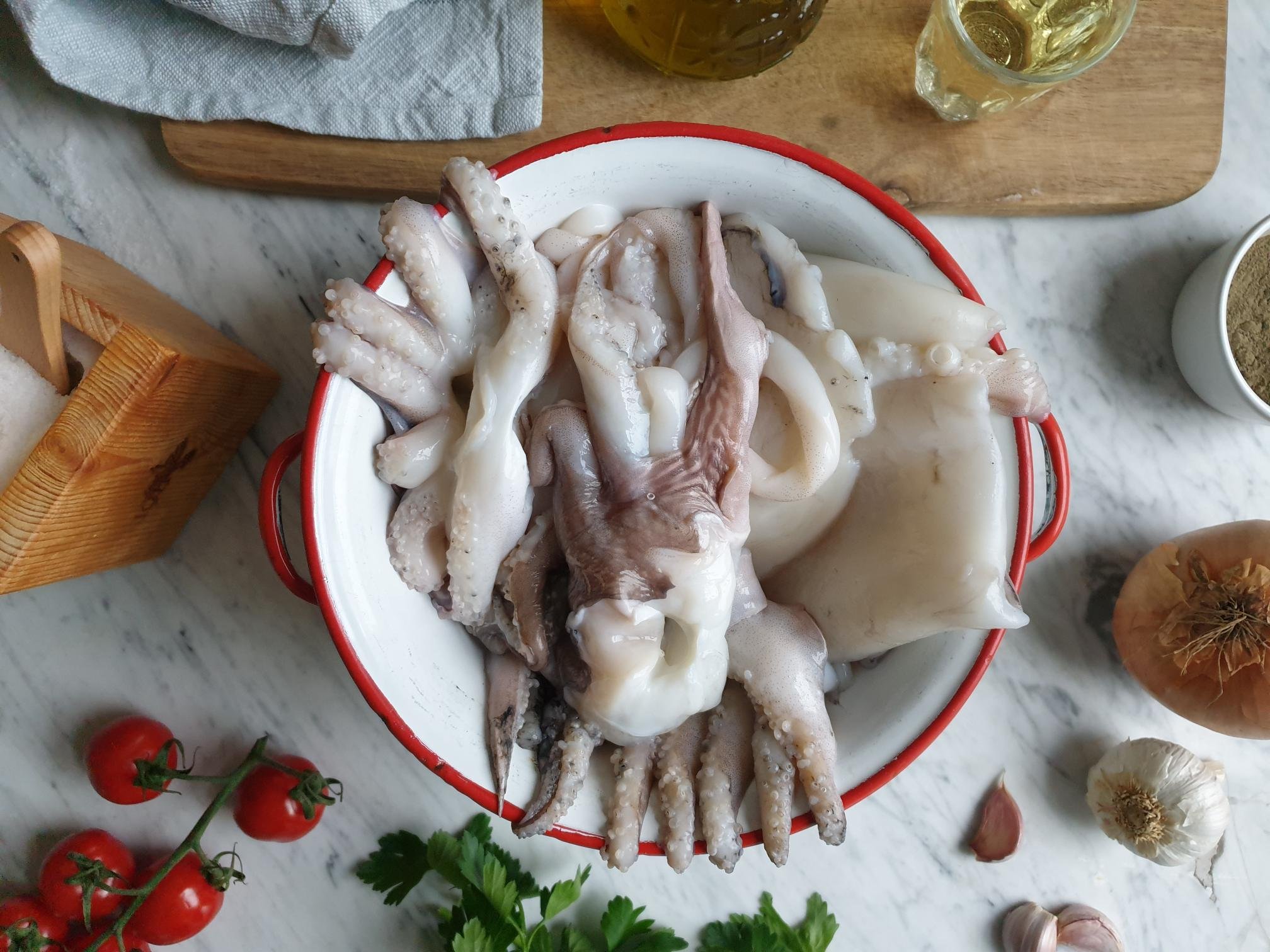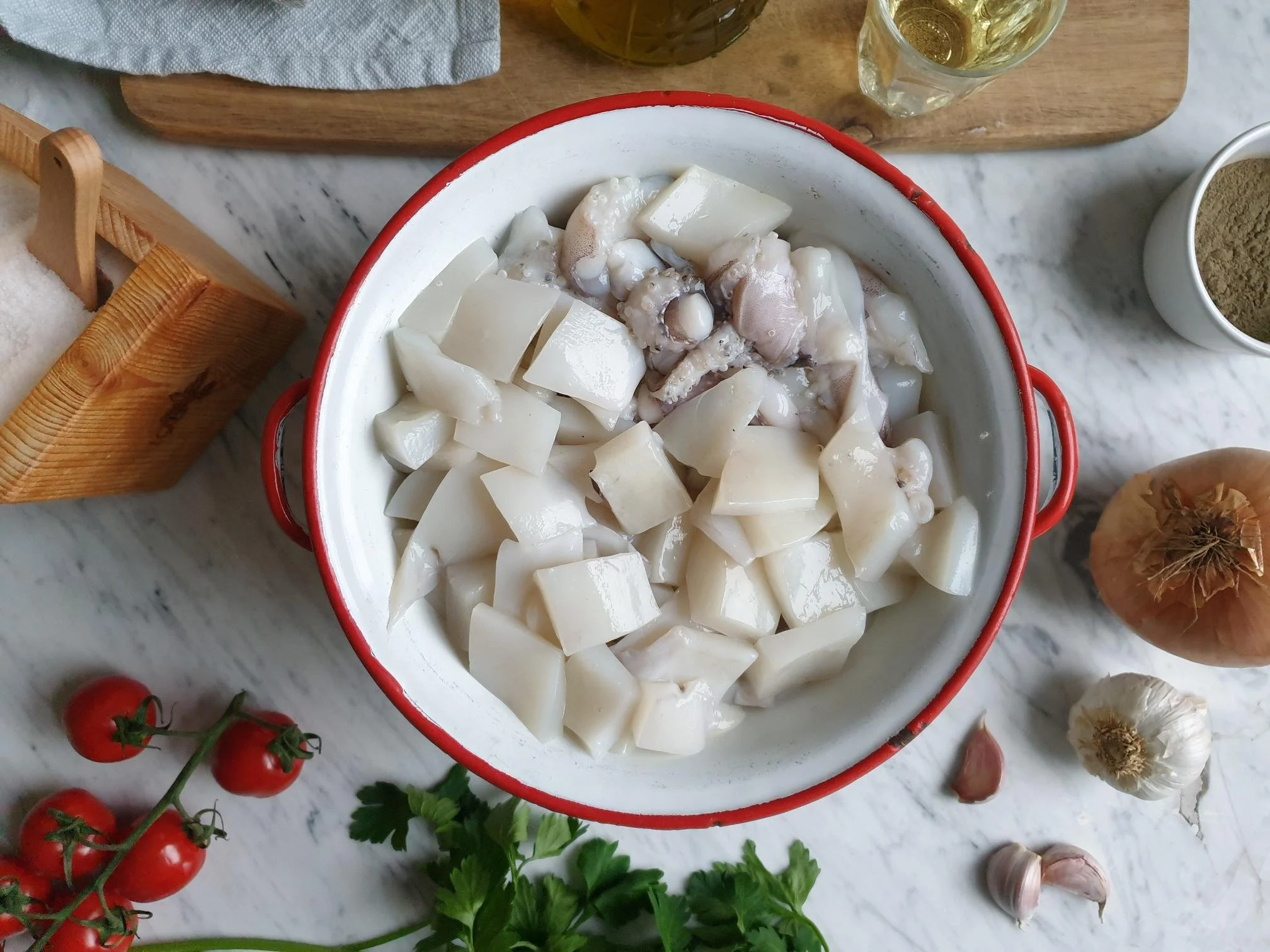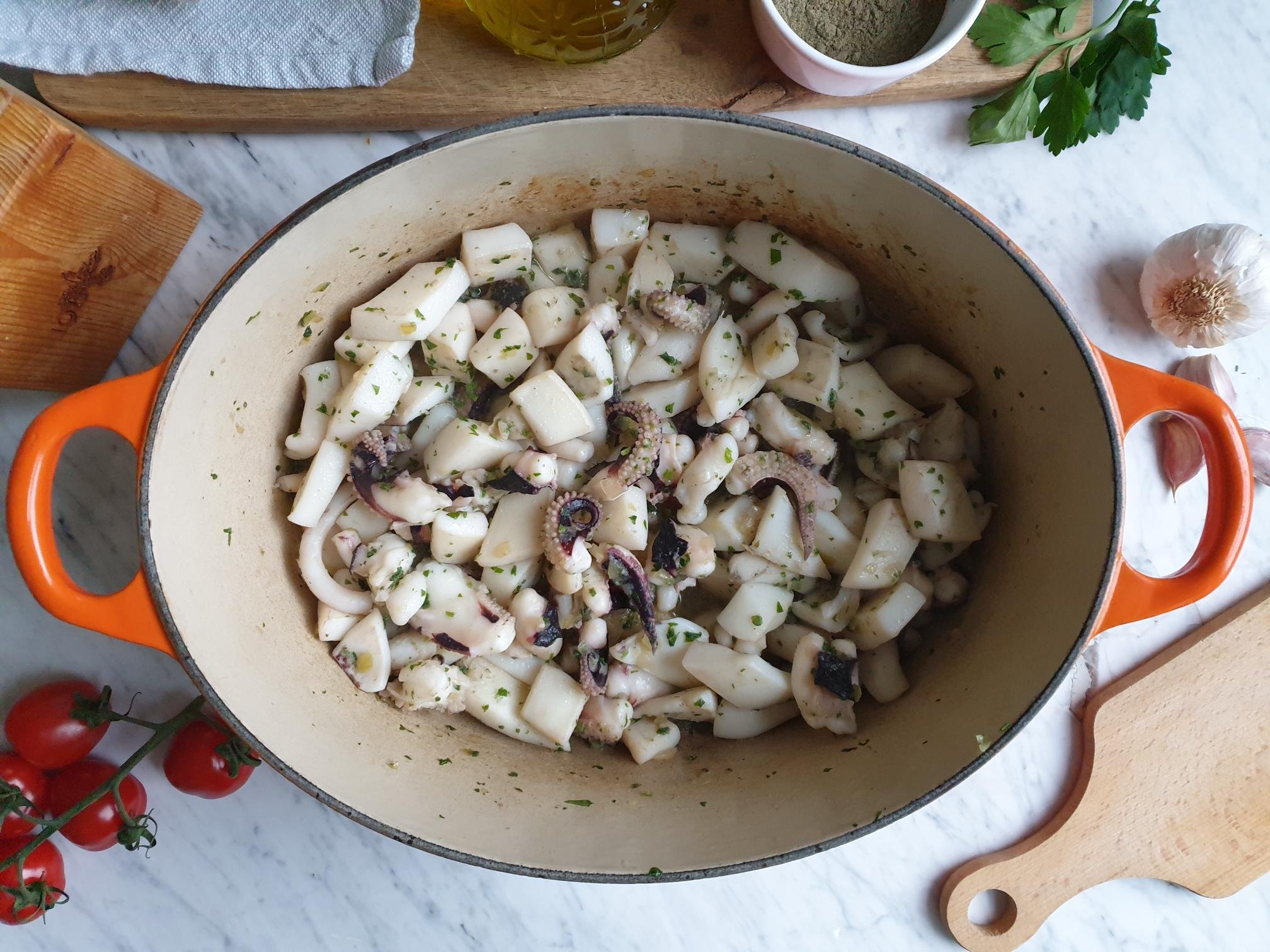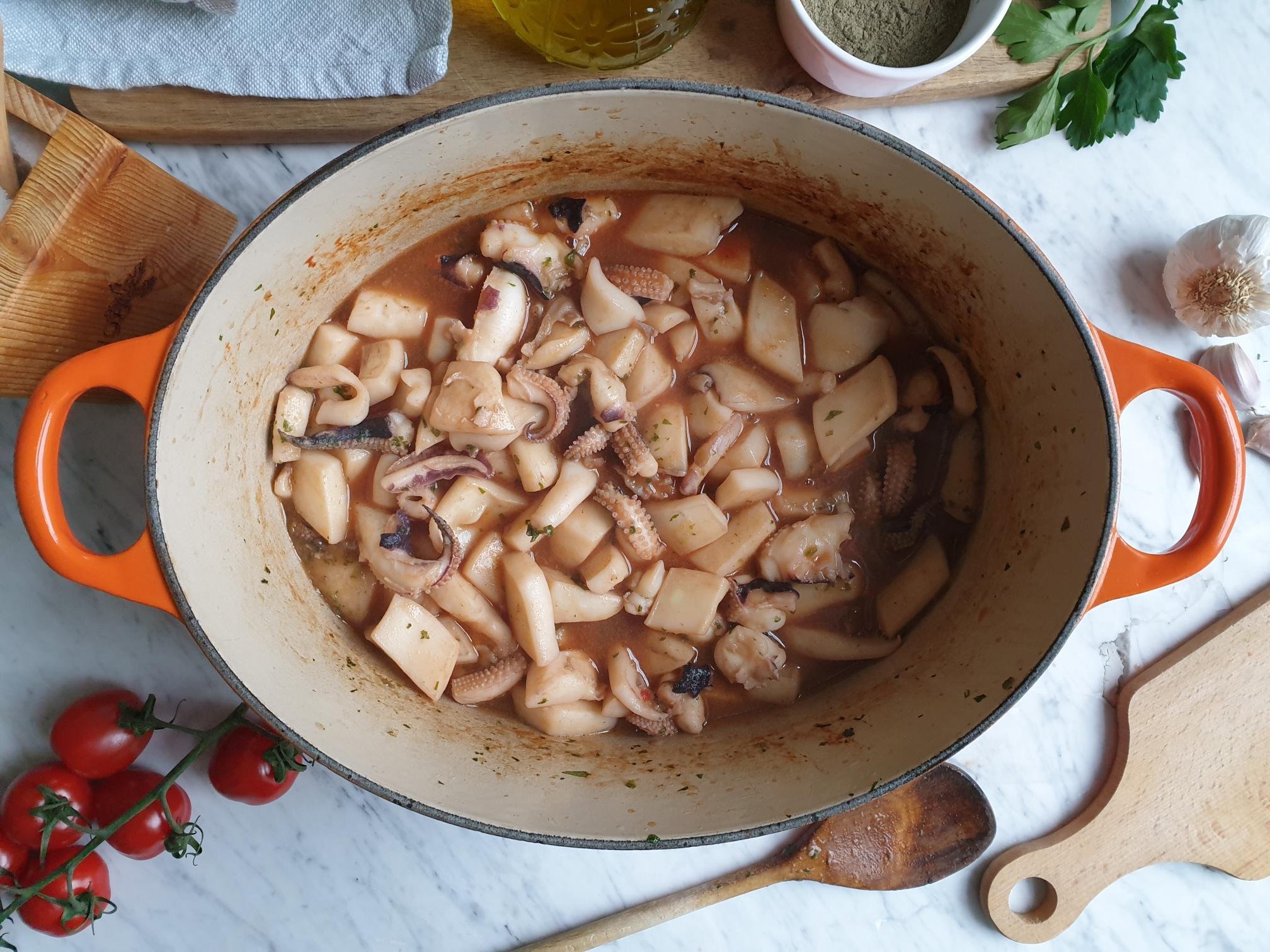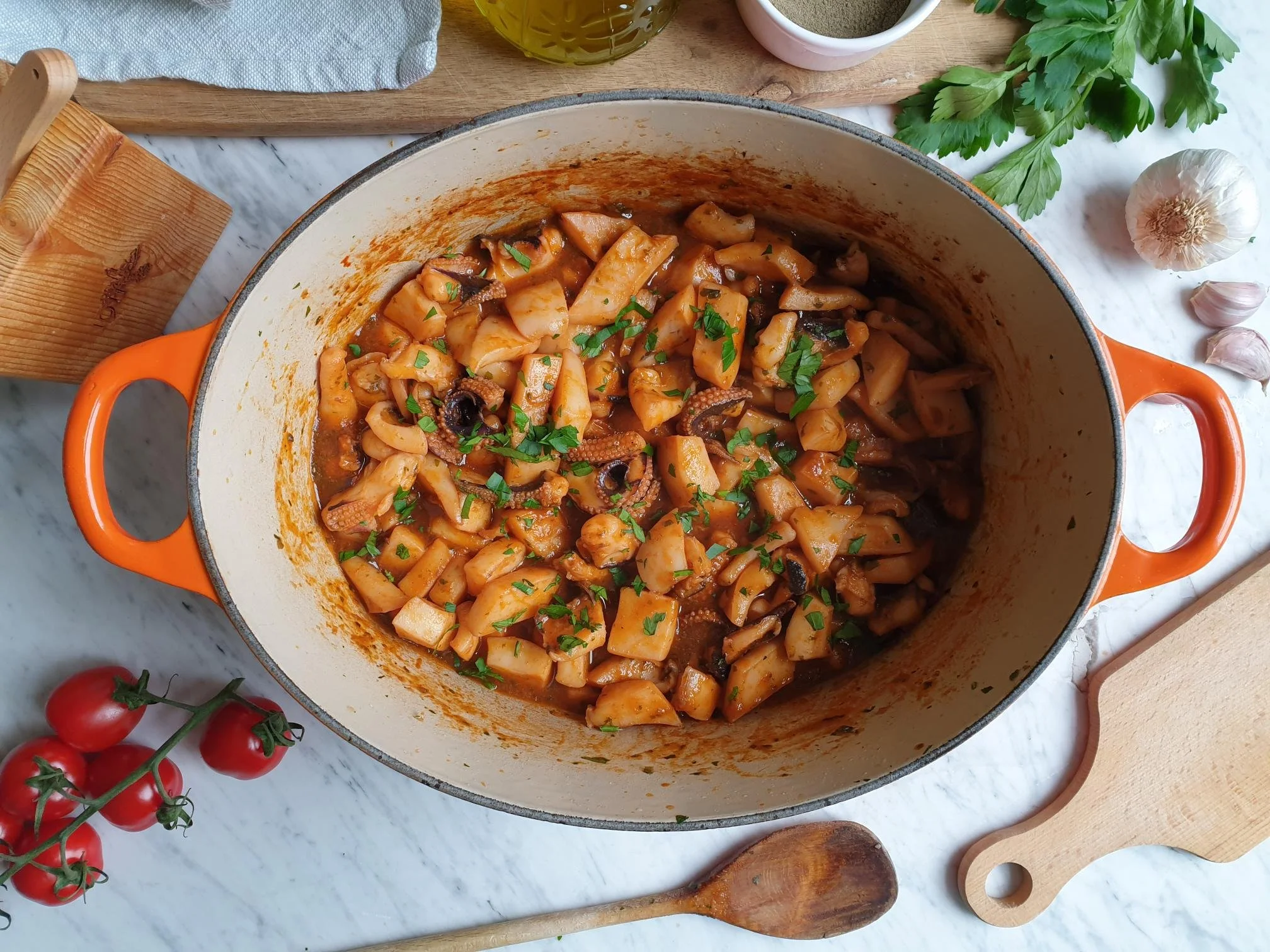Grilled Squid (Calamari) Istrian Recipe
Tender and succulent, grilled or pan-fried squid can be enjoyed all year round, but it is particularly popular during the hot weather, it is light and fresh and makes a perfect summer meal.
This classic Mediterranean dish can be served as an appetizer or part of a main dish, and it is incredibly easy and fast to make.
Some people are put off and maybe a bit reluctant cooking with squid maybe as a result of experiencing chewy and rubbery tasting squid.
For the squid to be tender it needs to be cooked very fast for only a few minutes or slow cooked, at least 30 minutes, and seasoned with sea salt at the very end.
Observe these two tricks and successful end result is guaranteed. For a very tender squid I have been suggested to soak the squid in milk prior cooking (I have not tried this yet).
This dish is very popular along the Slovenian coast and can be found on menus in just about any type of restaurant. Locals refer to this dish as Kalamari na žaru or called Lignji na žaru in standard Slovenian.
It is traditionally served with a simple garlic, parsley and olive oil sauce referred to by the locals as Tržaska omaka (Trieste sauce, Triestine sauce or salsa Triestina).
I am sharing here the family recipe for this seriously delicious grilled squid, after you try it, you will be checking out the fish counter for fresh squid a bit more often!
Recipe
Ingredients
Serves 4 as a starter or 2 as a main with a side dish
1kg fresh squid, tubes and tentacles, cleaned (if daunted by the task of cleaning the squid yourself ask your fishmonger to do it for you). Alternatively you can use store bought already cleaned frozen squid, make sure it is defrosted safely before using.
extra virgin olive oil, a generous drizzle
sea salt
black pepper, optional
1 lemon, cut in wedges to serve, optional
For the sauce, optional
1 handful of fresh flat leaf parsley (about 10g) washed, dried and very finely chopped
2 cloves of garlic or to taste, very finely chopped, as finely as you can
3-5 Tbsp extra virgin olive oil
Method
Rinse well already cleaned squid under cold running water (make sure you rinse the inside of the tubes as well).
Dry well with kitchen paper and place in a dish, plate or bowl. Add a generous drizzle of extra virgin olive oil, toss the squid and leave to rest for about 15 minutes. Set aside.
While the squid is marinating in olive oil make the sauce if using. Place very finely chopped garlic and parsley in a small bowl and add extra virgin olive oil, mix well and set aside until needed. The quantities for this simple sauce in this recipe are approximate and you can adjust it and tweak it to your liking. Add more garlic if you wish, omit garlic altogether if not keen having raw garlic in the sauce, add more oil etc.
Take a griddle or regular non stick pan and heat very well.
When is very hot place the squid tubes and tentacles in a pan and cook for about 5 minutes, two and a half minutes on each side.
If you see the squid is drying out a bit just drizzle or brush a bit more olive oil.Season with sea salt at the very end.
Place the little bowl with garlic, parsley and olive oil sauce on the table, so everyone can spoon a bit of sauce on top of grilled squid if desired, and lemon wedges.
Serve grilled squid with boiled potatoes, chard with potatoes, chips or simply with some rustic bread. You can also serve it on a bed of rocket and make it into a main seafood salad dish.
Just a thought
The sauce should always be offered separately for everyone to be given a choice to spoon it over grilled squid if desired.
If you are left over with the sauce, you can spoon it on other types of grilled or pan-fried fish, great on grilled scallops and other sea food like prawns or langoustines.
Although not part of local costume this sauce can be spooned over grilled meat or pizza.


